

Five new types of tourism to get to know in 2023
31 august 2023, travelling makes you feel alive and is one of the favourite moments in everyone’s life. we travel for different reasons, and each of us sets off searching for different things. therefore, various types of tourism have developed over the years. in this article, we will take a look at what are the trends and new forms of tourism in 2022 to inspire your next business or to help you choose your next travel destination, table of contents.
- Tourist and traveller
Types of tourism
Domestic tourism, wellness tourism, culinary tourism, experiential tourism, sustainable tourism, frequently asked questions, difference between tourist and traveller.
Before analysing the various types of tourism, let us see the difference between tourist and traveller : a helpful distinction that will help us better understand the latest forms of tourism.
The tourist follows an itinerary organised by others or found on the Internet, where there is no room for schedule changes. He experiences the unexpected as a problem to be solved. He travels in groups or participates in guided tours. He stays in hotels and goes around with his camera around his neck. He eats food he knows and does not go out of his comfort zone.
On the other hand, the traveller goes to discover a place to lose himself in it and to experience it. He studies his destination and organises a travel itinerary based on his interests. Unlike the tourist, the traveller follows his instincts, welcomes the unexpected and turns it into a moment of personal growth. He talks to locals, eats local cuisine and prefers the kind of travel and accommodation that allows him to get to know his destination, such as guest houses .
As we have seen, the difference between tourists and travellers is stark, but only if one uses a highly characterised idea of the two figures. In reality, the difference is much more nuanced, and tourists and travellers may be more similar than one imagines.
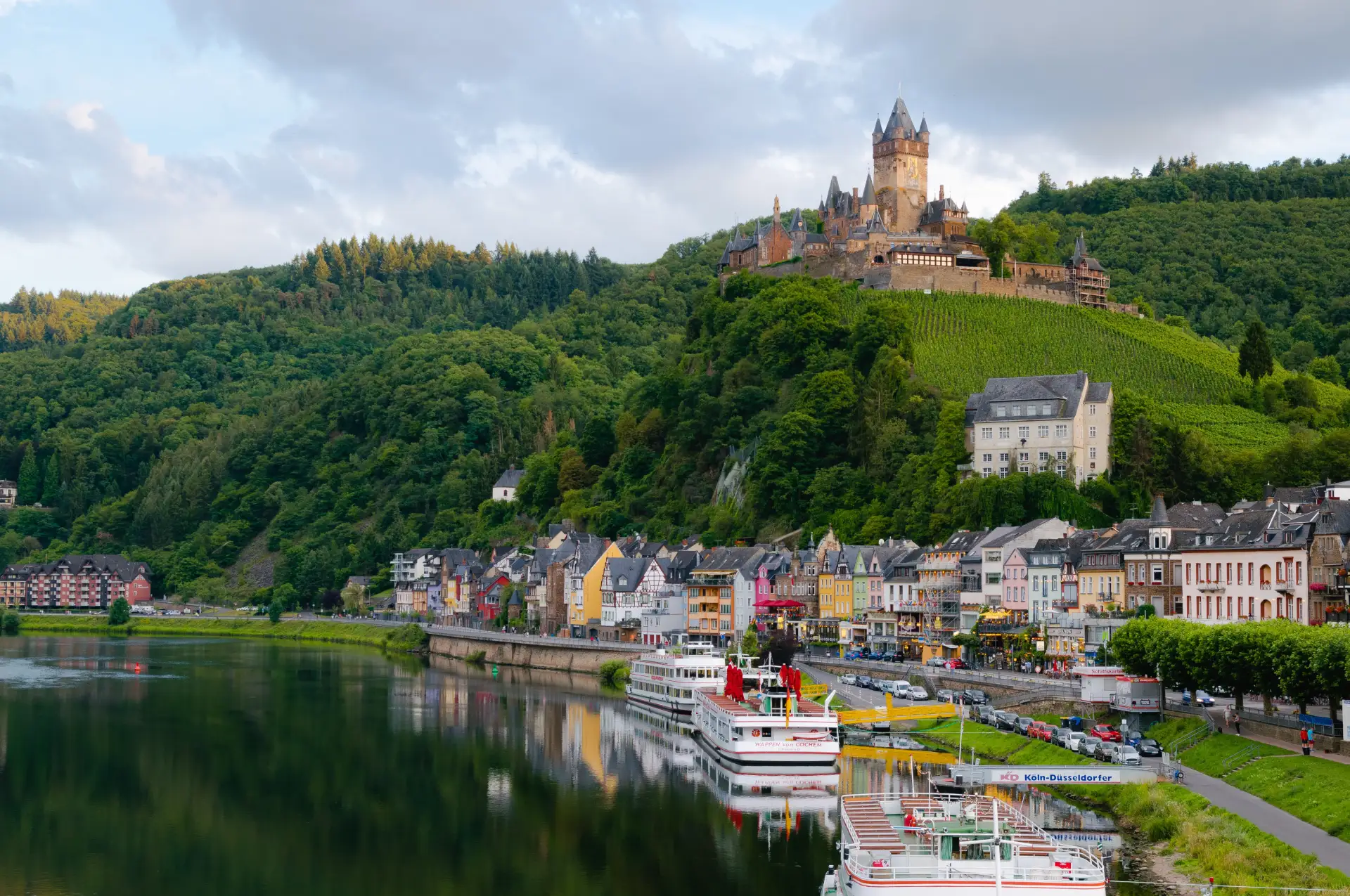
This has developed different types of tourism, such as:
- Rural tourism – refers to all those trips that take place in rural or natural locations.
- Cultural tourism – is aimed at discovering art cities.
- Beach tourism – towards seaside and seaside resorts.
- Religious tourism – towards places of worship.
Like all industries, the travel industry is influenced by fads and trends that come along and change the way we think and act.
Thus we realised that taking a 12-hour flight to a south-east Asian country is unnecessary to marvel at the world’s wonders. Domestic tourism will continue to be very strong in the years to come because it allows people to discover their country from the point of view of culture, landscape and much more.
Spending a few days relaxing at a spa is the best choice for those seeking a wellness holiday. The benefits and curative functions of thermal springs have been known since Roman times, so much so that we still use the word spa, which derives from the Latin“salus per aquam”.
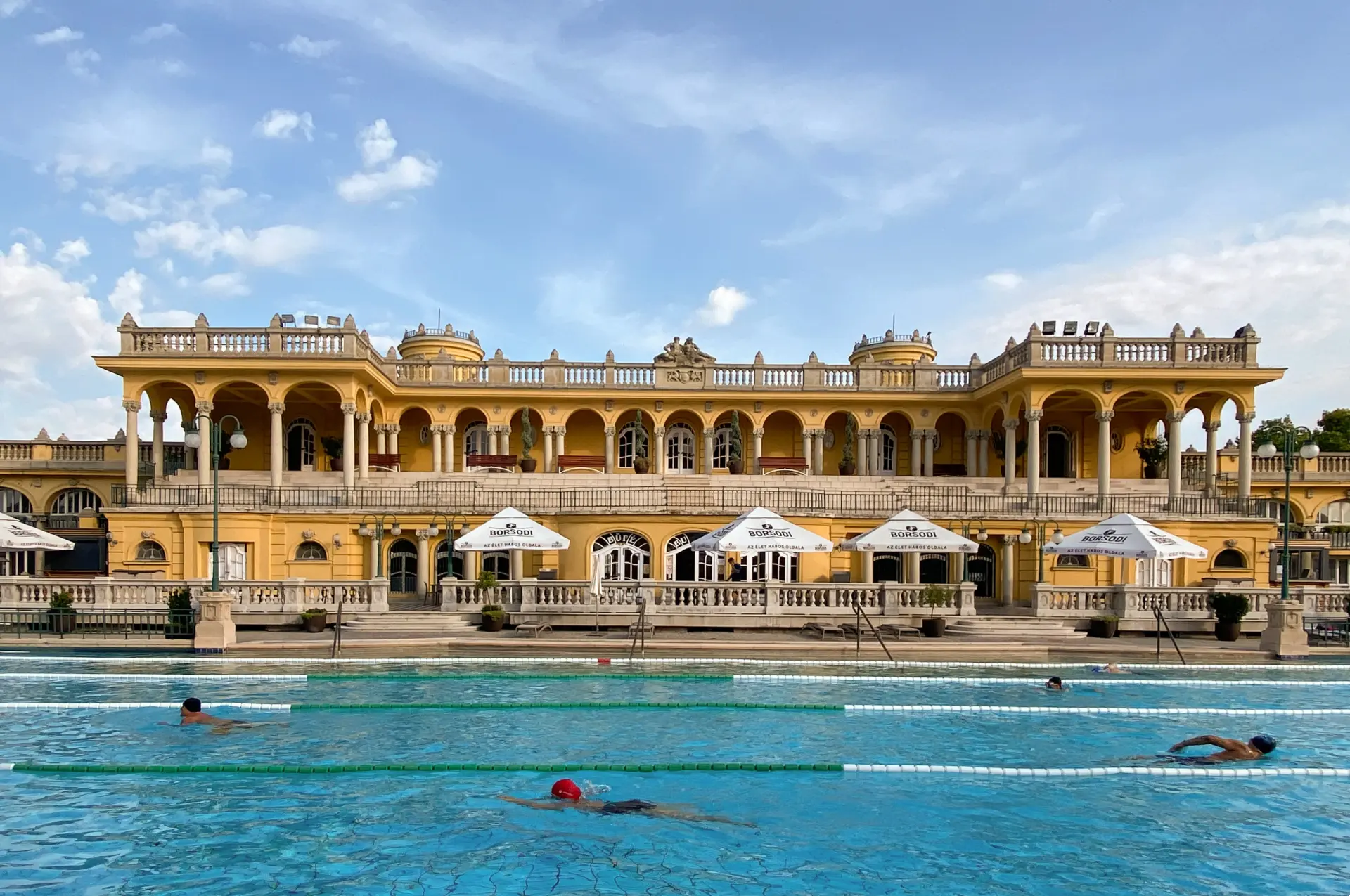
Culinary tourism, also known as food tourism, is a type of tourism that uses food and wine to discover a place’s culture and history . Food and wine tourism is an all-around experience that relies mainly on the senses of taste and smell. Eating local dishes, sampling typical products at farms and participating in cooking classes are increasingly sought-after experiences for travellers.
If you own an accommodation, consider offering a similar experience to make your property stand out from the competition. In particular, countries with a great culinary tradition, such as France and Italy, are these travellers’ favourite destinations.
If you’re inspired to provide a unique culinary experience at your own establishment, creating a comprehensive Bed and Breakfast business plan is the first step towards turning this idea into a reality.
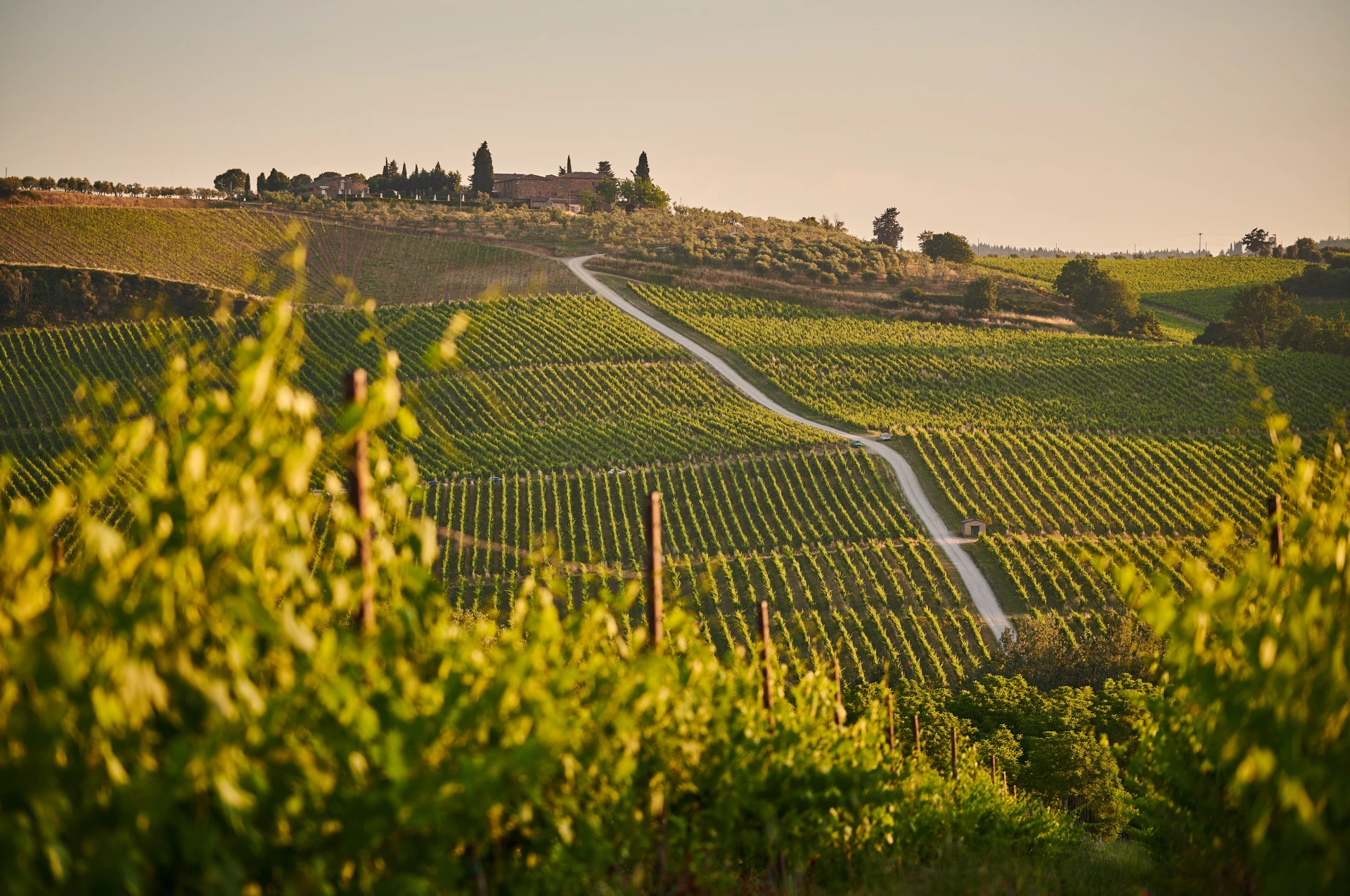
For this reason, more and more people are embarking on this journey, even solo, young and old. The most important thing is to travel and experience that sense of freedom only travelling can give, no matter with whom or where. Feeding elephants in Thailand, taking a hot-air balloon ride in Cappadocia or waking up in a tent in the middle of the desert are just a few examples of the most popular experiences searched for and posted on social media.
🗺 What is domestic tourism?
⛲️ what is wellness tourism, 🍷 what is culinary tourism, 🏞 what is experiential tourism, 🏝what is sustainable tourism, book a free demo.
Book a Demo to see how Octorate can simplify the management of your Hotel, B&B, Vacation rental, Apartment or Hostel.
Roberta Magro Malosso
You might be interested in:.

Bed and Breakfast Name Ideas: How to Choose the Best in 2024
by Alin Grigoras | Feb 21, 2024 | Vacation Rental
Share this article on Social Networks:In the world of hospitality and tourism, every detail matters, and...

Create the Perfect B&B Business Plan: The Ultimate Guide
by Alin Grigoras | Oct 25, 2023 | Vacation Rental , Non categorizzato
Share this article on Social Networks:Opening a bed and breakfast can be a dream, but without good...

What is a hotel rooming list, and how to improve it?
by Giulia Ciullini | Aug 28, 2023 | PMS , Hotel Division
Share this article on social networks: Let’s find out what a rooming list is and which tool can help to...
Privacy Overview
- Hospitality Industry
4 new types of tourism
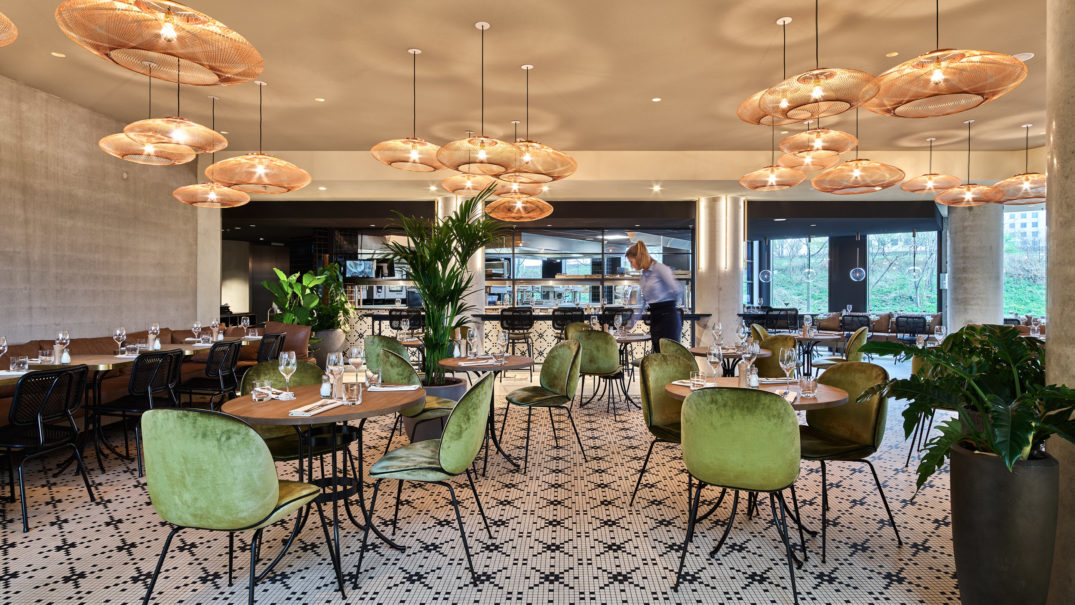
June 28, 2019 •
4 min reading
Traveling is one of the most effective ways of exploring a place, culture or a destination. There are various types of tourism that you must have heard of: Leisure, business, sports, adventure and more. This is an article that represents 4 new types of tourism.
1. Sustainable tourism
People everywhere have been alarmed about the climatic conditions currently taking place all around the world and some tourism organizations are contributing their share of awareness regarding the subject. More and more people are being conscious about environmental health hazards and its impacts. People not only want to leave a long-term positive impact, but also contribute as much effort as they can to the local community when they are traveling. Many popular hotels in Europe are becoming eco-friendly , giving travelers an opportunity to travel healthy - these are referred to as Ecotel Hotels.
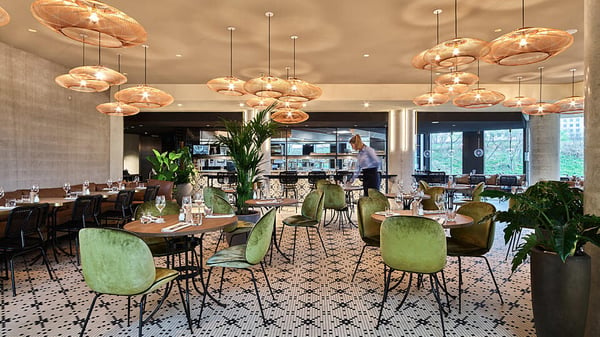
2. Food tourism
Food tourism which is also known as culinary tourism, is the building block of any touristic destination or location that contributes to tourism. Food also represents the culture of a destination that delivers beauty and entertainment as their primary source of interest. More precisely, travelers might judge a tourist attraction based on the local dishes because food is tightly bound to the corresponding tourist spot. With that said, “food tourism” does not refer to eating only. It is the collection of activities such as; vegetable farming, produce market, tasting sessions, etc. The rise of food tourism is trending rapidly and should be planned carefully and efficiently. Tour radar allows you to explore and try culinary experiences across the globe.

3. Experiential tourism
Experiential travel, also known as immersion travel, is a form of tourism in which people focus on experiencing a country, city or particular place by actively and meaningfully engaging with its history, people, culture, food and environment. There’s been growing demand around culinary travel, cultural exploration, and activity-based travel experiences for a while now. So, before it runs its course, which it never will, you might want to try this type of tourism. Make wine in Bordeaux, cook street food in Vietnam, and go hiking in Patagonia are some of the famous examples of experiential tourism.
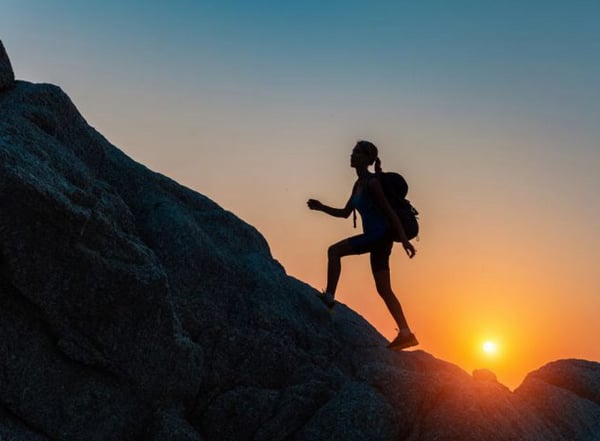
4. Wellness tourism
Due to increasing work schedules, and exhausting jobs, wellness tourism has become an escape route for many tourists. While wellness travel, referring to tourism promoting health and well-being through physical, psychological, or spiritual activities, has come into existence for a while, it’s only recently become massively popular. According to a travel column conducted by booking.com, 48% of travelers are willing to take holidays as a moment to “reflect and make better life choices”, and nearly 40% are interested in health or well-being travel experience. Obviously, recharging themselves by going for wellness travels would become one of the most desirable choices. This has led to an opportunity for travel agencies to diversify product line and discover a niche in the outstandingly competitive landscape. Would you want to take a break and visit beautiful destinations for wellness ?
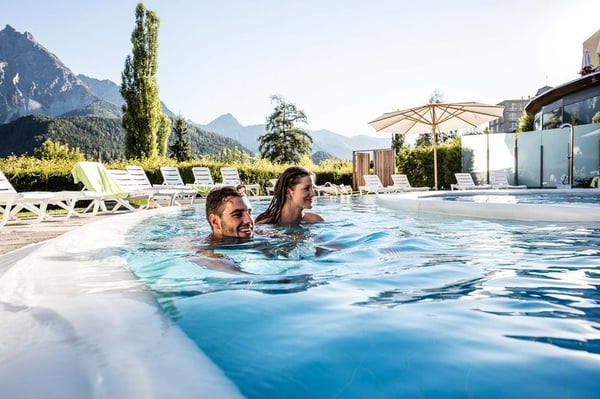
Senior Lecturer at EHL Passugg
Keep reading
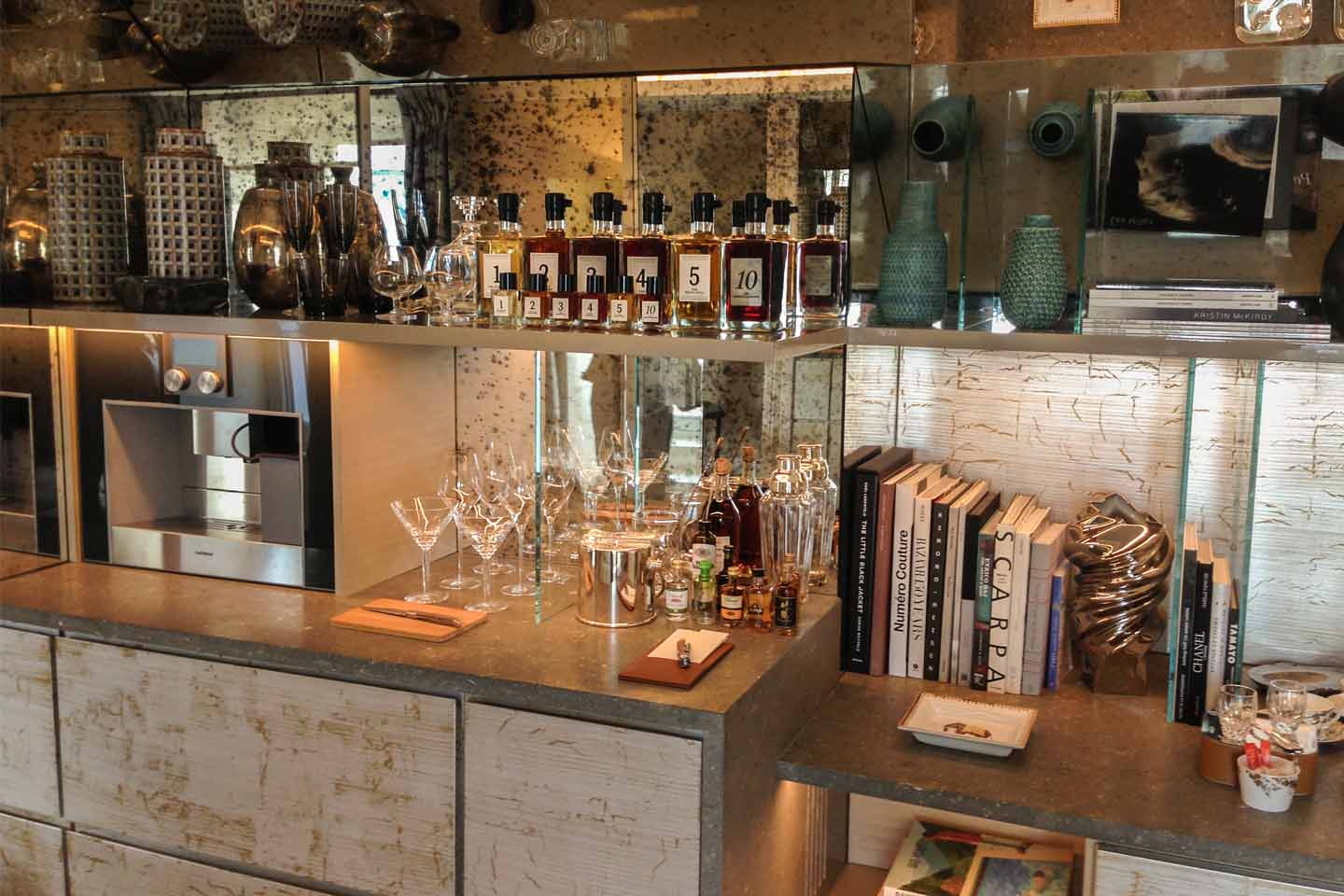
Luxury hotels and a ‘sense of place’: Brand identity and experiences
Apr 24, 2024

Luxury hotels and a ‘sense of place’: The branding imperative
Apr 17, 2024

Navigating challenges of AI and maximizing value in the service sector
Apr 16, 2024
Do you want to learn how to create unique guest experiences?
By earning our two top hospitality degrees, you will enjoy the hotel management education of the future. Learn more and download the brochure.
This is a title
This is a text
- Bachelor Degree in Hospitality
- Pre-University Courses
- Master’s Degrees & MBA Programs
- Executive Education
- Online Courses
- Swiss Professional Diplomas
- Culinary Certificates & Courses
- Fees & Scholarships
- Bachelor in Hospitality Admissions
- EHL Campus Lausanne
- EHL Campus (Singapore)
- EHL Campus Passugg
- Host an Event at EHL
- Contact our program advisors
- Join our Open Days
- Meet EHL Representatives Worldwide
- Chat with our students
- Why Study Hospitality?
- Careers in Hospitality
- Awards & Rankings
- EHL Network of Excellence
- Career Development Resources
- EHL Hospitality Business School
- Route de Berne 301 1000 Lausanne 25 Switzerland
- Accreditations & Memberships
- Privacy Policy
- Legal Terms
© 2024 EHL Holding SA, Switzerland. All rights reserved.
- English (CA)
- Deutsch (DE)
- Deutsch (CH)
8 types of tourism that you need to know
The three tourism categories, domestic tourism, inbound tourism, outbound tourism, the 8 types of tourism according to motivation, business tourism.
- Meet with business partners or prospects
- Attend an event, conference, or trade show
- Visit another office location of the same company
?)
See how to save money on business travel
Leisure tourism, shopping tourism, cultural tourism, sports tourism, rural tourism, mountain tourism, urban tourism, many people travel – but for completely different reasons.
?)
Make business travel simpler. Forever.
- See our platform in action . Trusted by thousands of companies worldwide, TravelPerk makes business travel simpler to manage with more flexibility, full control of spending with easy reporting, and options to offset your carbon footprint.
- Find hundreds of resources on all things business travel, from tips on traveling more sustainably, to advice on setting up a business travel policy, and managing your expenses. Our latest e-books and blog posts have you covered.
- Never miss another update. Stay in touch with us on social for the latest product releases, upcoming events, and articles fresh off the press.
?)
5 inefficient processes affecting your business and how to fix them
?)
Duty of care in the workplace: everything you need to know
?)
CEO Roles and Responsibilities: conquer your role as CEO
- Business Travel Management
- Offset Carbon Footprint
- Flexible travel
- Travelperk Sustainability Policy
- Corporate Travel Resources
- Corporate Travel Glossary
- For Travel Managers
- For Finance Teams
- For Travelers
- Thoughts from TravelPerk
- Careers Hiring
- User Reviews
- Integrations
- Privacy Center
- Help Center
- Privacy Policy
- Cookies Policy
- Modern Slavery Act | Statement
- Supplier Code of Conduct
The future of tourism: Bridging the labor gap, enhancing customer experience
As travel resumes and builds momentum, it’s becoming clear that tourism is resilient—there is an enduring desire to travel. Against all odds, international tourism rebounded in 2022: visitor numbers to Europe and the Middle East climbed to around 80 percent of 2019 levels, and the Americas recovered about 65 percent of prepandemic visitors 1 “Tourism set to return to pre-pandemic levels in some regions in 2023,” United Nations World Tourism Organization (UNWTO), January 17, 2023. —a number made more significant because it was reached without travelers from China, which had the world’s largest outbound travel market before the pandemic. 2 “ Outlook for China tourism 2023: Light at the end of the tunnel ,” McKinsey, May 9, 2023.
Recovery and growth are likely to continue. According to estimates from the World Tourism Organization (UNWTO) for 2023, international tourist arrivals could reach 80 to 95 percent of prepandemic levels depending on the extent of the economic slowdown, travel recovery in Asia–Pacific, and geopolitical tensions, among other factors. 3 “Tourism set to return to pre-pandemic levels in some regions in 2023,” United Nations World Tourism Organization (UNWTO), January 17, 2023. Similarly, the World Travel & Tourism Council (WTTC) forecasts that by the end of 2023, nearly half of the 185 countries in which the organization conducts research will have either recovered to prepandemic levels or be within 95 percent of full recovery. 4 “Global travel and tourism catapults into 2023 says WTTC,” World Travel & Tourism Council (WTTC), April 26, 2023.
Longer-term forecasts also point to optimism for the decade ahead. Travel and tourism GDP is predicted to grow, on average, at 5.8 percent a year between 2022 and 2032, outpacing the growth of the overall economy at an expected 2.7 percent a year. 5 Travel & Tourism economic impact 2022 , WTTC, August 2022.
So, is it all systems go for travel and tourism? Not really. The industry continues to face a prolonged and widespread labor shortage. After losing 62 million travel and tourism jobs in 2020, labor supply and demand remain out of balance. 6 “WTTC research reveals Travel & Tourism’s slow recovery is hitting jobs and growth worldwide,” World Travel & Tourism Council, October 6, 2021. Today, in the European Union, 11 percent of tourism jobs are likely to go unfilled; in the United States, that figure is 7 percent. 7 Travel & Tourism economic impact 2022 : Staff shortages, WTTC, August 2022.
There has been an exodus of tourism staff, particularly from customer-facing roles, to other sectors, and there is no sign that the industry will be able to bring all these people back. 8 Travel & Tourism economic impact 2022 : Staff shortages, WTTC, August 2022. Hotels, restaurants, cruises, airports, and airlines face staff shortages that can translate into operational, reputational, and financial difficulties. If unaddressed, these shortages may constrain the industry’s growth trajectory.
The current labor shortage may have its roots in factors related to the nature of work in the industry. Chronic workplace challenges, coupled with the effects of COVID-19, have culminated in an industry struggling to rebuild its workforce. Generally, tourism-related jobs are largely informal, partly due to high seasonality and weak regulation. And conditions such as excessively long working hours, low wages, a high turnover rate, and a lack of social protection tend to be most pronounced in an informal economy. Additionally, shift work, night work, and temporary or part-time employment are common in tourism.
The industry may need to revisit some fundamentals to build a far more sustainable future: either make the industry more attractive to talent (and put conditions in place to retain staff for longer periods) or improve products, services, and processes so that they complement existing staffing needs or solve existing pain points.
One solution could be to build a workforce with the mix of digital and interpersonal skills needed to keep up with travelers’ fast-changing requirements. The industry could make the most of available technology to provide customers with a digitally enhanced experience, resolve staff shortages, and improve working conditions.
Would you like to learn more about our Travel, Logistics & Infrastructure Practice ?
Complementing concierges with chatbots.
The pace of technological change has redefined customer expectations. Technology-driven services are often at customers’ fingertips, with no queues or waiting times. By contrast, the airport and airline disruption widely reported in the press over the summer of 2022 points to customers not receiving this same level of digital innovation when traveling.
Imagine the following travel experience: it’s 2035 and you start your long-awaited honeymoon to a tropical island. A virtual tour operator and a destination travel specialist booked your trip for you; you connected via videoconference to make your plans. Your itinerary was chosen with the support of generative AI , which analyzed your preferences, recommended personalized travel packages, and made real-time adjustments based on your feedback.
Before leaving home, you check in online and QR code your luggage. You travel to the airport by self-driving cab. After dropping off your luggage at the self-service counter, you pass through security and the biometric check. You access the premier lounge with the QR code on the airline’s loyalty card and help yourself to a glass of wine and a sandwich. After your flight, a prebooked, self-driving cab takes you to the resort. No need to check in—that was completed online ahead of time (including picking your room and making sure that the hotel’s virtual concierge arranged for red roses and a bottle of champagne to be delivered).
While your luggage is brought to the room by a baggage robot, your personal digital concierge presents the honeymoon itinerary with all the requested bookings. For the romantic dinner on the first night, you order your food via the restaurant app on the table and settle the bill likewise. So far, you’ve had very little human interaction. But at dinner, the sommelier chats with you in person about the wine. The next day, your sightseeing is made easier by the hotel app and digital guide—and you don’t get lost! With the aid of holographic technology, the virtual tour guide brings historical figures to life and takes your sightseeing experience to a whole new level. Then, as arranged, a local citizen meets you and takes you to their home to enjoy a local family dinner. The trip is seamless, there are no holdups or snags.
This scenario features less human interaction than a traditional trip—but it flows smoothly due to the underlying technology. The human interactions that do take place are authentic, meaningful, and add a special touch to the experience. This may be a far-fetched example, but the essence of the scenario is clear: use technology to ease typical travel pain points such as queues, misunderstandings, or misinformation, and elevate the quality of human interaction.
Travel with less human interaction may be considered a disruptive idea, as many travelers rely on and enjoy the human connection, the “service with a smile.” This will always be the case, but perhaps the time is right to think about bringing a digital experience into the mix. The industry may not need to depend exclusively on human beings to serve its customers. Perhaps the future of travel is physical, but digitally enhanced (and with a smile!).
Digital solutions are on the rise and can help bridge the labor gap
Digital innovation is improving customer experience across multiple industries. Car-sharing apps have overcome service-counter waiting times and endless paperwork that travelers traditionally had to cope with when renting a car. The same applies to time-consuming hotel check-in, check-out, and payment processes that can annoy weary customers. These pain points can be removed. For instance, in China, the Huazhu Hotels Group installed self-check-in kiosks that enable guests to check in or out in under 30 seconds. 9 “Huazhu Group targets lifestyle market opportunities,” ChinaTravelNews, May 27, 2021.
Technology meets hospitality
In 2019, Alibaba opened its FlyZoo Hotel in Huangzhou, described as a “290-room ultra-modern boutique, where technology meets hospitality.” 1 “Chinese e-commerce giant Alibaba has a hotel run almost entirely by robots that can serve food and fetch toiletries—take a look inside,” Business Insider, October 21, 2019; “FlyZoo Hotel: The hotel of the future or just more technology hype?,” Hotel Technology News, March 2019. The hotel was the first of its kind that instead of relying on traditional check-in and key card processes, allowed guests to manage reservations and make payments entirely from a mobile app, to check-in using self-service kiosks, and enter their rooms using facial-recognition technology.
The hotel is run almost entirely by robots that serve food and fetch toiletries and other sundries as needed. Each guest room has a voice-activated smart assistant to help guests with a variety of tasks, from adjusting the temperature, lights, curtains, and the TV to playing music and answering simple questions about the hotel and surroundings.
The hotel was developed by the company’s online travel platform, Fliggy, in tandem with Alibaba’s AI Labs and Alibaba Cloud technology with the goal of “leveraging cutting-edge tech to help transform the hospitality industry, one that keeps the sector current with the digital era we’re living in,” according to the company.
Adoption of some digitally enhanced services was accelerated during the pandemic in the quest for safer, contactless solutions. During the Winter Olympics in Beijing, a restaurant designed to keep physical contact to a minimum used a track system on the ceiling to deliver meals directly from the kitchen to the table. 10 “This Beijing Winter Games restaurant uses ceiling-based tracks,” Trendhunter, January 26, 2022. Customers around the world have become familiar with restaurants using apps to display menus, take orders, and accept payment, as well as hotels using robots to deliver luggage and room service (see sidebar “Technology meets hospitality”). Similarly, theme parks, cinemas, stadiums, and concert halls are deploying digital solutions such as facial recognition to optimize entrance control. Shanghai Disneyland, for example, offers annual pass holders the option to choose facial recognition to facilitate park entry. 11 “Facial recognition park entry,” Shanghai Disney Resort website.
Automation and digitization can also free up staff from attending to repetitive functions that could be handled more efficiently via an app and instead reserve the human touch for roles where staff can add the most value. For instance, technology can help customer-facing staff to provide a more personalized service. By accessing data analytics, frontline staff can have guests’ details and preferences at their fingertips. A trainee can become an experienced concierge in a short time, with the help of technology.
Apps and in-room tech: Unused market potential
According to Skift Research calculations, total revenue generated by guest apps and in-room technology in 2019 was approximately $293 million, including proprietary apps by hotel brands as well as third-party vendors. 1 “Hotel tech benchmark: Guest-facing technology 2022,” Skift Research, November 2022. The relatively low market penetration rate of this kind of tech points to around $2.4 billion in untapped revenue potential (exhibit).
Even though guest-facing technology is available—the kind that can facilitate contactless interactions and offer travelers convenience and personalized service—the industry is only beginning to explore its potential. A report by Skift Research shows that the hotel industry, in particular, has not tapped into tech’s potential. Only 11 percent of hotels and 25 percent of hotel rooms worldwide are supported by a hotel app or use in-room technology, and only 3 percent of hotels offer keyless entry. 12 “Hotel tech benchmark: Guest-facing technology 2022,” Skift Research, November 2022. Of the five types of technology examined (guest apps and in-room tech; virtual concierge; guest messaging and chatbots; digital check-in and kiosks; and keyless entry), all have relatively low market-penetration rates (see sidebar “Apps and in-room tech: Unused market potential”).
While apps, digitization, and new technology may be the answer to offering better customer experience, there is also the possibility that tourism may face competition from technological advances, particularly virtual experiences. Museums, attractions, and historical sites can be made interactive and, in some cases, more lifelike, through AR/VR technology that can enhance the physical travel experience by reconstructing historical places or events.
Up until now, tourism, arguably, was one of a few sectors that could not easily be replaced by tech. It was not possible to replicate the physical experience of traveling to another place. With the emerging metaverse , this might change. Travelers could potentially enjoy an event or experience from their sofa without any logistical snags, and without the commitment to traveling to another country for any length of time. For example, Google offers virtual tours of the Pyramids of Meroë in Sudan via an immersive online experience available in a range of languages. 13 Mariam Khaled Dabboussi, “Step into the Meroë pyramids with Google,” Google, May 17, 2022. And a crypto banking group, The BCB Group, has created a metaverse city that includes representations of some of the most visited destinations in the world, such as the Great Wall of China and the Statue of Liberty. According to BCB, the total cost of flights, transfers, and entry for all these landmarks would come to $7,600—while a virtual trip would cost just over $2. 14 “What impact can the Metaverse have on the travel industry?,” Middle East Economy, July 29, 2022.
The metaverse holds potential for business travel, too—the meeting, incentives, conferences, and exhibitions (MICE) sector in particular. Participants could take part in activities in the same immersive space while connecting from anywhere, dramatically reducing travel, venue, catering, and other costs. 15 “ Tourism in the metaverse: Can travel go virtual? ,” McKinsey, May 4, 2023.
The allure and convenience of such digital experiences make offering seamless, customer-centric travel and tourism in the real world all the more pressing.

Three innovations to solve hotel staffing shortages
Is the future contactless.
Given the advances in technology, and the many digital innovations and applications that already exist, there is potential for businesses across the travel and tourism spectrum to cope with labor shortages while improving customer experience. Process automation and digitization can also add to process efficiency. Taken together, a combination of outsourcing, remote work, and digital solutions can help to retain existing staff and reduce dependency on roles that employers are struggling to fill (exhibit).
Depending on the customer service approach and direct contact need, we estimate that the travel and tourism industry would be able to cope with a structural labor shortage of around 10 to 15 percent in the long run by operating more flexibly and increasing digital and automated efficiency—while offering the remaining staff an improved total work package.
Outsourcing and remote work could also help resolve the labor shortage
While COVID-19 pushed organizations in a wide variety of sectors to embrace remote work, there are many hospitality roles that rely on direct physical services that cannot be performed remotely, such as laundry, cleaning, maintenance, and facility management. If faced with staff shortages, these roles could be outsourced to third-party professional service providers, and existing staff could be reskilled to take up new positions.
In McKinsey’s experience, the total service cost of this type of work in a typical hotel can make up 10 percent of total operating costs. Most often, these roles are not guest facing. A professional and digital-based solution might become an integrated part of a third-party service for hotels looking to outsource this type of work.
One of the lessons learned in the aftermath of COVID-19 is that many tourism employees moved to similar positions in other sectors because they were disillusioned by working conditions in the industry . Specialist multisector companies have been able to shuffle their staff away from tourism to other sectors that offer steady employment or more regular working hours compared with the long hours and seasonal nature of work in tourism.
The remaining travel and tourism staff may be looking for more flexibility or the option to work from home. This can be an effective solution for retaining employees. For example, a travel agent with specific destination expertise could work from home or be consulted on an needs basis.
In instances where remote work or outsourcing is not viable, there are other solutions that the hospitality industry can explore to improve operational effectiveness as well as employee satisfaction. A more agile staffing model can better match available labor with peaks and troughs in daily, or even hourly, demand. This could involve combining similar roles or cross-training staff so that they can switch roles. Redesigned roles could potentially improve employee satisfaction by empowering staff to explore new career paths within the hotel’s operations. Combined roles build skills across disciplines—for example, supporting a housekeeper to train and become proficient in other maintenance areas, or a front-desk associate to build managerial skills.
Where management or ownership is shared across properties, roles could be staffed to cover a network of sites, rather than individual hotels. By applying a combination of these approaches, hotels could reduce the number of staff hours needed to keep operations running at the same standard. 16 “ Three innovations to solve hotel staffing shortages ,” McKinsey, April 3, 2023.
Taken together, operational adjustments combined with greater use of technology could provide the tourism industry with a way of overcoming staffing challenges and giving customers the seamless digitally enhanced experiences they expect in other aspects of daily life.
In an industry facing a labor shortage, there are opportunities for tech innovations that can help travel and tourism businesses do more with less, while ensuring that remaining staff are engaged and motivated to stay in the industry. For travelers, this could mean fewer friendly faces, but more meaningful experiences and interactions.
Urs Binggeli is a senior expert in McKinsey’s Zurich office, Zi Chen is a capabilities and insights specialist in the Shanghai office, Steffen Köpke is a capabilities and insights expert in the Düsseldorf office, and Jackey Yu is a partner in the Hong Kong office.
Explore a career with us
Exploring the World of Tourism: A Comprehensive Guide to 49 Types of Tourism
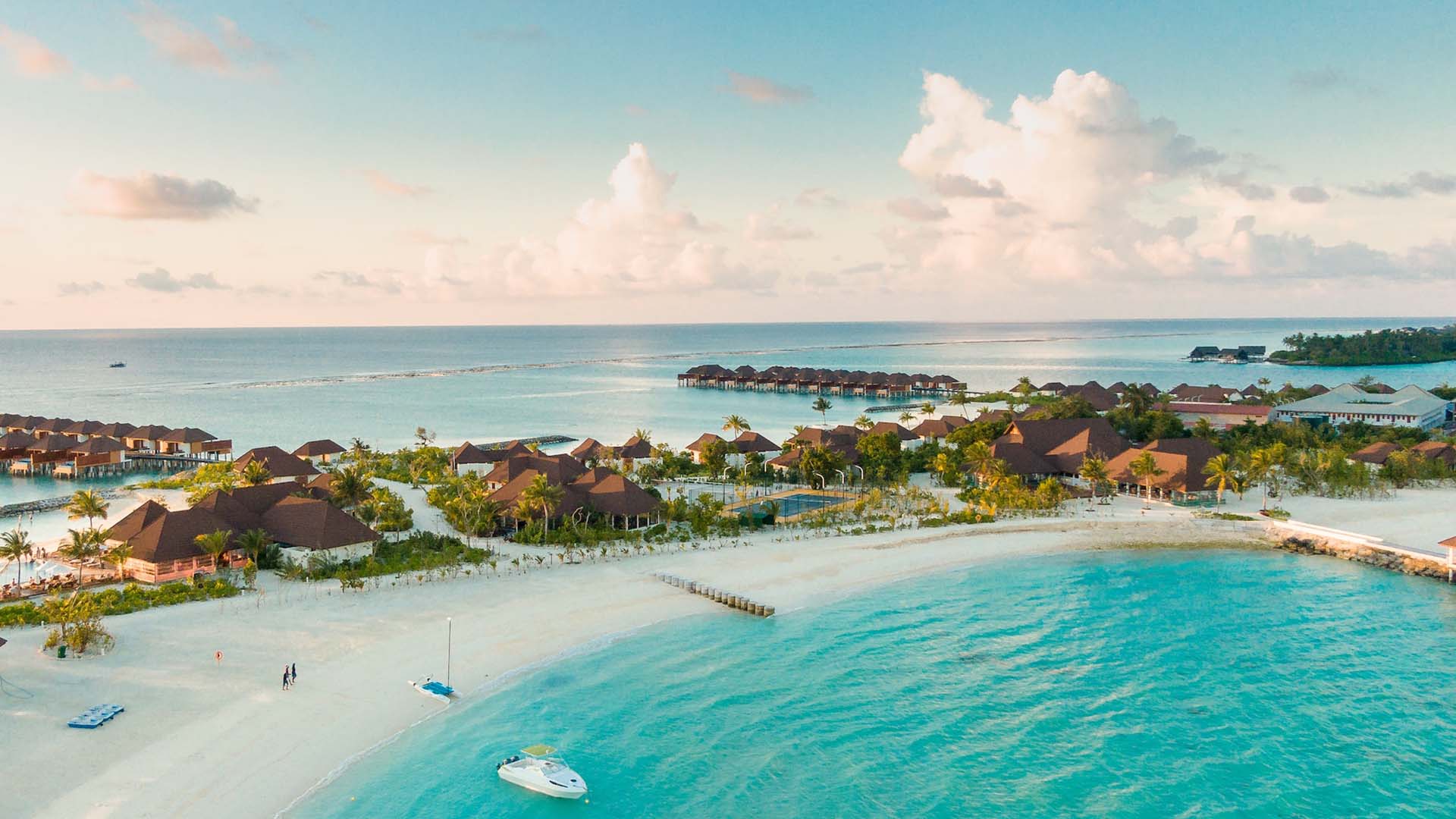
Have you ever thought about how many types of tourism there are in the world? From adventure tourism to medical tourism, the tourism industry offers a wide range of experiences for travelers.
Tourism is a rapidly growing industry, contributing greatly to the global economy . With the rise of globalization and advancements in technology, traveling has become more accessible and affordable for people all around the world.
As a result, the tourism industry has diversified and expanded to cater to the different interests and preferences of travelers.
If you are a travel enthusiast, you might be surprised to know that there are over 40 different types of tourism to choose from. Each type of tourism offers a unique experience, ranging from cultural immersion to extreme sports.
In this article, we will explore the different types of tourism in the world, giving you a glimpse into the vast array of options available to you.
Tourism is a social, cultural and economic phenomenon which entails the movement of people to countries or places outside their usual environment for personal or business/professional purposes.
49 Types of Tourism in the World
The tourism sector is constantly evolving, expanding beyond the basics of domestic, inbound, and outbound tourism.
As travel agencies, it is crucial to stay informed about the diverse range of tourism types to develop effective strategies and fuel the growth of your business. This comprehensive guide presents 62 types of tourism, offering valuable insights and opportunities for your agency to thrive in the dynamic world of travel.
Traditional Forms of Tourism
Leisure tourism.

Leisure tourism encompasses a range of activities that provide relaxation, entertainment, and cultural enrichment to travelers. Let's explore some popular forms of leisure tourism in more detail:
1. Beach Tourism
Beach tourism revolves around vacations and holidays spent in coastal areas, offering sun, sand, and various recreational activities such as swimming, sunbathing, beach volleyball, and water sports like snorkeling, surfing, and jet skiing.
Beach destinations around the world, such as Bali, Maldives, and the Caribbean, attract millions of tourists seeking relaxation and enjoyment in idyllic seaside settings.
2. Adventure Tourism
Adventure tourism caters to thrill-seeking individuals who seek exciting and adrenaline-pumping experiences. It includes activities like hiking, rock climbing, zip-lining, white-water rafting, paragliding, and bungee jumping in natural and adventurous settings.
Destinations like New Zealand, Costa Rica, and Switzerland offer breathtaking landscapes and thrilling adventure opportunities that attract adventure enthusiasts from across the globe.
3. Cultural Tourism
Cultural tourism focuses on exploring the rich heritage, traditions, and artistic expressions of a destination.
It involves visits to museums, historical sites, cultural festivals, and interactions with local communities to gain insight into their customs, rituals, and way of life. Destinations renowned for their cultural attractions include Rome with its ancient ruins, Kyoto with its traditional temples, and Istanbul with its diverse blend of cultures.
4. Wildlife Tourism
Wildlife tourism centers on observing and experiencing a particular region's diverse fauna and flora.
It includes activities such as safaris, birdwatching, nature walks, and visits to national parks and wildlife reserves. Destinations like South Africa's Kruger National Park, the Galapagos Islands in Ecuador, and the Serengeti in Tanzania offer incredible wildlife encounters and opportunities for conservation education.
Business Tourism

Business tourism, also known as MICE tourism (Meetings, Incentives, Conferences, and Exhibitions), caters to individuals traveling for business-related purposes.
Let's explore some key components of business tourism:
5. Meetings, Incentives, Conferences, and Exhibitions (MICE) Tourism
MICE tourism encompasses corporate meetings, conferences, conventions, trade shows, and exhibitions. It provides a platform for professionals to network, exchange knowledge, showcase products and services, and forge business relationships.
Major cities and convention centers worldwide, such as London, Dubai, and Las Vegas, host numerous MICE events, driving economic growth and fostering industry collaboration.
6. Trade Shows and Conventions
Trade shows and conventions are industry-specific events where businesses exhibit their products or services to potential clients, partners, and investors. These events serve as valuable marketing platforms, allowing companies to showcase their latest innovations, generate leads, and gain industry insights.
Trade shows like CES (Consumer Electronics Show) and Hannover Messe attract businesses from diverse sectors, facilitating business-to-business interactions and promoting industry growth.
7. Corporate Retreats and Team-Building Activities
Corporate retreats and team-building activities aim to foster teamwork, boost employee morale, and enhance organizational productivity. These events often take place in scenic locations, away from the usual office environment, and incorporate team-building exercises, workshops, brainstorming sessions, and recreational activities.
Corporate retreats not only strengthen internal relationships but also provide opportunities for strategic planning, innovation, and professional development.
Niche and Special Interest Tourism

Ecotourism promotes responsible travel practices that focus on preserving and conserving natural environments while providing educational and enriching experiences for travelers.
Let's delve into some facets of ecotourism:
8. Rainforest Exploration
Rainforest exploration allows travelers to immerse themselves in the lush biodiversity and unique ecosystems of tropical rainforests. Guided hikes, canopy walks, and wildlife spotting tours provide opportunities to witness rare flora and fauna, learn about sustainable conservation efforts, and contribute to local communities.
Destinations like the Amazon Rainforest in South America, Borneo's rainforests in Southeast Asia, and Costa Rica's Monteverde Cloud Forest offer captivating rainforest experiences.
9. Wildlife Conservation Tours
Wildlife conservation tours allow travelers to actively participate in conservation initiatives, contributing to the protection of endangered species and their habitats. These tours often involve volunteer work, such as monitoring wildlife, assisting in research projects, and habitat restoration efforts.
Popular wildlife conservation destinations include the Galapagos Islands, where visitors can help preserve unique marine and terrestrial ecosystems, and South Africa's game reserves, where wildlife conservation programs support endangered species.
10. Sustainable Travel Practices
Sustainable travel practices promote environmentally friendly behaviors, aiming to minimize negative impacts on natural resources, local communities, and cultures. These practices may include reducing carbon footprint, supporting local businesses, respecting local traditions, and engaging in activities that promote environmental stewardship.
Travelers can choose eco-lodges, and eco-friendly transportation options, and participate in community-based tourism initiatives to ensure their travel has a positive impact on the destination.
Wellness Tourism

Wellness tourism focuses on enhancing and rejuvenating one's well-being through various activities and experiences that prioritize physical, mental, and spiritual health.
Let's explore some aspects of wellness tourism:
11. Spa Retreats
Spa retreats offer a serene environment where travelers can indulge in relaxation, pampering treatments, and wellness therapies. From soothing massages and rejuvenating facials to holistic healing practices like yoga and meditation, spa retreats provide a sanctuary for rejuvenation and stress relief.
Destinations such as Bali, Thailand, and California's Napa Valley are renowned for their luxurious and holistic spa retreats.
12. Yoga and Meditation Retreats
Yoga and meditation retreats provide opportunities for individuals to deepen their mindfulness and spiritual practices in tranquil and picturesque settings. These retreats often combine daily yoga sessions, meditation practices, healthy cuisine, and workshops focused on personal growth and self-awareness.
Destinations like Rishikesh in India, Ubud in Bali, and Sedona in the United States are renowned for their yoga and meditation retreats.
13. Health and Wellness Resorts
Health and wellness resorts offer comprehensive programs designed to improve physical fitness, promote healthy lifestyles, and provide personalized wellness experiences. These resorts may offer fitness classes, nutritional guidance, spa treatments, wellness consultations, and activities like hiking, yoga, and mindfulness workshops.
Wellness-focused destinations such as Switzerland's renowned Swiss Alps resorts, Thailand's wellness retreats, and the wellness resorts in Arizona's Sonoran Desert cater to those seeking a holistic approach to well-being.
Culinary Tourism

Culinary tourism revolves around the exploration and appreciation of a destination's cuisine, culinary traditions, and gastronomic experiences. Let's discover the different aspects of culinary tourism:
14. Food and Wine Tours
Food and wine tours allow travelers to savor the local flavors, taste traditional dishes, and indulge in culinary delights unique to a particular region. These tours often include visits to local markets, food tastings, cooking demonstrations, and wine tastings at vineyards.
Destinations like Italy's Tuscany, France's Bordeaux region, and Japan's Kyoto are renowned for their culinary heritage and offer exceptional food and wine tours.
15. Cooking Classes and Culinary Experiences
Cooking classes and culinary experiences provide hands-on opportunities for travelers to learn about the local cuisine, traditional cooking techniques, and regional specialties. Under the guidance of expert chefs or local home cooks, participants can prepare and savor authentic dishes, gaining insights into the culinary culture of the destination.
Cities like Bangkok, Marrakech, and Barcelona are known for their immersive cooking classes and culinary workshops.
16. Farm-to-Table and Gastronomic Experiences
Farm-to-table experiences involve visits to local farms, orchards, and vineyards to witness the production process of fresh, organic ingredients. Gastronomic experiences encompass fine dining at renowned restaurants, tasting menus curated by celebrity chefs, and exploring local street food scenes.
Destinations like California's Napa Valley, France's Lyon, and Thailand's Chiang Mai provide exceptional farm-to-table and gastronomic experiences.
Adventure and Outdoor Tourism
Mountain tourism.

Mountain tourism attracts adventurous travelers seeking exhilarating experiences in breathtaking alpine landscapes. Here are some popular activities within mountain tourism:
17. Hiking and Trekking
Hiking and trekking adventures take travelers through scenic mountain trails, allowing them to explore the pristine wilderness, enjoy stunning vistas, and challenge themselves physically.
Destinations like the Himalayas in Nepal, the Swiss Alps, and the Rocky Mountains in North America offer a range of hiking and trekking opportunities suitable for different skill levels.
18. Mountaineering and Rock Climbing
Mountaineering and rock climbing appeal to those with a passion for conquering towering peaks and vertical rock formations.
From scaling iconic summits like Mount Everest and Mount Kilimanjaro to rock climbing in Yosemite National Park or the Dolomites, these activities offer a thrilling combination of physical endurance, technical skill, and awe-inspiring natural surroundings.
19. Skiing and Snowboarding
Skiing and snowboarding attract winter sports enthusiasts who enjoy gliding down snow-covered slopes and experiencing the adrenaline rush of downhill descents.
Popular ski destinations include Aspen in the United States, Whistler Blackcomb in Canada, and the Swiss Alps, where skiers and snowboarders can enjoy diverse terrains, world-class facilities, and picturesque mountain landscapes.
Water Tourism

Water tourism encompasses a wide range of activities centered around bodies of water, including oceans, lakes, rivers, and coastal areas. Let's explore some popular water-based tourism experiences:
20. Scuba Diving and Snorkeling
Scuba diving and snorkeling allow travelers to explore vibrant underwater ecosystems, encounter marine life, and marvel at coral reefs.
Destinations like the Great Barrier Reef in Australia, the Maldives, and the Red Sea in Egypt are renowned for their exceptional diving and snorkeling sites, offering opportunities to witness the beauty and biodiversity of the marine world.
21. Surfing and Water Sports
Surfing and water sports, such as paddleboarding, kayaking, and windsurfing, cater to adrenaline seekers looking to ride the waves and engage with the power of the ocean. Destinations like Hawaii's North Shore, Bali's Uluwatu, and California's Huntington Beach are renowned for their world-class surf breaks and water sports scenes.
22. Sailing and Yachting
Sailing and yachting experiences provide a luxurious and leisurely way to explore coastal regions, island hopping, and cruise along scenic coastlines. Chartering a yacht or joining a sailing excursion offers the opportunity to relax, soak in breathtaking seascapes, and visit remote islands and hidden coves.
Destinations like the Greek Islands, the Caribbean, and the French Riviera are popular sailing and yachting destinations.
Wildlife Tourism

Wildlife tourism appeals to nature enthusiasts and animal lovers who seek encounters with diverse wildlife species in their natural habitats.
Here are some popular wildlife tourism experiences:
23. Safari and Wildlife Photography
Safari adventures take travelers into national parks and game reserves, providing opportunities to spot iconic wildlife species like lions, elephants, giraffes, and zebras. Wildlife photography enthusiasts can capture stunning images of animals in their natural environment.
Destinations like Botswana's Okavango Delta, Tanzania's Serengeti National Park, South Africa's Kruger National Park, and India's Ranthambore National Park offer exceptional safari and wildlife photography experiences.
24. Birdwatching and Nature Reserves
Birdwatching enthusiasts flock to nature reserves and sanctuaries known for their rich avian biodiversity. These destinations offer opportunities to observe and identify a wide array of bird species in their natural habitats.
Places like Costa Rica's Monteverde Cloud Forest Reserve, Australia's Kakadu National Park, and Ecuador's Galapagos Islands are renowned for their birdwatching opportunities.
25. Whale Watching and Marine Wildlife Tours
Whale-watching tours provide an up-close and personal experience with these magnificent marine creatures. Travelers can observe whales breaching, swimming, and interacting in their natural habitat.
Destinations such as Iceland, Canada's Vancouver Island, and the Azores in Portugal are popular for whale watching and marine wildlife tours.
Cultural and Heritage Tourism
Historical tourism.

Historical tourism appeals to individuals interested in exploring the rich heritage and significant historical sites around the world. It provides insights into past civilizations, events, and cultural traditions.
Here are some key aspects of historical tourism:
26. Archaeological Sites and Ruins
Archaeological sites and ruins offer a glimpse into ancient civilizations and their architectural marvels.
Places like the Colosseum in Rome, Machu Picchu in Peru, and Angkor Wat in Cambodia attract history enthusiasts who are fascinated by the remnants of past civilizations and the stories they hold.
27. UNESCO World Heritage Sites
UNESCO World Heritage Sites are culturally or naturally significant locations recognized for their outstanding universal value. These sites range from iconic landmarks like the Taj Mahal in India to entire historical city centers like Prague in the Czech Republic.
Visiting UNESCO World Heritage Sites allows travelers to appreciate the world's cultural diversity and historical importance.
28. Historical Landmarks and Monuments
Historical landmarks and monuments symbolize key moments in history or commemorate notable figures or events. Examples include the Statue of Liberty in the United States, the Great Wall of China, and the Pyramids of Giza in Egypt.
Exploring these landmarks provides a deeper understanding of their historical significance and their impact on society.
Religious Tourism

Religious tourism caters to individuals seeking spiritual experiences, pilgrimages, or a connection with sacred sites. It offers insights into different religious traditions and the architectural wonders associated with them.
Here are some facets of religious tourism:
29. Pilgrimages and Sacred Sites
Pilgrimages involve journeys to sacred destinations associated with specific religions or spiritual beliefs. Places like Mecca for Muslims, Jerusalem for Christians, and Varanasi for Hindus hold immense religious significance and attract millions of pilgrims each year.
30. Spiritual Retreats and Meditation Centers
Spiritual retreats and meditation centers offer tranquil environments for introspection, relaxation, and spiritual growth. These retreats focus on mindfulness, meditation practices, and holistic healing.
Popular destinations for spiritual retreats include Bali in Indonesia, Sedona in the United States, and Rishikesh in India.
31. Religious Festivals and Events
Religious festivals and events provide a vibrant and immersive experience of cultural traditions and religious celebrations. Examples include the Kumbh Mela in India, the Holi festival of colors, and the Christmas celebrations in various parts of the world.
Participating in these festivals offers a unique glimpse into local customs, rituals, and the spirit of the community.
Indigenous Tourism

Indigenous tourism aims to promote understanding, appreciation, and respect for indigenous cultures, traditions, and ways of life. It provides opportunities to engage with indigenous communities and learn about their heritage.
Here are elements of indigenous tourism:
32. Indigenous Cultural Experiences
Indigenous cultural experiences allow travelers to interact with indigenous communities, learn about their traditions, crafts, music, and storytelling. These experiences foster cultural exchange and promote the preservation of indigenous heritage.
Destinations like the Maori culture in New Zealand, the Aboriginal culture in Australia, and the Native American reservations in the United States offer such immersive experiences.
33. Tribal Village Visits
Visiting tribal villages allows travelers to observe and learn about the traditional lifestyles, customs, and rituals of indigenous communities. It provides insights into their sustainable practices, craftsmanship, and deep-rooted connections with nature.
Destinations such as the Amazon rainforest, the Maasai Mara in Kenya, and the Highlands of Papua New Guinea offer opportunities to visit tribal communities.
34. Traditional Arts and Crafts
Indigenous cultures often have a rich tradition of art, crafts, and handicrafts that reflect their unique identity and skills. Exploring indigenous arts and crafts markets, workshops, and galleries allows travelers to appreciate and support the preservation of these traditional artistic practices.
From intricate weaving in Peru to intricate beadwork in South Africa, there is a vast array of indigenous art to discover.
Urban Tourism

City Tourism
City tourism encompasses visits to vibrant urban destinations, exploring their iconic landmarks, cultural attractions, and modern lifestyle. It offers a blend of history, art, entertainment, and culinary experiences.
Key aspects of city tourism include:
35. Sightseeing and Iconic Landmarks
Cities are known for their iconic landmarks, such as the Eiffel Tower in Paris, the Statue of Liberty in New York City, and the Sydney Opera House. Sightseeing allows visitors to capture the essence of a city's character and architectural splendor.
36. Museums and Art Galleries
Cities are often home to renowned museums and art galleries that showcase world-class collections, historical artifacts, and contemporary artworks.
The Louvre Museum in Paris, the Metropolitan Museum of Art in New York City, and the Hermitage Museum in Saint Petersburg are just a few examples of the cultural treasures found in urban areas.
37. Shopping and Entertainment Districts
Urban centers offer diverse shopping experiences, from luxury boutiques to bustling street markets. Additionally, cities provide vibrant entertainment districts with theaters, music venues, and nightlife hotspots.
These districts cater to a variety of interests, ensuring that visitors can indulge in shopping, dining, and entertainment.
Architectural Tourism

Architectural tourism focuses on exploring unique architectural styles, landmarks, and urban design within cities. It allows travelers to appreciate the creativity, innovation, and historical significance of various structures.
Key elements of architectural tourism include:
38. Architectural Marvels and Landmarks
Cities showcase architectural marvels, such as the Burj Khalifa in Dubai, the Sydney Opera House, and the Guggenheim Museum in Bilbao. These structures captivate visitors with their impressive design, engineering, and cultural impact.
39. Modern and Contemporary Architecture Tours
Urban areas often feature striking modern and contemporary architecture that reflects the city's identity and vision. Walking tours or guided visits to architectural highlights, such as the Shard in London, the Marina Bay Sands in Singapore, or the Dancing House in Prague, offer insights into cutting-edge design and urban development.
40. Urban Design and City Planning
City tourism also encompasses exploring the urban design, layout, and city planning concepts that shape the physical environment. Sustainable urban planning, pedestrian-friendly streets, and green spaces contribute to the livability and attractiveness of cities.
Examples of urban design excellence can be found in cities like Copenhagen, Singapore, and Barcelona.
Emerging Forms of Tour

Dark Tourism
Dark tourism refers to visiting sites that are associated with death, tragedy, or historical atrocities. It offers a unique perspective on the darker aspects of human history. While it may seem unusual, dark tourism has gained popularity in recent years.
Here are some examples of dark tourism:
41. War Memorials and Battlefields
Visiting war memorials and battlefields provides insights into the sacrifices made during significant conflicts. Examples include the Normandy American Cemetery and Memorial in France and the Hiroshima Peace Memorial Park in Japan.
These sites allow visitors to reflect on the consequences of war and honor those who lost their lives.
42. Holocaust and Genocide Sites
Holocaust and genocide sites, such as Auschwitz-Birkenau in Poland and the Killing Fields in Cambodia, serve as reminders of the darkest chapters in human history.
These places educate visitors about the horrors of genocide and the importance of promoting peace and tolerance.
43. Disaster Tourism
Disaster tourism involves visiting locations affected by natural or man-made disasters. Examples include areas hit by hurricanes, volcanic eruptions, or industrial accidents.
While controversial, this form of tourism can raise awareness about the impact of disasters and the resilience of affected communities.
Space Tourism

Space tourism is an emerging frontier in the travel industry, allowing individuals to experience the thrill of space travel and explore the mysteries of the universe. While it is currently limited to a select few, advancements in technology and space exploration are making it more accessible.
Key aspects of space tourism include:
44. Space Travel and Exploration
Space tourism involves journeys beyond the Earth's atmosphere, offering a unique perspective of our planet and the vastness of space. Companies like Virgin Galactic and SpaceX are developing spacecraft to transport civilians into space, opening up new possibilities for adventurous travelers.
45. Astronaut Training Experiences
Before embarking on a space journey, aspiring space tourists can undergo astronaut training experiences. These programs simulate the physical and mental challenges faced by astronauts, including zero-gravity simulations, centrifuge training, and survival skills.
46. Observatories and Space Centers
Visiting observatories and space centers allows enthusiasts to learn about astronomy, space missions, and ongoing research. Places like the Kennedy Space Center in Florida and the European Space Agency's Spaceport in French Guiana offer interactive exhibits, rocket launches, and behind-the-scenes glimpses into space exploration.
Virtual Tourism

Virtual tourism has emerged as a response to the limitations of physical travel, allowing individuals to explore destinations and landmarks virtually. It offers a convenient and immersive way to experience different places from the comfort of one's home. Key aspects of virtual tourism include:
47. Virtual Reality Travel Experiences
Virtual reality (VR) technology allows users to immerse themselves in simulated environments, including famous landmarks, natural wonders, and cultural sites. VR headsets transport users to different locations, providing a realistic and interactive experience.
48. Online Museum and Landmark Tours
Many museums, historical sites, and landmarks offer virtual tours that enable visitors to explore their collections and exhibits online. These tours provide detailed information, multimedia content, and the ability to navigate through the spaces virtually.
49. Virtual Travel Platforms and Apps
Various platforms and apps offer virtual travel experiences, curated itineraries, and interactive content. These platforms leverage technology to create virtual travel communities, where users can connect, share experiences, and plan future trips.
As the travel industry evolves, embracing these emerging forms of tourism can open up new opportunities for businesses and provide unique experiences for travelers.
In conclusion, the tourism industry is a dynamic and ever-evolving sector that encompasses a wide range of experiences and opportunities. By understanding the diverse types of tourism in the world, business professionals can position themselves for success and growth in this competitive landscape.
By recognizing the unique characteristics and preferences of different traveler segments, businesses can tailor their offerings and marketing strategies to meet the specific needs of their target audiences. This not only enhances customer satisfaction but also helps in creating a competitive advantage in the market.
Moreover, as the world becomes increasingly interconnected and travelers seek authentic and immersive experiences, businesses must embrace the diversity of tourism segments. By incorporating sustainable practices, respecting local cultures, and promoting responsible tourism, businesses can contribute to the preservation of natural and cultural heritage, while also appealing to environmentally and socially conscious travelers.
Let us embrace the diversity of tourism, foster innovation, and collaborate to shape the future of this exciting industry.
- United Nations World Tourism Organization
- World Travel and Tourism Council
- International Ecotourism Society
- Global Wellness Institute
- International Culinary Tourism Association
- Adventure Travel Trade Association
- UNESCO World Heritage Centre
- The International Dark-Sky Association
- Space Tourism Society
- World Tourism Organization
- National Geographic Travel
- International Association of Antarctica Tour Operators
- World Food Travel Association
- Beach Holidays by Expedia
Tumisang Bogwasi
2X Award-Winning Entrepreneur | Empowering Brands to Generate Leads, Grow Revenue with Business Strategy and Digital Marketing | Founder, CEO of Fine Group
Related Posts

The Importance of Tourism on Economies and Businesses
- April 6, 2023
UN Tourism | Bringing the world closer
Share this content.
- Share this article on facebook
- Share this article on twitter
- Share this article on linkedin
Making Tourism Stronger and Ready for the Future
- All Regions
- 27 Dec 2021
This has been another challenging year for our societies, our economies and tourism. Many millions of jobs and businesses remain in peril, at the mercy of an evolving crisis and of the actions of governments.
However, we are by no means in the same place we were when the pandemic was declared in March 2020. In fact, we have succeeded in laying the foundations to restart tourism around the pillars of sustainability, innovation, people and investing for a resilient future .
Working together
Over the past year, much progress has been made in rolling out vaccinations and in both detecting and treating COVID-19. We have also seen significant progress made in finding the right balance between keeping people safe and keeping the vital lifeline of tourism intact, as illustrated by UNWTO’s effective collaboration with the World Health Organization (WHO) since the very start of the pandemic.
A collaborative and multilateral approach is and must remain at the centre of capitalizing on the lessons we have learned in such a short space of time.
Ensuring harmonized travel protocols has been our message since day one. They are at the heart of tourism’s restart in many parts of the world, most notably in the Northern Hemisphere destinations during the peak summer months.
We are also encouraged by the resilience and determination coming from the tourism sector itself, as well as from our Member States.
Like never before, the pandemic has made clear tourism’s relevance to our economies and societies. Tourism is now part of the global conversation and at the heart of both national and international recovery action plans.
Expanding on our mandate
Interest in UNWTO’s innovation and start-up competitions keeps growing, showcasing the talent we have unleashed, and our shared readiness to hear new voices and embrace new ideas.
Our global innovation ecosystem is now made up of more than 12,000 start-ups from 160 countries, with US$83 million mobilized and 300 corporate partners currently working on new tourism technologies.
And UNWTO’s education programmes are reaching unprecedented numbers of people, welcoming more than 20,000 students from 100 countries in just 18 months. We promote lifelong learning thanks to partnerships with the world’s top five institutions in tourism and hospitality. Together, IE university, Les Roches, Glion Institute of Higher Education, École Ducasse and the Swiss Education Group offer 19 online courses in Spanish, English and Arabic - a true ‘online university of universities’.
Underpinning it all are data analytics on tourism investments powered by our partnership with the Financial Times . Through this, we have produced the first UNWTO tourism investment guidelines , which we are now scaling up to create guidelines for doing tourism businesses by country.
Restarting tourism is unthinkable without green investments. We are collaborating with institutions such as the World Bank’s International Finance Corporation and the Inter-American Development Bank. To date, more than 200 investors are part of UNWTO’s global investment network advancing critical work such as supporting hotel chains from 50 countries to become more sustainable.
For people and planet
Tourism is ready to do the hard work and live up to its responsibilities to people and planet, as demonstrated by the huge interest we have received in the Glasgow Declaration on Climate Action in Tourism , launched at the UN Climate Summit COP26 . We are receiving a growing number of commitments to halve emissions by 2030 and to reach NetZero by 2050 at the latest, with Member countries, individual destinations, global companies and local players as well as media outlets, hundreds are on board, and counting.
And for people, we are making sure the benefits tourism offers are enjoyed as widely and fairly as possible. That includes establishing the sector as a driver of rural development, as celebrated through the Best Tourism Villages by UNWTO initiative . Launched to great enthusiasm this year, 44 villages from 32 countries were granted the recognition during our recent General Assembly, for showing a commitment to tourism development in line with the Sustainable Development Goals.
The 24th UNWTO General Assembly in Madrid brought our Members together to speak with one voice. Members commended UNWTO’s work done during the pandemic and its vision for the future of both the Organization and the sector, endorsing key initiatives such as a first International Code for the Protection of Tourists . This landmark legal framework is designed to restore trust in travel, a vital ingredient for recovery.
I am very grateful for the wide support of our Members, who have put their trust in me to serve a second term as UNWTO Secretary-General.
Mainstreaming tourism
In a crisis, you realize both what’s important and who your friends are.
And support for UNWTO has never been louder or more visible. Over the past 12 months, we have strengthened our key partnerships, among them the G20 and G7, as well as ICAO (the International Civil Aviation Organization), FAO (the Food and Agriculture Organization of the United Nations), the World Bank, IDB (Inter-American Development Bank), CAF, (The Development Bank of Latin America) and the EBRD (European Bank for Reconstruction and Development). We have further strengthened our voice at the top of the United Nations, including the landmark recognition of tourism and UNWTO by the UN Secretary-General.
Closer to our Members
UNWTO has made a significant leap to be on the ground next to our Members. This year we opened the first Regional Office for the Middle East in Riyadh, in the Kingdom of Saudi Arabia. Built and opened in record time, it will serve as the platform to deliver our commitment to education and as a global centre for tourism and rural development.
Moving closer to our Members in other regions is an ongoing task and we will also work towards opening the first regional offices in Africa and the Americas.
As we advance preparations for these new hubs, we also welcome new Member States. Antigua and Barbuda, a destination where tourism is an economic pillar, has joined UNWTO. This shows that tourism-dependent countries look to UNWTO and depend on us, and we are ready to live up to this responsibility. Alongside this our network of Affiliate Members of the private sector, local administrations, destinations and academia, keeps growing.
So too does our collaboration with media outlets through new partnerships with Euronews, Xinhua and Travel Index, which build on our existing relationship with CNN International. As a result, the message of tourism for development will continue reaching a global audience of unprecedented size and diversity.
The future begins now
The way in which the pandemic has developed over the closing weeks of the year gives us all reason for concern and to again put public health above everything else.
But recent developments again validate our initial position: the only way forward is through collaboration and actions that are based on evidence rather than on speculation or political strategy.
UNWTO is in a good place to use the achievements of 2021 as a springboard for building a better tourism in the years to come, with t he sector ready to return once conditions are right.
It is in this spirit that I wish everybody a safe and healthy 2022. UNWTO stands by your side, to keep on working together for our joint progress .
Zurab Pololikashvili Secretary-General
Related Links:
- Download the PDF
Category tags
Related content, one year on, tourism stands firm in support of ukraine, tourism raises its voice for peace, as 2020 ends, tourism looks forward with determination, a lifeline for small island states: unwto joins imo to ....
16 Questions to Explain Work in the Age of Data
Games and apps that connect you with cutting-edge science, openmind books, scientific anniversaries, humboldt, the naturalist who opened the eyes of the world, featured author, latest book, restarting tourism: a sustainable approach for the new era.
“Tourism can be a platform for overcoming the pandemic. By bringing people together, tourism can promote solidarity and trust – crucial ingredients in advancing the global cooperation that is so urgently needed at this time.” With these words, UN Secretary-General António Guterres, sent a landmark message to the world on June 9, calling for the restoration of tourism activities.
For months, “stay home” became an inescapable mantra, repeated over and over to raise awareness about the importance of not going out to prevent COVID-19 from spreading. Building on this same idea, the World Tourism Organization came up with its own tagline, “ travel tomorrow .” Today, this ‘tomorrow’ is already upon us, and the challenge is undeniable. But, in the context of this new normality, how can an industry that entirely depends on people’s mobility safely resume operation?
A key sector for more vulnerable countries
According to the World Travel & Tourism Council figures , in 2019 Tourism accounted for 10.3 percent of the world’s total economic activity. Restarting tourism is essential due not only to its fundamental economic importance, but because it is a sector that’s intimately linked to the social, economic and environmental welfare of many countries, with a particular impact on developing countries.
The 2030 Sustainable Development Agenda included tourism as one of its key pillars. “The livelihoods of many depend on it, especially women and particularly in the world’s most vulnerable countries, including Small Island Developing States and Least Developed Countries. Moreover, in many parts of the world, the protection of biodiversity relies heavily on the tourist sector, from conservation to the revenue generated by those efforts,” said Guterres.
Sustainable tourism: The key to the future?
In a recent paper entitled “ UNWTO Priorities for Global Tourism Recovery ”, the UNWTO included “Innovation and Sustainability as the new normal” one of the seven key strategies for the industry to face this new era. Just as the additional challenge posed by the medium-term impacts of an unexpected pandemic should not be used as an excuse to stop focusing on sustainability, which was singled out last year as one of the top priorities on a global scale, this purpose should remain as a clear goal in the path to recovery for one of the world’s most important sectors, tourism.
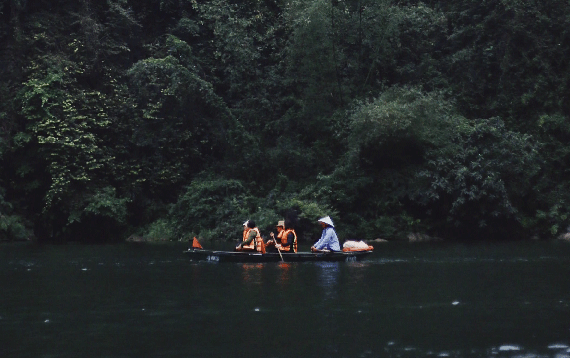
What does sustainable tourism exactly mean? In UNWTO’s own words , sustainable tourism should:
- Make optimal use of environmental resources and help conserve natural heritage and biodiversity.
- Respect the socio-cultural authenticity of host communities and contribute to inter-cultural understanding and tolerance.
- Ensure viable, long-term economic operations, and offer stable employment and income-earning opportunities and social services to host communities.
Taking these points into account, the development of sustainable tourism could have a positive impact on all Sustainable Development Goals (SDG), but especially on goals 8 (decent work and economic growth), 12 (responsible production and consumption) and 14 (life below water)
Measures to reactivate tourism from sustainability
The global guidelines of the UNWTO to restart tourism published on May 28, 2020, hinted at some of the measures that could contribute to making tourism activities more sustainable.
- Promote proximity and domestic tourism in the short-term enhancing the local value chain (e.g. local producers)
- Develop segmented and sustainable products focused on nature, rural areas and culture. Some examples could be eco-tourism, small group or individual sports, history, bird-watching tourism, traditional routes.
- Promote new destinations and experiences with added value and local inspiration namely with the creative industries.
As in any other industry, the success of these initiatives will largely depend on the logic of demand . The variety of options will only expand in as far as the number of sustainability-minded travelers, who value this type of changes in their activities, increase
Tourism, an activity that in recent decades has become a commodity, not a luxury, for many people, should not remain unfazed by the climate crisis, and could play a key role in meeting some of the most ambitious goals of the plans to curtail environmental degradation, such as carbon neutrality and biodiversity conservation .
Sara González for OpenMind
Related publications.
- Climate Emergency: Why now?
- What is Carbon Neutrality and How Can it be Achieved?
- The End of the UN Decade of Biodiversity: What Has Been Achieved?
- Climate Income: an Idea for the Post-Pandemic Economic Recovery
More about Science
Environment, leading figures, mathematics, scientific insights, more publications about openmind, comments on this publication.
Morbi facilisis elit non mi lacinia lacinia. Nunc eleifend aliquet ipsum, nec blandit augue tincidunt nec. Donec scelerisque feugiat lectus nec congue. Quisque tristique tortor vitae turpis euismod, vitae aliquam dolor pretium. Donec luctus posuere ex sit amet scelerisque. Etiam sed neque magna. Mauris non scelerisque lectus. Ut rutrum ex porta, tristique mi vitae, volutpat urna.
Sed in semper tellus, eu efficitur ante. Quisque felis orci, fermentum quis arcu nec, elementum malesuada magna. Nulla vitae finibus ipsum. Aenean vel sapien a magna faucibus tristique ac et ligula. Sed auctor orci metus, vitae egestas libero lacinia quis. Nulla lacus sapien, efficitur mollis nisi tempor, gravida tincidunt sapien. In massa dui, varius vitae iaculis a, dignissim non felis. Ut sagittis pulvinar nisi, at tincidunt metus venenatis a. Ut aliquam scelerisque interdum. Mauris iaculis purus in nulla consequat, sed fermentum sapien condimentum. Aliquam rutrum erat lectus, nec placerat nisl mollis id. Lorem ipsum dolor sit amet, consectetur adipiscing elit.
Nam nisl nisi, efficitur et sem in, molestie vulputate libero. Quisque quis mattis lorem. Nunc quis convallis diam, id tincidunt risus. Donec nisl odio, convallis vel porttitor sit amet, lobortis a ante. Cras dapibus porta nulla, at laoreet quam euismod vitae. Fusce sollicitudin massa magna, eu dignissim magna cursus id. Quisque vel nisl tempus, lobortis nisl a, ornare lacus. Donec ac interdum massa. Curabitur id diam luctus, mollis augue vel, interdum risus. Nam vitae tortor erat. Proin quis tincidunt lorem.
In Search of a Less Toxic Blue
Do you want to stay up to date with our new publications.
Receive the OpenMind newsletter with all the latest contents published on our website
OpenMind Books
- The Search for Alternatives to Fossil Fuels
- View all books
About OpenMind
Connect with us.
- Keep up to date with our newsletter
Transformative Tourism
- Living reference work entry
- First Online: 13 September 2023
- Cite this living reference work entry

- Dalia Vidickienė 2 ,
- Živilė Gedminaitė-Raudonė 2 ,
- Rita Lankauskienė 2 &
- Paweł Chmieliński 3
21 Accesses
Transformational tourism
Transformative tourism is a new form of tourism business focused on how to use cultural and natural resources of visited places for individual or collective transformation. It may be defined as an innovative form of transformative learning which not only enables a person to get new information but also allows testing the new cultural values in practice and gives an understanding of how to consider the local context when implementing own development solutions.
Description. Any travel has a greater or lesser transformative effect, but the segment of transformative tourists differs by its deliberate intention to use travel for transformation. Getting involved in transformative travels is based on the same reasons as transformative learning – frustration with the current situation and the search for innovative solutions. Two major features of transformative tourism as a special type of tourism should be emphasized: (1) the traveler’s deliberate...
This is a preview of subscription content, log in via an institution to check access.
Access this chapter
Institutional subscriptions
Gebauer, H., & Binz, C. (2019). Regional benefits of servitization processes: Evidence from the wind-to-energy industry. Regional Studies, 53 (3), 366–375. https://doi.org/10.1080/00343404.2018.1479523 .
Article Google Scholar
Lafuente, E., Vaillant, Y., & Vendrell-Herrero, F. (2019). Territorial servitization and the manufacturing renaissance in knowledge-based economies. Regional Studies, 53 (3), 313–319. https://doi.org/10.1080/00343404.2018.1542670 .
Lean, G. L. (2009). Transformative travel: Inspiring sustainability. In R. Bushell & P. J. Sheldon (Eds.), Wellness and tourism: Mind, body, spirit, place (pp. 191–205). New York: Cognizant.
Google Scholar
Ostrom, A., Parasuraman, A., Bowne, D., Patricio, L., & Voss, C. (2015). Service research priorities in a rapidly changing context. Journal of Service Research, 18 (2), 127–159. https://doi.org/10.1177/1094670515576315 .
Palojärvi, A., Pyysiäinen, J., & Saloranta, M. (Eds.). (2013). Experiences with ecological technologies and practices: Inspiring stories from ecovillages . Vilnius: LAEI.
Perdomo, Y. (Ed.). (2016). Global report on the transformative power of tourism: A paradigm shift towards a more responsible traveller . Madrid: World Tourism Organization (UNWTO).
Reisinger, Y. (Ed.). (2013). Transformational tourism: Tourist perspectives . Wallingford: CABI.
Reisinger, Y. (Ed.). (2015). Transformational tourism: Host perspectives . Wallingford: CABI.
Rosenbaum, M. S., Corus, C., Ostrom, A. L., Anderson, L., Fisk, R. P., Gallan, A. S., & Williams, J. D. (2011). Conceptualisation and aspirations of transformative service research. Journal of Research for Consumers, 19 , 1–6.
Ross, S. L. (2010). Transformative travel: An enjoyable way to foster radical change. ReVision, 32 (1), 54–61. https://doi.org/10.4298/REVN.32.1.54-62 .
Skift report. (2014). The rise of experiential travel . Skift and Peak Adventure Travel Group. https://skift.com/wp-content/uploads/2014/06/skift-peak-experiential-traveler-report1.pdf . [25 May 2021].
Soulard, J., McGehee, N. G., & Stern, M. (2019). Transformative tourism organizations and glocalization. Annals of Tourism Research, 76 , 91–104. https://doi.org/10.1016/j.annals.2019.03.007 .
Vendrell-Herrero, F., & Wilson, J. R. (2017). Servitization for territorial competitiveness: Taxonomy and research agenda. Competitiveness Review: An International Business Journal, 27 (1), 2–11.
Vidickiene, D. (2013). Living in harmony: Inspiring stories from ecovillage . Vilnius: LAEI.
Vidickiene, D., Gedminaite-Raudone, Z., & Simonaityte, V. (2019). Servitization of farming: Manifestations of the business model “product plus services” in Lithuania . Vilnius: LAEI.
Vidickiene, D., Vilke, R., & Gedminaite-Raudone, Z. (2020). Transformative tourism as an innovative tool for rural development. European Countryside, 12 (3), 277–291. https://doi.org/10.2478/euco-2020-0016 .
Vidickienė, D., Gedminaite-Raudone, Z., Vilke, R., Chmielinski, P., & Zobena, A. (2021). Barriers to start and develop transformative ecotourism business. European Countryside, 13 (4), 734–749. https://doi.org/10.2478/euco-2021-0039 .
WCED (Ed.). (1987). Our common future: The world commission on environment and development . Oxford: Oxford University Press.
Wolf, I. D., Ainsworth, G. B., & Crowley, J. (2017). Transformative travel as a sustainable market niche for protected areas: A new development, marketing and conservation model. Journal of Sustainable Tourism, 25 (11), 1650–1673. https://doi.org/10.1080/09669582.2017.1302454 .
World Tourism Organization. (2018). Report on tourism and culture synergies . Madrid: UNWTO. https://doi.org/10.18111/9789284418978 .
Book Google Scholar
Download references
Author information
Authors and affiliations.
Institute of Economics and Rural Development, Lithuanian Centre for Social Sciences, Vilnius, Lithuania
Dalia Vidickienė, Živilė Gedminaitė-Raudonė & Rita Lankauskienė
Institute of Rural and Agricultural Development, Polish Academy of Sciences, Warsaw, Poland
Paweł Chmieliński
You can also search for this author in PubMed Google Scholar
Corresponding author
Correspondence to Paweł Chmieliński .
Editor information
Editors and affiliations.
Dipartimento di Scienze Statistiche, Sapienza Università di Roma, Roma, Italy
Filomena Maggino
Section Editor information
Department of Economics, University of Foggia, Foggia, Italy
Mariantonietta Fiore
Rights and permissions
Reprints and permissions
Copyright information
© 2023 Springer Nature Switzerland AG
About this entry
Cite this entry.
Vidickienė, D., Gedminaitė-Raudonė, Ž., Lankauskienė, R., Chmieliński, P. (2023). Transformative Tourism. In: Maggino, F. (eds) Encyclopedia of Quality of Life and Well-Being Research. Springer, Cham. https://doi.org/10.1007/978-3-319-69909-7_104688-1
Download citation
DOI : https://doi.org/10.1007/978-3-319-69909-7_104688-1
Received : 13 April 2022
Accepted : 18 April 2022
Published : 13 September 2023
Publisher Name : Springer, Cham
Print ISBN : 978-3-319-69909-7
Online ISBN : 978-3-319-69909-7
eBook Packages : Springer Reference Social Sciences Reference Module Humanities and Social Sciences Reference Module Business, Economics and Social Sciences
- Publish with us
Policies and ethics
- Find a journal
- Track your research
Tourism – Definition, Types & Forms, History & Importance of Tourism
Tourism is one of the world’s fastest-growing industries and a major foreign exchange and employment generation for many countries. It is one of the most remarkable economic and social phenomena.
The word ‘tour’ is derived from the Latin word tornus, meaning ‘a tool for making a circle.’ Tourism may be defined as the movement of people from their usual place of residence to another place ( with the intention to return) for a minimum period of twenty-four hours to a maximum of six months for the sole purpose of leisure and pleasure.
According to WTO (1993), ” Tourism encompasses the activities of persons traveling and staying in places outside their usual environment for not more than one consecutive year for leisure, business, and other purposes.”
The Rome conference on tourism in 1963 defined tourism as ‘ a visit to a country other than one’s own or where one usually resides and works. This definition, however, did not take into account domestic tourism, which has become a vital money-spinner and job generator for the hospitality industry.
The UNWTO defines tourists as ‘ people who travel to and stay in place outside their usual environment for not more than one consecutive year for leisure, business and other purposes not related to the exercise of an activity remunerated from within the place visited.
According to the Tourism Society of Britain ,” tourism is the temporary short-period movement of people to destination outside the places where they usually live, work; and activities during their stay at these destinations.” This definition includes the movement of people for all purposes.
The development of technology and transportation infrastructure, such as jumbos jets, low-cost airlines, and more accessible airports, have made tourism affordable and convenient. There have been changes in lifestyle – for example, now retiree-age people sustain tourism around the year. The sale of tourism products on the internet, besides the aggressive marketing of the tour operators and travel agencies , has also contributed to the growth of tourism.
27 September is celebrated as world tourism every year. This date was chosen as on that day in 1970, the Statutes of UNWTO were adopted. The purpose of this day is to raise awareness of the role of tourism within the international community.
History of Travel and Tourism
Inbound tourism, outbound tourism, domestic tourism, forms of tourism, classification of tourism, nature of tourism, importance of tourism, economic impacts, social impacts, cultural impacts, environmental impact, industries related to tourism, tourism products.
Travel is as old as mankind on earth. At the beginning of his existence, man roamed about the planet’s surface in search of food, shelter, security, and better habitat. However, with time, such movements were transformed into wanderlust.
About five thousand years ago, climate changes, dwindling food and shelter conditions hostile invaders made the people leave their homes to seek refuge elsewhere like the Aryans left their homes in Central Asia due to climate changes. Perhaps, this leads to the development of commerce, trade, and industry.
Religion, education, and cultural movement began during the Hindu and Chinese civilizations. Christian missionaries, Buddhist monks, and others traveled far and wide carrying religious messages and returned with fantastic images and opinions about alien people.
For centuries movement of people continued to grow due to the efficiency of transport and the assistance and safety with which the people could travel. By the end of the 15th century, Italy had become Europe’s intellectual and cultural center. It represented the classical heritage both for the intelligentsia and the aristocracy.
During the 16th century, travel came to be considered an essential part of the education of every young Englishman. Travel thus became a means of self-development and education in its broadest sense. The educational travel was known as the ‘ Grand Tour .’
The industrial revolution brought about significant changes in the pattern and structure of British society. Thus, the economy of Britain was greatly responsible for the beginning of modern tourism. It also created a large and prosperous middle class. Because of remarkable improvement in transportation systems in the latter half of the 18th century and the first quarter of the 19th century, an increasing number of people began to travel for pleasure.
Travel was inspired initially by the need for survival (food, shelter, and security), the desire to expand trade, and the quest to conquer. As the transportation system improved, the curiosity for transforming the vast and virgin world into a close neighborhood created a new industry, i.e., Travel and Tourism .
However, the developments of rails, roads, steamships, automobiles, and airplanes helped to spread technology across the globe. Earlier travel was a privilege only for wealthy people, but with the industrial revolution, the scenario altogether changed. Transportation, as well as accommodation, became affordable to middle and working-class citizens.
Essentially, with the development of jet travel, communication, new technology, tourism, and travel became the world’s largest and fastest-growing industry.
Travel and tourism have recently emerged as a dominant economic force on the global scene, accounting for more than 12% of total world trade and growing at 8 percent annually.
Types of Tourism
Tourism has two types and many forms based on the purpose of visit and alternative forms of tourism. Tourism can be categorized as international and domestic tourism .
Tourism has two types and various forms. Based on the movement of people, tourism is categorized into two kinds. These are the following:
International Tourism
When people visit a foreign country, it is referred to as International Tourism . To travel to a foreign country, one needs a valid passport, visa, health documents, foreign exchange, etc.
International tourism is divided into two types; Inbound Tourism & Outbound Tourism.
This refers to tourists of outside origin entering a particular country. Traveling outside their host/native country to another country is called inbound tourism for the country where they are traveling. For example, when a tourist of Indian origin travels to Japan, it is Inbound tourism for Japan because foreign tourists come to Japan.
This refers to tourists traveling from the country of their origin to another country. When tourists travel to a foreign region, it is outbound tourism for their own country because they are going outside their country. For example, when a tourist from India travels to Japan, it is outbound tourism for India and Inbound tourism for Japan.
The tourism activity of the people within their own country is known as domestic tourism . Traveling within the same country is easier because it does not require formal travel documents and tedious formalities like compulsory health checks and foreign exchange. A traveler generally does not face many language problems or currency exchange issues in domestic tourism.
Tourism has various forms based on the purpose of the visit and alternative forms. These are further divided into many types according to their nature. Forms of tourism are the following:
Some most basic forms of tourism are the following:
- Adventure Tourism
- Atomic Tourism
- Bicycle Tours
- Beach Tourism
- Cultural Tourism
- Industrial Tourism
- Medical Tourism
- Religious Tourism
- Rural Tourism
- Sex Tourism
- Space Tourism
- Sports Tourism
- Sustainable Tourism
- Virtual Tourism
- War Tourism
- Wildlife Tourism
Tourism can be classified into six distinct categories according to the purpose of travel. These are the following:
1) Recreational : Recreational or leisure tourism takes a person away from the humdrum of everyday life. In this case, people spend their leisure time in the hills, sea beaches, etc.
2) Cultural tourism satisfies cultural and intellectual curiosity and involves visits to ancient monuments, places of historical or religious importance, etc.
3) Sports/Adventure : Trips taken by people with a view to playing golf, skiing and hiking, fall within this category.
4) Health : Under this category, people travel for medical, treatment or visit places where there are curative possibilities, for example, hot springs, spa yoga, etc.
5) Convention Tourism : It is becoming an increasingly important component of travel. People travel within a country or overseas to attend conventions relating to their business, profession, or interest.
6) Incentive Tourism : Holiday trips are offered as incentives by major companies to dealers and salesmen who achieve high targets in sales. This is a new and expanding phenomenon in tourism, These are in lieu of cash incentives or gifts, Today incentive tourism is a 3 billion dollar business in the USA alone.
Tourism as a socio-economic phenomenon comprises the activities and experiences of tourists and visitors away from their home environment and are serviced by the travel and tourism industry and host destination. The sum total of this activity experience and services can be seen as a tourism product.
The tourism system can be described in terms of supply and demand. Tourism planning should strive for a balance between demands and supply. This requires an understanding not only of market characteristics and trends but also of the planning process to meet the market needs.
Often tourists from core generating markets are identified as the demand side; the supply side includes all facilities, programs, attractions, and land uses designed and managed for the visitors. These supply-side factors may be under the control of private enterprises, non-profit organizations, and the government. New and innovative forms of partnerships are also evolving to ensure the sustainable development and management of tourism-related resources.
The supply and demand side can be seen to be linked by flows of resources such as capital, labor, goods, and tourist expenditures into the destination, and flows of marketing, promotion, tourist artifacts, and experiences from the destination back into the tourist generating region.
In addition, some tourist expenditures may leak back into the visitors generating areas through repatriation of profits of foreign tourism investors and payment for improved goods and services provided to tourists at the destination. Transportation provides an important linkage both to and from the destination.
For planning purposes, the major components that comprise the supply side are:
- Various modes of transportation and other tourism-related infrastructure.
- Tourist information.
- Marketing and promotion.
- The community of communities within the visitor’s destination area.
- The political and institutional frameworks for enabling tourism.
The tourism system is both dynamic and complex due to many factors linked to it and because of the existence of many sectors contributing to its success. These factors and sectors are linked to the provision of the tourist experience and the generation of tourism revenue and markets .
The dynamic nature of the tourism system makes it imperative to scan the external and internal environment of the destinations on a regular basis so as to make changes when necessary to ensure a healthy and viable tourism industry.
Thus, it is now an accepted fact that tourism development can no longer work in isolation of the environment and the local communities, nor can it ignore the social and cultural consequences of tourism.
Tourism and hospitality , which are inextricably linked to each other, are among the major revenue-earning enterprises in the world. They happen to be among the top employers too. There has been an upmarket trend in tourism over the last few decades as travel has become quite common. People travel for business, vacation, pleasure, adventure, or even medical treatments.
Tourism constitutes an important industry today. It has opened up new vistas for the play of economic emancipation. It provides a very potent contribution by strengthening and developing the financial resources of a country. Moreover, it is a process in which mutual material and mental benefits occur. Furthermore,
- Tourism fetches foreign exchange in the form of invisible exports, which results in the manifold progress of the nation.
- Tourism generates jobs. These employments are the main contribution of tourism to generating national income. But one should remember that employment in the tourism industry is often seasonal.
- Tourism often leads to the commercialization of art forms and especially handicrafts. Art items with cultural or religious meaning are sought by tourists as souvenirs. As more and more tourists visit a destination, souvenir production has increased, often leading to mass production. This production also generates income.

With several business-related activities associated with tourism, the industry has a tremendous potential to generate employment as well as earn foreign exchange. Many countries, such as Mauritius, Malaysia, Singapore, Fiji, and the Caribbean, whose economies are primarily driven by tourism. Tourism can contribute to the economic growth of a country in the followings ways:
Employment Generation
It creates a large number of jobs among direct services providers (such as hotels , restaurants, travel agencies , tour operators , guide and tour escorts, etc.) and among indirect services providers (such as suppliers to the hotels and restaurants, supplementary accommodation, etc.)
Infrastructure Development
Tourism spurs infrastructure development. In order to become an important commercial or pleasure destination, any location would require all the necessary infrastructure, like good connectivity via rail, road, and air transport , adequate accommodation, restaurants, a well-developed telecommunication network, and, medical facilities, among others.
Foreign Exchange
The people who travel to other countries spend a large amount of money on accommodation, transportation, sightseeing, shopping, etc. Thus, an inbound tourist is an important source of foreign exchange for any country.
The World Travel and Tourism Council (WTTC) predict in 1997 that the twenty-first-century economy would be dominated by three industries: telecommunications, information technology, and tourism. The travel and tourism industry has grown by 500 percent in the last 25 years.
Now withstanding this bright outlook and prospects, the tourism and hospitality industries are very vulnerable to the fluctuations of national economies and happenings in the world, especially terrorist attacks that have at times dealt severe blows to business.
In recent years, there have been a few setbacks in tourism, such as the terrorist siege of the Taj and Oberoi in Mumbai, India (26 November 2008); the attack on the World Trade Centre in the United States of America (11 September 2001); bombing in a hotel on the Indonesian island of Bali (12 October 2002); tsunami in Southeast Asia and South Asia on 26 December 2004, in which thousands of the lives where lost and consequently tourism was hit. Nonetheless, the sector is now getting back to business.
Impacts of Tourism
Tourism is a multi-dimensional activity. The scope of tourism activities is so wide and varied that it cannot be restricted to any particular field of activity. Tourism has ramifications in almost all sectors and is influenced by the performance of each of these sectors directly or indirectly. Tourism in any country can be an apt reflection of the nation’s economic and social endowment apart from its natural wealth.
Tourism has vast potential to bring about changes in the country’s economic, environmental, societal, and cultural edifice. Tourism has two basics: the supply of facilities and the demand for participation. The twin market forces of supply and demand interact to produce tourism patterns. These patterns are associated with economic, social, cultural, environmental, and ecological impacts.

Establishing or developing a tourism industry involves expenditure, gains, costs, and benefits. If these impacts are considered from the outset of planning, strengths and opportunities can be maximized while weaknesses and threats can be minimized.
Each destination will be different in terms of tourism characteristics . The cost and benefits of tourism will vary in each destination and can change over time, depending on tourism and other activities in a destination’s local and regional context.
Tourism activities impact the economy of the country as well as the local economy of the destination.
Economics Benefits
- Tourism generates local employment, directly in the tourism sector and in the support and resource management sectors.
- Tourism stimulates profitable domestic industries, hotels and other lodging facilities, restaurants and food services, transportation systems, handicrafts, and guide services.
- Tourism generates foreign exchange for the country and injects capital and new money into the local economy.
- Tourism helps to diversify the local economy.
- Improved tourism infrastructure.
- Increase tax revenues from tourism.
Economic Costs
- Higher demand created by tourism activity may increase the price of land, housing, and a range of commodities necessary for daily life.
- Demands for health services provision and police service increase during the tourist seasons at the expense of the local tax base.
Tourism also affects the society of the destination in good as well as bad ways. It benefits and costs the local communities.
Social Benefits
- The quality of a community can be enhanced by economic diversification through tourism.
- Recreational and cultural facilities created for tourism can be used by local communities as well as domestic/international visitors.
- Public space may be developed and enhanced through tourism activity.
- Tourism Enhances the local community’s esteem and provides an opportunity for greater understanding and communication among people of diverse backgrounds.
Social Costs
- Rapid tourism growth can result in the inability of local amenities and institutions to meet service demands.
- Without proper planning and management, litter, vandalism, and crime often accompany tourism development.
- Tourism can bring overcrowding and traffic congestion.
- Visitors bring with them material wealth and apparent freedom. The youths of the host community are particularly susceptible to the economic expectations these tourists bring which can result in complete disruption of traditional community ways of life.
- The community structure may change, e.g. community bonds, demographics, and institutions.
- The authenticity of the social and cultural environment can be changed to meet tourism demands.
Tourism activities also affect the culture of the host country. There are many positive and negative cultural impacts of tourism.
Cultural Benefits
- Tourism can enhance local cultural awareness.
- Tourism can generate revenue to help pay for the preservation of archaeological sites, historic buildings, and districts.
- Despite criticism about the alteration of cultures to unacceptable levels, the sharing of cultural knowledge and experience can be beneficial for hosts and guests of tourism destinations and can result in the revival of local traditions and crafts.
Cultural Costs
- Youth in the community begin to emulate the speech and attire of tourists.
- Historic sites can be damaged through tourism development and pressures.
- There can be long-term damage to cultural traditions and the erosion of cultural values, resulting in cultural change beyond a level acceptable to the host destination.
Tourism impacts the environment in positive as well as negative ways. These impacts are following below.
Environmental Benefits
- Parks and nature preserves may be created and ecological preservation supported as a necessity for nature-based tourism.
- Improved waste management can be achieved.
- Increased awareness and concern for the environment can result from nature-based tourism activities and development.
Environmental Costs
- A negative change in the physical integrity of the area.
- Rapid development, over-development, and overcrowding can forever change the physical environment and ecosystems of an area.
- Degradation of parks and preserves.
Over the years, tourism has become a popular global activity. Depending upon the nature and purpose of their travel, tourists, need and demand certain facilities and services. This has given rise to a wide range of commercial activities that have acquired industry proportions. Thus travel and tourism nowadays represent a broad range of related industries.
Hotels are a commercial establishment that provides accommodation, meals, and other guest services. In the travel and tourism industry, the hotel industry plays a very significant role, as all tourists need a place to stay at their destinations, and require many more services and facilities to suit their specific needs and tastes.
Restaurants
Restaurants are retail establishments that serve prepared food and beverages to customers. In the travel and tourism industry, restaurants and other food and beverage outlets are very important as tourists like to experiment with the local cuisines of the places they are visiting.
Retail and Shopping
The retail industry is very important as tourists shop for their day-to-day necessities as well as look for mementos and souvenirs. In recent years, some cities in the world have been promoted as shopping destinations to attract people with a penchant for shopping by offering various products, such as garments, electronic goods, jewelry, and antiques. New York, Paris, London, and Milan in Italy are famous as fashion havens of the world.
Transportation
It is the movement of people and goods from one place to another. A well-developed transport industry, as well as infrastructure, is integral to the success of any travel and tourism enterprise.
Travel Agencies
A travel agency is a retailing business that sells travel-related products and services, particularly package tours, to customers on the behalf of suppliers such as airlines, car rentals, cruise liners, hotels, railways, and sightseeing.
Travel agencies play a very important role as they plan out the itinerary of their clients and make the necessary arrangements for their travel, stay, and sightseeing, besides facilitating their passport, visa, etc.
Tour Operators
A tour operator assembles the various elements of a tour. It typically combines tour and travel components to create a holiday. Tour operators play an important role in the travel and tourism industry.
Tourist Destinations
A tourist attraction is a place of interest for tourists, typically for its inherent or exhibited cultural value, historical significance, nature or building beauty or amusement opportunities. These are the basic fundamentals of the tourism industry.
Cultural Industries
Cultural or creative industries are responsible for the creation, production, and distribution of goods and services that are cultural in nature and usually protected by intellectual property rights. As tourists like to visit places of cultural significance and soak in the culture of the area, the cultural industry is very important to travel and tourism.
Leisure, Recreation, and Sport
Leisure or free time is a period of time spent out of work and essential domestic activity. Recreation or fun is spending time in a manner designed for therapeutic refreshment of the body or mind. While leisure is more like a form of entertainment or rest, recreation requires active participation in a refreshing and diverting manner.
As people in the world’s wealthier regions lead an increasingly sedentary lifestyle, the need for recreation has increased. These play a significant role in the travel and tourism sector.
A tourism/tourist product can be defined as the sum of the physical and psychological satisfaction it provides to tourists, during their ‘traveling and sojourn’ en route at the destinations.
Since the travel and tourism industry is an agglomeration of too many sectors that promote travel-related services. These sectors are referred to as travel vendors and their services and goods are called ‘travel products’. A tourism product includes five main components such as physical plant, services, hospitality, freedom of choice, and a sense of involvement.
Thus, whatever the natural and man-made resources and services brought about the consumption of tourists are called tourism products .
Charecterstatics Of Tourism Products
By now, you must have understood what a tourism product is. Now let us look at some of its characteristics:-
1) Intangible : Tourism is an intangible product means tourism is such a kind of product that can not be touched or seen and there is no transfer of ownership, But the facilities are available for a specified time and for a specified use. For e.g. a room in the hotel is available for a specified time.
2) Psychological : The main motive to purchase a tourism products is to satisfy the psychological need after using the product, by getting an experience while interacting with a new environment. And experiences also motivate others to purchase that product.
3) Highly Perishable : Tourism product is highly perishable in nature means one can not store the product for a long time. Production and consumption take place while a tourist is available. If the product remains unused, the chances are lost i.e. if tourists do not purchase it.
A travel agent or tour operator who sells a tourism product cannot store it. Production can only take place if the customer is actually present. And once consumption begins, it cannot be stopped, interrupted, or modified. If the product remains unused, the chances are lost i.e. if tourists do not visit a particular place, the opportunity at that time is lost. It is due to tourism reason that heavy discount is offered by hotels and transport-generating organizations during the offseason.
4) Composite Product : Tourist product is a combination of different products. It has not a single entity in itself. In the experience of a visit to a particular place, various service providers contribute like transportation The tourist product cannot be provided by a single enterprise, unlike a manufactured product.
The tourist product covers the complete experience of a visit to a particular place. And many providers contribute to the tourism experience. For instance, the airline supplies seats, a hotel provides rooms and restaurants, travel agents make bookings for stay and sightseeing, etc.
5) Unstable Demand : Tourism demand is influenced by seasonal, economic political, and other factors. There are certain times of the year that see greater demand than others. At these times there is a greater strain on services like hotel bookings, employment, the transport system, etc.
Annual Report 2023
New York City Tourism + Conventions is the official destination marketing organization and convention and visitors bureau for the five boroughs of New York City. Our mission is to invite the world and energize the City, building equitable, sustainable economic prosperity and community through tourism for the mutual benefit of residents, businesses and visitors.
Letter from OUR Chairman and CEO
Welcome to our 2023 Annual Report. The story of New York City tourism is one of resilience and tenacity. This report is a record of the creative energy, relentless determination and innovative collaborations that are, once again, returning the tourism and convention industry to reliable growth in visitation, spending, jobs and economic impact. The numbers bear out the story. Last year saw robust growth in visitor volume, up almost 10 percent from 2022. The forecast for 2024 calls for moderate but healthy growth at 4 percent. Looking further out, indicators point to consumers continuing to prioritize travel spending giving confidence to our projection that 2025 visitation is likely to exceed 68 million for the first time, almost 2 million more than our prior record. Challenges to this level of growth remain and must be continually monitored and addressed. Ongoing economic pressures, geopolitical tensions and competing destinations factor strongly, but also perceptions of safety and shrinking city contract funds strain resources and reduce marketing reach. As we continue to navigate these challenges and the road to full tourism recovery, we are guided by our strategic priorities and an enduring commitment to celebrating the rich diversity of the five boroughs as the greatest destination in the world. One of our greatest advantages is the partnership with you, our members and stakeholders. It is your investment that fuels our programming and enriches our content. It is our promise to continue delivering a robust suite of benefits, insights and sales opportunities to grow your business as your one-stop shop for maximizing tourism impact. As we look to the exciting year ahead and major events like America250 and FIFA World Cup 26, we are more grateful than ever for your engagement and support. Charles Flateman Chairman New York City Tourism + Conventions Executive Vice President The Shubert Organization Fred Dixon President and CEO New York City Tourism + Conventions
Pathing recovery: 2023 data
New York City’s tourism and convention industry performance was marked by steady recovery patterns across all sectors—day and overnight, domestic and international, as well as leisure and business travel.
Travel Performance 2019–2023
Strong fundamentals sustain travel to New York City in 2023 and lay the groundwork for continued growth.
By the end of 2023, overall visitation had reached 93% of 2019 benchmark levels. Monthly visitor trends returned to typical seasonal patterns, rising from the winter doldrums of January, warming up in spring and summer, and then taking off with the return to school, work and shoulder-season travel from September through December 31. The final numbers for 2023 reached 62.2 million visitors—11.6 million international and 50.6 domestic. This was a 9.6% increase over 2022 levels, driven by the strong return of international travel (up 23%). The domestic day-trip market was a key driver of success at 24.6 million, while overnight reached 25.9 million.
Travel Benchmarks 2021–2023
The City and the travel industry have moved past the worst effects of the pandemic. Despite tremendous progress, full recovery is just out of reach.
Over the past three years, we have witnessed key market segments pacing at different rates. First to recover was the domestic market accounting for the largest share of visitors and reaching 95% of 2019 benchmark levels. This activity was supported in each of the past three years by the leisure travel market pulled back into the City by the dynamic activity in places to dine, shop, eat, explore and stay. International travel has seen mixed results across the more than 20 origin markets that keep New York City the largest international destination in the US. The rapid recovery rates each year since 2020 have brought the international market back to 86% of benchmark. The business travel market, typically accounting for over 20% of the market, is also continuing to pull back up to 2019 levels.
International Visitation
With the most global mix of international markets, New York City is pacing back to record levels of visitation.
Looking at the top 10 inbound markets provided solid evidence of how international travelers are drawn to New York City. Between 2022 and 2023, visitation saw increases across all world regions. Canada and Mexico together grew by 42% year over year, reaching 98% of pre-pandemic levels. The overseas markets continued to grow, up 21% compared to last year and reaching 86% of overall benchmark levels. The UK remains in top position with more than 1 million visitors. European markets including France, Italy, Germany and Spain benefited from regular and direct air routes into our three international airports bringing in over 2.3 million visitors combined. The Asia-Pacific region highlighted Australia and China staying in the top tier. From Latin America, Brazil remained the most dynamic source market.
Hotel Performance
Overnight visitors to New York City are driving strong hotel room demand and high room rates.
Hotel performance continues to improve each year since the 2020 pandemic disruptions. Domestic leisure visitation has recovered most quickly across all five boroughs and classes of hotel service. Transient and group business events began to push demand and rates up during the spring and fall activity periods. Overall performance, however, reflects the slower recovery of longer staying international travelers from APAC and LATAM regions. Visitor accommodations in hotels averaged over 120,000 rooms in active inventory throughout the year (rooms used for shelter/emergency uses are not included in these calculations). By year-end, room nights sold (demand) had reached 36.1 million, a 7% year-over-year increase. Citywide occupancy rates averaged 81.6%, 10% above 2022, but still below 2019 record levels. Following national trends, the average daily rate (ADR) pulled ahead of pre-pandemic levels and continued the year-over-year increases.
Marketing Strategies
Through innovative branding strategies and an unwavering commitment to showcasing NYC’s dynamism and diversity, we promoted the five boroughs as the world’s most aspirational and welcoming destination.
Reenergizing Our Brand for a New Era
As of March 2023, we are New York City Tourism + Conventions. The introduction of our new name and brand system marks a significant moment for our organization. With our new brand, we aim to capture the essence of New York City in its entirety: an ever-expansive destination that offers diverse and authentic experiences that enrich the traveler and benefit all New Yorkers. This shift strategically positions us to continue leading the City’s nearly $65 billion tourism economy. It makes clear our purpose and mission as the official tourism organization for one of the world’s greatest destinations—our commitment to New York City has never been greater.
We launched digital media campaigns to help build awareness of our new name and branding. We also created a new welcome video to drive leisure visitation along with a new video targeted at business event planners, which features those planners describing why NYC is the ideal destination to host events. The videos capture the essence of “What’s Good in NYC” and have been well received in our events and speaking engagements.
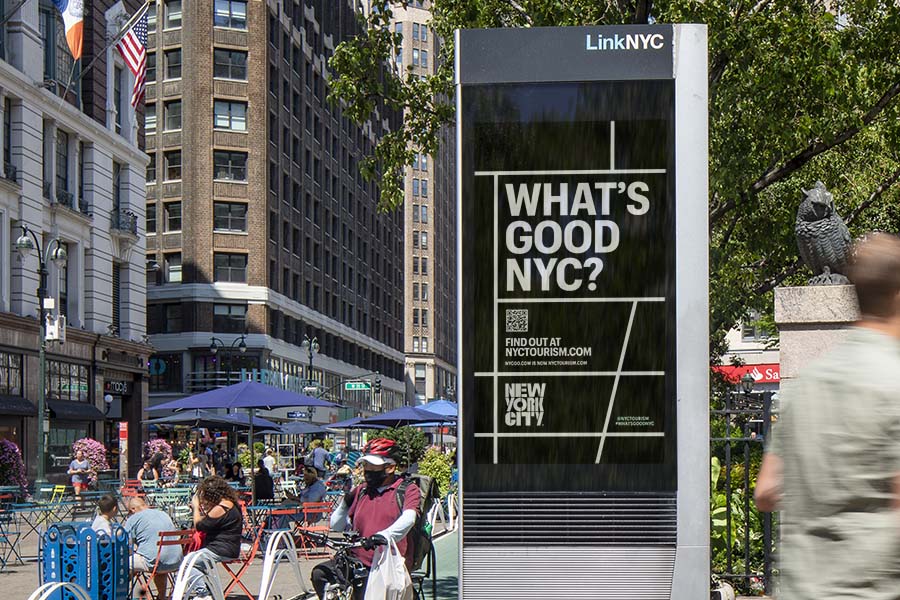
The new NYCtourism.com website debuted in June with a refreshed look, bringing the new brand fully to life and providing a more intuitive experience for users, while still housing all the information visitors and our business audiences need to experience the best of the five boroughs. To spread awareness of the new site, we deployed out-of-home media (printed and digital bus shelters and LinkNYC screens) targeting locals and in-market visitors as well as a digital campaign (activating social media, account-based marketing, native display and outstream video) to reach B2B audiences to boost membership growth, convention and event bookings, tourism development inquiries and newsletter sign-ups.
Leveraging Our Complete Marketing Ecosystem
Our teams work constantly to inspire and inform potential visitors about the unique appeal of NYC as a destination. Our marketing ecosystem, anchored by our new website, serves as the central hub for travelers, locals and businesses seeking to explore the vibrant offerings of New York City. Our website emphasizes a user-centric approach, leveraging partnerships with leading travel marketing platforms and enhancing engagement with tools like QR codes, itineraries, video and other immersive content. Our email marketing program prioritizes subscriber engagement, sharing tailored messages for our various audiences. Our social media presence includes multiple platforms: Instagram, Facebook, X, TikTok, WeChat and Weibo for leisure travelers and LinkedIn for business audiences. NYC Tourism + Conventions also makes use of our substantial out-of-home media inventory through JCDecaux and Intersection to advertise vibrancy programs, amplify content and promote our partnerships.
Promoting the Breadth of Experiences Only Found in NYC
Content shared through our channels reinforces our commitment to celebrating New York City’s richness and diversity, ensuring a compelling presence in the digital landscape.
Our Webby Award–winning culinary content offering, Savor NYC SM , is updated monthly, along with a bimonthly feature on our social channels. Now our evergreen dining platform, Savor NYC focuses attention on the City's incredible dining scene to firmly reinforce NYC’s reputation as the dining capital of the world. The platform is an all-encompassing resource for locals and visitors, providing themes that highlight distinct cuisines, multicultural neighborhoods, seasonal dining and culinary offers. Savor NYC also showcases major citywide events and holidays through a culinary lens. Each month, the initiative receives promotion through owned, paid and earned media—including our website, social channels, email newsletters and LinkNYC screens. To date, the Savor NYC landing page on NYCtourism.com has earned over 270,000 unique page views.

Our retail hub, Shopping in NYC , is updated quarterly and supported by long-form retail social videos featured bimonthly on our channels. Our team published several articles in support of this category, including “Immerse Yourself in the Luxury of Madison Avenue,” which invites readers to explore and shop the tony Upper East Side enclave; “Your Ultimate Guide to Holiday Shopping,” sponsored by Starbucks, featuring suggestions on the best locations across the City to purchase seasonal gifts; and a refresh of “25 Essential Soho Shops,” consistently one of our website’s best-performing pieces of content. In the meantime, our dedicated retail social coverage highlighted a wide swath of venues, including The Museum of Broadway Shop, The Shops at Rockefeller Center and holiday window displays of iconic retailers like Bloomingdale’s, Nordstrom, Saks Fifth Avenue and Macy’s. Posts across Instagram, Facebook, X and YouTube were focused on promoting shopping and retail, netting 361,000 impressions and 13.2 million engagements.
Arts & Culture
Arts and culture institutions and events across the five boroughs receive promotion through our quarterly guide , featuring prominent placement on our site and in social, as well as in our consumer- and business-facing newsletters. Each offers a variety of seasonal highlights, promoting the incredible depth and diversity of the City’s cultural milieu. Among the many institutions and organizations we covered this year were the Brooklyn Museum for their Spike Lee retrospective; artist Michael Richards’ show at the Bronx Museum; the New York Philharmonic; a performance by the Alvin Ailey American Dance Theater; the Barkley Hendricks exhibition at the Frick Madison; costumes from the musical Six at The Museum of Broadway; and work from the show by artist Leslie Martinez at MoMA PS1. The Fall 2023 edition garnered 194,000 impressions and nearly 4,000 engagements alone.

Hip-Hop in NYC
We created an incredible array of content in support of the citywide celebrations of the 50th anniversary of hip-hop . That content now lives on the evergreen hip-hop hub on our website, serving as a resource for NYC visitors interested in exploring all aspects of the culture. The hub showcases inspirational stories, guides to hip-hop–themed small businesses, murals, interviews with notable figures and an interactive map with touchpoints to experience hip-hop culture across all five boroughs. Among our most important features are comprehensive guides to hip-hop history across the City; highlights of important moments in hip-hop from The Apollo Theater in Harlem; and interviews with Ralph McDaniels of Video Music Box , Debra Harris of Hush Hip Hop Tours and Rocky Bucano of The Hip Hop Museum. In addition, the team created a stunning printed map, promoted on over 150 bus shelters across the City, featuring the names of artists and places that helped shape and promote the movement. The team also inked a partnership with NYC radio celebrity Angie Martinez. We conducted our first-ever Instagram Live interview with her, and she recorded ads promoting the hip-hop hub on NYCtourism.com, distributed over Spotify. So far, the promotion has resulted in well over 100,000 unique page views.

It’s Time for Culture
Our It’s Time for Culture SM campaign, which ran in May 2023, supported the cultural community by showcasing unique value-added opportunities for arts lovers during one of the City’s prime moments on the cultural calendar. The program featured 103 events across 82 participants, and coincided with the International Contemporary Furniture Fair, Frieze New York and NYCxDesign, offering a robust set of options for cultural visitors. It’s Time for Culture was promoted via NYCtourism.com, organic social media posts, a press release and targeted pitching, email newsletters, print and digital bus shelters, and LinkNYC screens. Paid media included ads on Facebook, Instagram, TikTok, CTV, native display and SEM. In total, the program drove 115,000 landing page visits, delivered 62 million impressions on our out-of-home ads (valued at $578,000) and 7.5 million impressions for our digital paid media.
Check-In NYC
Like all of our content-driven initiatives, this ongoing series is published and promoted across both our web and social channels. As part of our mission to support NYC hotels and inspire visitation, #CheckInNYC covers a wide variety of the City’s accommodations, highlighting various hotel options, amenities, neighborhoods, new and renovated properties and only-in-New-York experiences that visitors can enjoy on a seasonal basis. Holiday- and NYC Winter Outing–themed content performed notably well. Over our social channels alone, the series has earned nearly 500,000 impressions and a 4.2% engagement rate—more than 2.5% higher than our average.
Other Content Initiatives
The team’s always-on efforts include a wealth of articles, posts and promotions that address our constituent audiences, aimed at inspiring potential travelers from diverse backgrounds to visit NYC. Each of these receives promotion through owned and paid media, including via our website, over our social channels and in our email newsletters. In honor of U.S. Travel’s National Travel and Tourism Week, we compiled a list of six unmissable walking tours across the five boroughs to highlight in a media campaign that included a roundup article on NYCtourism.com, a social media series on Instagram and a weeklong LinkNYC flight. The tours included in the campaign reflect the diversity of NYC, covering Black arts and culture in Harlem, the global flavors of Astoria, the rich history of Mott Haven, sustainable eateries and shops in Williamsburg, the living history of Richmond Town in Staten Island and the Chassidic Jewish community of Crown Heights. We highlighted the Guides Association of New York City throughout the campaign as a resource to find guides who specialize in a range of tours across the five boroughs. Broadway and Off-Broadway productions, attractions and arts organizations of all types also receive ongoing coverage on our channels, in addition to dedicated promotion in our vibrancy campaigns.
Encouraging Sector Spending During Shoulder Periods
In 2023, we conducted two editions each of NYC Broadway Week SM , NYC Off-Broadway Week SM and NYC Restaurant Week®, complemented by the return of NYC Hotel Week SM and NYC Must-See Week SM , which are part of our expansive NYC Winter Outing SM program. Over 800 organizations participated in the NYC Winter Outing 2024 programs—a record. Member businesses were very active in promoting the program on email and social media posts, which we further amplified across all NYC Tourism + Conventions channels.
Our hallmark vibrancy initiatives support our members by increasing shoulder-season demand, offering visitors and locals the opportunity to enjoy experiences at an attractive price point during traditionally slow periods across hotels, restaurants, Broadway productions, Off-Broadway shows, museums, cultural institutions, attractions and tours. NYC Tourism + Conventions social published 140 organic posts throughout the NYC Winter Outing 2024 messaging cycle (Nov 14–Feb 4), earning 3.2 million impressions and 20,200 engagements.

Eighty-seven members participated in aggregate in our “Social Splash” campaigns dedicated to each program. In addition, 35 restaurants were nominated in our first-ever “Best Menu Award,” with many spots actively participating on their social channels to get out the vote. In 2024, the campaign creative for all programs was updated to incorporate our new brand design and creative system.
Growing our Audiences
Our strategic partnerships with a diverse array of organizations assist us in promoting NYC to potential travelers from around the world while nurturing a deeper appreciation for the City's rich experiences.
Reaching More Audiences Through Strategic Partnerships
Each of our partnerships showcase the breadth of activities available in the five boroughs, providing incremental support to our member businesses. Promoting cultural celebrations, sporting events and performing arts and working alongside travel and culinary institutions allows us to expand our audiences and the reach of our content. NYC Tourism + Conventions enables partners to promote their event or project through our digital and out-of-home marketing channels in exchange for providing equal exposure for our content through the partner’s website, newsletters and events.
Entertainment and Performing Arts
St. ann’s warehouse and monsoon wedding.
Monsoon Wedding is a stage musical adaptation of the acclaimed 2001 film of the same name, directed by Mira Nair. Telling the story of an Indian family as they prepare for a lavish wedding ceremony in Delhi, the cast and crew all represented the South Asian diaspora. NYC Tourism + Conventions partnered with St. Ann’s Warehouse to boost our Asian and South Asian content by including our South Asian guides, itineraries and content in their dedicated emails, ticket confirmation emails and social media posts.
And Just Like That…
This past summer celebrated the 25th anniversary of Sex and the City and the second season of Max’s spinoff And Just Like That . NYC Tourism + Conventions partnered with the franchise to celebrate this moment by coordinating lighting displays at the Empire State Building, Javits Center, One Bryant Park, One World Trade Center and Pier 17 in exchange for promotion in Max’s owned channels. Our brand and partnership was mentioned in the show’s official media release. Our shopping guides were featured on their social accounts, and they shared illuminated building images, tagging @nyctourism and the participating buildings. Additionally, our team participated in the Empire State Building lighting ceremony alongside actress Sarah Jessica Parker, confirming our role in enhancing the City’s tourism and cultural appeal.
The Life of Pi featured NYC Tourism + Conventions as a partner of the show on their website and drove to our Asian Experience content hub through dedicated social media posts, post-trip emails and inclusion on their website. In turn, the Life of Pi was promoted in our B2C newsletter content during AAPI Heritage Month in May.

BroadwayCon
BroadwayCon is an annual convention that brings together theater fans, professionals and performers to celebrate the world of Broadway. The event provides a unique opportunity for fans to connect with each other and with the Broadway community while celebrating their love for theater. We partnered with BroadwayCon to amplify our outreach for NYC Broadway Week. We delivered 1 million LinkNYC screen impressions, an event listing on our official website and social media support in exchange for a sponsorship logo inclusion, a dedicated digital screen amplifying NYC Broadway Week, social media promotion of our messaging and a dedicated post-conference email to attendees highlighting the program.
Chelsea Film Festival
The Chelsea Film Festival returned to NYC this year with a celebration of New York City’s cultural and cinematic landscape. They hosted the world premiere of our Local Legends film series, followed by a panel featuring our SVP of Content and DiversityInitiatives, Rondel Holder. This 11th anniversary of the Chelsea Film Festival had over 2,500+ submissions. Local Legends was one of 18 Indie Episodic films shown at this festival that garnered a 10,000 in-person attendance. We marketed this festival with 2 million LinkNYC impressions, an event listing on NYCtourism.com and a presence in NYC Tourism + Conventions’ Fall Guide in exchange for a screening of our Local Legends series at the festival, logo inclusion in event communications and banner ads in event emails.
New York Comedy Festival
We continued our partnership of the New York Comedy Festival by promoting the festival on LinkNYC screens, social media and in our consumer newsletters in exchange for promotion of our comedy guide through the festival's email channels. Our video content was also aired in the event venues.
SummerStage and Park Jams
Already a partner for our Hip-Hop in NYC content hub, NYC Tourism + Conventions partnered with Mass Appeal—already a partner for our Hip-Hop in NYC content hub—for the SummerStage Park Jams event on June19, celebrating the 50th anniversary of the genre as well as Juneteenth. The event took place at Rumsey Playfield in Central Park and featured performances by renowned hip-hop artists such as DJ Premier, Grandmaster Flash and Kid Capri, among others. We provided support for the event with out-of-home placements, social amplification, paid digital media and an event listing on our website. In return, we received partnership designation, logo presence on screens during the event, a dedicated call-out at the event, and access to tickets and VIP privileges. We also licensed our NYC Parks mark in celebration of hip-hop starting in a park to develop merchandise that was sold at the event and online.

Rock & Roll Hall of Fame
NYC Tourism + Conventions partnered with the Rock & Roll Hall of Fame for its Induction Ceremony on November 3 at Barclays Center. The event was also featured in our Hip Hop 50 campaign as it honored DJ Kool Herc, a pioneering figure in the foundation of hip-hop. We provided an event listing, paid social amplification, inclusion on LinkNYC screens and Taxi TV inventory and email newsletter inclusion in exchange for an ad in the digital program for the event, an email and social post promoting our hip-hop content to their membership, and logo inclusion in the credits on the Disney+ stream of the event. This exchange served as a fitting conclusion to our yearlong celebration of hip-hop, reinforcing NYC’s stature as a city that embraces and champions diverse musical legacies.
James Beard Foundation and Queens Night Market
NYC Tourism + Conventions partnered with the James Beard Foundation and Queens Night Market to promote an exciting culinary event at the newly opened Pier 57 dining venue operated by the James Beard Foundation. As part of the AAPI Heritage Month celebration, Queens Night Market hosted a special evening at Platform by JBF. We supported the event via an event listing, social media promotion and inviting community members featured in our Asian Experience content.
Multicultural
Black gotham experience.
We partnered with City Hall’s Public Design Commission and Black Gotham Experience (BGX) on the promotion and rollout of BGX’s short film, Epicenter . The film covers the history of NYC’s City Hall through the lens of the experiences of Black New Yorkers and debuted in February in commemoration of Black History Month. We promoted the film on LinkNYC screens and in email and social posts in exchange for attribution in the film and in social posts promoting the film, as well as rights and clearances to share a cutdown of the film in our social channels.
Harlem Week
This annual festival celebrates the rich history and culture of Harlem through in-person and virtual events. Ahead of the event’s 50th anniversary in 2024, we once again supported the program with social and editorial content in exchange for sponsor designation.
Diwali on the Hudson
Our collaboration with Diwali on the Hudson, in partnership with the Desai Foundation, marked a significant milestone as we joined forces for their 10th-year capstone event celebrating Diwali in NYC. This occasion marked the first-ever celebration of Diwali as a public-school holiday in the City. We gained valuable exposure by sharing our South Asian Guide on social channels owned by Diwali on the Hudson.

In celebration of the largest annual sporting event in NYC, we partnered with the United States Tennis Association (USTA) to promote the US Open on our homepage and in our summer guide, as well as with influencer and social coverage during Fan Week. In return, the USTA promoted our site on USOpen.org, included our banner ad in their Insider email newsletter and aired our 30-second destination video to their audience of 500,000 tennis fans.
TCS New York City Marathon and NYRR Midnight Run
We continued our partnership with New York Road Runners (NYRR) with promotion of the TCS NYC Marathon. NYRR promoted our marathon viewing guide across their owned channels, including push notifications via their app, email inclusions and within their social media posts. This year’s marathon saw 51,453 runners from across 131 countries reach the finish line. The marathon app was downloaded 480,000 times and had a social media following of 859,000. In turn, we promoted the NYRR New Year’s Eve Midnight Run, adding the event to our website’s event listings and showcasing it on targeted social media posts.
JP Morgan Tournament of Champions
The JP Morgan Tournament of Champions is a professional squash tournament that features the world’s best squash players. Held January 18–25, this year marked the 26th year of the tournament at Grand Central Terminal. NYC Tourism + Conventions provided several assets to the tournament, including a custom restaurant guide around Grand Central, access to our Delegate Pass, a welcome letter from the Mayor and video assets shown at City Winery, where the watch party took place. The tournament included our logo and links to NYCtourism.com in newsletters and social media posts and promoted the Delegate Pass to their attendees.
FIFA recently announced MetLife Stadium as one of the host venues for soccer matches for the CONMEBOL Copa America 2024, which will be promoted through NYC Tourism + Conventions social channels. Matches include Chile vs Argentina (June 25), Uruguay vs Bolivia (June 27) and the semifinal match (July 9). Looking to the FIFA World Cup 26™, New York/New Jersey was awarded the final match on July 19, 2026, along with seven other matches, cementing our region as the most important stage for the world’s biggest events.

Kayak and Priceline
On October 5, Kayak and Priceline invited NYC Tourism + Conventions to create an engaging familiarization trip for 100 airline partners who were brought to NYC in celebration of the airline community. In return, we received prominent exposure throughout the event and the opportunity to present to the participants.
Expanding the Reach of NYC Marks at Home and Abroad
NYC Tourism + Conventions aligns with many organizations to reach audiences, featuring the City’s unique character in a variety of goods from well-known brands. In 2023, we entered our ninth year of partnership with the iconic New YorkCity brand Only NY. They continually reinvent and promote the NYC Parks, TheCity of New York Department of Sanitation (DSNY) and NYC marks, keeping consumers interested in quintessentially New York City brands and institutions.We are excited to work on a partnership to highlight their 10th year as a licensee in 2025.

The collaboration between NYC Tourism + Conventions and Mass Appeal in Q3 enhanced the impact of the Hip Hop 50 celebration. Through this partnership, we successfully extended licensing rights for the NYC Parks and “Made in NYC” marks. This move enabled the production of exclusive apparel items, aligning with our business objectives and showcasing the City’s hip-hop culture. These products sold out during the Park Jams events as well as Hip Hop 50 Live at Yankee Stadium. They continue to be featured on Mass Appeal’s website and contribute to our broader goal of promoting New York City's cultural richness on a global scale. In Q4, we partnered with NYC streetwear apparel brand TIER to launch an exclusive capsule collection featuring our new logo. The partnership marks the first of its kind for NYC Tourism + Conventions since the organization rebranded. The limited travel capsule collection, which features an interpretation of New York City’s new logo, brand identity and color palette, comprises hoodies, sweatpants, socks and baseball hats. The collection was promoted through our owned channels, out-of-home placements and social media channels. The partnership also included a love letter to NYC by TIER founder Nigeria Ealey. Shared on NYCtourism.com, this collaboration was also featured in Complex , Essence and Travel and Tour World .

NYC Around the World
NYC Tourism + Conventions focuses efforts on attracting both leisure and business travel. By showcasing NYC as the world’s foremost destination for business events, engaging with the travel trade, generating positive press and empowering member success, we help the City maintain its allure on the global stage.
Attracting Longer-Staying, Higher-Spending International Travelers and Meeting Delegates
Since their hiatus during the height of the pandemic, we have now fully restored our network of 17 international in-market representative agencies doing important work on the ground to build visitation and promote our members across 26 countries. These representatives sell our destination to top leisure travel trade, business event organizers and local media outlets throughout their regions. The teams’ efforts in these markets have resulted in a steady increase in lead generation and bookings for all manner of business events, such as meetings and incentive trips. Some markets are offering standout results. Brazil and Mexico are leading the incentives market from the financial, automotive, retail and pharmaceutical sectors, with short booking windows of 30 to 120 days. NYC has also secured hosting rights for various incentives from Singapore, Thailand and Australia, with potential interest from Malaysia and Indonesia for events in May and September. Canada, the United Kingdom, France and Western Europe are pivotal markets for corporate events and meetings, and leads from these regions, particularly in the technology, financial and insurance sectors, will be an important focus for our team through 2026.

This robust sales activity in market, together with our award-winning tourism campaign, kept NYC and our members front of mind for travel audiences around the world. The 2022–2023 iteration of our global marketing campaign, which had 16 distinct market executions that featured travel partners, drove more than 1 billion ad impressions and 1.7 million trips. The campaign was refreshed for 2023–2024, once again featuring Lady Liberty as the ultimate icon of our great city, beckoning potential travelers to NYC. Out-of-home advertisements and media placements launched in January for the latest iteration and will continue to run through 2024.
Showcasing NYC as the World’s Premier Business Events Destination
The Convention Development team remains focused on returning group business to NYC, engaging meeting planners at trade shows and sales missions, and promoting NYC in major markets at home and abroad.
Our Marketing team supports these efforts with media buys that amplify team activities, resulting in over 6 million ad impressions. We also produced a dedicated video for this audience to reinforce the message that NYC is where successful meetings happen.
Here at home, our Destination Services team supports meetings and events throughout the year, including major annual shows hosted in the five boroughs each year like the National Retail Federation, New York Toy Fair and Comic Con. In total, business events bring nearly 6 million visitors to the City, boosting business not just for hotels but restaurants, attractions and service providers as well. This year the team revamped the Destination Services tool kit, which contains several complimentary resources for business event professionals to assist in their planning and to help promote their events in NYC.

Inspiring and Driving Leisure Travel Through the Trade
Engaging the travel trade to drive leisure business is a major focus for our team. We showcase NYC and our members by hosting familiarization trips for top product managers and top-selling travel agents, leading sales missions (in over 12 major international markets in 2023), targeting high-value market segments (like luxury and long stays) and by providing educational and business development opportunities for trade and members.
The New York City Travel Trade Academy (TTA) was relaunched in Q2 of 2023, educating the travel trade on how to package and sell the five boroughs to potential visitors. The content is now available in 10 languages: German, Spanish, Portuguese, Japanese, Korean, Italian, French, Chinese, Hindi and English.
Our Tourism Development team also curates unforgettable experiences for niche market segments. For the luxury segment, the team fosters partnerships with industry-leading associations like Serandipians and Virtuoso, and attends key luxury trade shows like ILTM. A partnership with IGLTA also elevates New York City's profile within the LGBTQ+ travel community, highlighting tailored programs and resources for this market. Efforts to welcome Muslim travelers have been well received by the trade in the Middle East and Southeast Asia market, including promotion of the NYC Halal Travel Guide, the ability to filter restaurants to find halal offerings on our website and dedicated Muslim traveler-friendly content on NYCtourism.com. We are also committed to specifically engaging and welcoming the growing Black travel market by participating in the Black Travel Summit and successfully hosting our inaugural Black travel familiarization trip in February 2024.

The City is preparing to host the 2024 Student & Youth Travel Association’s (SYTA) conference this coming August. This is a terrific opportunity to reinforce NYC’s status as the most popular student and youth destination in North America. NYC Tourism + Conventions is hosting several business expos and reverse sales missions in the City. Members can connect with international buyers locally, saving them time and travel expenses. The travel trade and media representatives also get to discover the five boroughs in person and learn about new services, experiences and travel products across the City. In February 2024, NYC Tourism + Conventions executed two reverse sales missions and business expos, welcoming 40-plus clients from Germany, Switzerland, Austria, the Netherlands, Spain and Mexico. The team is planning more reverse sales missions and business expos later in the year with buyers from Ireland, the United Kingdom (March 25–29), France and Italy (June 16–20) and South America (August 19–23).

Keeping NYC Aspirational by Driving Positive Press Around the Globe
The Global Communications Team is constantly working to position New York City as a premier destination for leisure and business travel worldwide, evidenced by the more than 13,000 media stories they were able to affect, influence or place in 2023. Some of the year’s top themes targeted the rebound of international and business travel, a citywide celebration of hip-hop’s 50th anniversary, ways to visit NYC affordably and shoulder-season promotions showcasing our vibrancy programs featuring the hotel, restaurant, theater, attractions and arts sectors. In addition, the Global Communications team maintains a comprehensive crisis communications strategy at all times, which includes close coordination with city agencies, members, partners and stakeholders to coordinate and disseminate information relevant to the tourism industry during emergencies including weather-related situations. Media relations outreach engaged approximately 900 journalists in target feeder markets to develop highly individualized stories that speak to New York City’s diverse visitor mix. Efforts included the Visiting Media program, which hosted over 260 group and individual visits, composed of site visits, tours and hotel stays across all five boroughs, supported by our members and partners. Our more than two dozen What's New media briefings in 10 markets provided a broad update on major events, programs, and openings citywide as a source of inspiration for future stories. Global media coverage of New York City illustrates the breadth, depth and value of a visit, drives urgency to visit and reinforces the importance of tourism as a major economic driver that benefits all New Yorkers.
SUPPORTING THRIVING COMMUNITIES
We are committed to promoting sustainable tourism, cultural enrichment and economic empowerment. Through strategic partnerships, fundraising initiatives and support programs, NYC Tourism + Conventions fosters an ecosystem where local businesses flourish, neighborhoods thrive and diversity is celebrated.
Advancing Sustainability Dialogue and Best Practices
With our extensive public transportation network and density, NYC is an excellent choice for travelers mindful of sustainability. To support industry efforts to become more sustainable, we are proud to be a member of U.S. Travel’s Sustainability Committee and have ongoing partnerships with Climate Week NYC: The Nest Climate Campus, the World Travel & Tourism Council and The Climate Group. Our editorial team also publishes content on sustainability topics for both our consumer and business audiences.
Supporting Arts, Culture and Community Through the New York City Tourism Foundation
The breadth of the arts and culture scene across the five boroughs is one of the greatest strengths and advantages of our destination. Building awareness of these offerings is an ongoing commitment and supporting the wide variety of small but burgeoning nonprofit arts and cultural organizations that distinguish our city from others is another important tactic. We raise funds through our charitable arm, the New York City Tourism Foundation, to provide grants to local nonprofit, arts and cultural organizations for their own tourism and marketing efforts to build audience and awareness. The Foundation’s primary source of funding is our annual gala, held in December, where we honor industry leaders that have made a lasting impact. The 2023 edition raised over $600,000. Last summer we added a more casual and accessible fundraising event called Summer Soiree. Both of these events will return in 2024.

Empowering Member Success
NYC Tourism + Conventions’ 1,800+ members have access to a suite of business-building tools and resources. Our Membership and Events teams organize webinars detailing ways to reach consumers, travel trade and business event planners. In-person events like the annual meeting, business card exchanges and executive mixers foster professional connections with fellow members. Our Events team shares regular opportunities for members to join the Convention and Tourism Development teams at trade shows and sales missions, and members can work with us to be showcased in familiarization trips and site inspections.

We host regular webinars, our Member Talks, which cover topics from accessibility to gender-expansive hospitality training. Last year, we created a series of educational webinars called Meet the Market to educate our members on specific market segments and international regions, which also served to drive interest in joining a sales mission or deep engagement. The team hosted nine Meet the Market sessions the past year, a cross departmental effort between Membership, Events, Tourism Development and international office representatives. Markets and travel segments covered included Asia, Latin America, Northern Europe, Southern Europe, Australia/New Zealand, Canada, student travel and Black travel. Nearly 100 members went on to engage for the first time in sales missions, familiarization trips and trade shows after attending a session.
The Small Business Members Scholarship Program, now in its second year, is designed to provide qualified small businesses and cultural organizations with the necessary support and opportunity to participate in international sales missions and reverse sales missions with NYC Tourism + Conventions while sharing the true diversity of NYC experiences with the global trade. Following a comprehensive evaluation process, nine members were awarded the 2024 small business and cultural trade engagement scholarships. Additionally, through the membership portal of NYCtourism.com, members can access up-to-date market profiles and travel trend insights. Our Research team works on monthly updates to the New York City Tourism Barometer, also available to members providing information on visitor activities and spending, plus data on hotel performance, flight capacities, jobs and other helpful data. The Trend Report, published yearly each fall, provides additional detailed insights including visitation forecasts, hotel performance, traveler sentiment and global market updates.
Supporting Small Businesses Through Storytelling and Education
New York City’s variety of experiences is unmatched—a quality reflected in our members and their contributions to the City’s rich diversity. Through content on our website, social media campaigns, virtual education sessions and award-winning videos like our NYC Local Legends series, we uplift NYC’s multicultural communities to spread tourism’s economic benefits, connecting locals and visitors to the experiences that give the City its unique character. Our Tourism Ready program provides no-cost, valuable educational programming to the business community across the five boroughs on how to work with the travel trade to expand business opportunities. Through a series of free sessions, hospitality businesses learn to attract and manage group travel. These sessions also help expand tour operators’ offerings—encouraging repeat visitation and deeper exploration of the City’s neighborhoods, resulting in greater equity in tourism and economic impact. NYC Tourism + Conventions staff and members regularly participate in educational sessions and in-person experiences, learning about topics like LGBTQ+ and gender, land acknowledgements with the Lenape Center, Hispanic heritage, Diwali, accessibility, Black history and more.
2024 Strategic Priorities
In the year ahead, our work promoting the greatest city in the world will be driven by our core mission following four priority focus areas.
Continue positioning NYC as the world’s most aspirational and welcoming travel destination while influencing exploration of all five boroughs
We will continue to promote the vibrancy of all that NYC has to offer in a meaningful, consistent way across all of our channels, helping to keep our destination continually top of mind for travelers and prospective travelers around the world. Our Global Communications team will continue to work with key media outlets and influencers both locally and internationally to drive immediacy and demand, focusing on product and destination updates and promoting a positive image of NYC around the world. These updates will continue to stress not only all the can’t-miss seasonal developments and openings the City has to offer but also the new shows, restaurants, exhibitions and attractions that continue to provide a multitude of reasons to visit the five boroughs now—reinforcing that NYC is one of the most robust and diverse destinations in the world. We will also focus on promoting value and family-friendly ways to experience the City across all sectors in response to the economic challenges facing many of our key feeder markets while continuing to uplift opportunities that appeal to luxury or affluent travelers, again demonstrating the diversity of experiences available in NYC. Our social channels will continue to feature always-on content showcasing the exciting array of happenings in NYC at any given moment as well as ongoing content that supports each of our membership sectors. In addition to our internal team of experts, this content is developed by our award-winning Creator Squad, representing outstanding local voices across the categories of food, hotels, shopping, Broadway, culture and more. We will continue to showcase local businesses of all sizes, as well as community leaders and business owners across the five boroughs, to help promote neighborhood exploration and cultural diversity. Our Global Communications and Social Media teams will continue to support our signature marketing initiatives, including our vibrancy campaigns, to help drive traffic and sales to the hundreds of participating member businesses. Alongside this work, our ongoing content initiatives will continue to showcase the diverse cultural fabric of our destination, inclusive of our seasonal guides and content platforms such as The Asian Experience in NYC, The Black Experience in NYC and The Latino Experience in NYC. These platforms showcase small businesses throughout the five boroughs, helping drive curiosity and exploration, and provide ample inspiration for visitors to return. They also appeal to first-timers eager for authentic cultural experiences to pair with visits to iconic sites. Our Marketing and Tourism teams are also focused on deeper audience development across key segments, such as luxury, Black travel and LGBTQ+. Our new luxury strategy includes refreshed content on our B2C site as well as a new B2B section exclusively for the luxury travel trade, featuring a specially curated selection of luxury product, resources and guides. We will also create a Luxury Travel Trade Council to create tighter connections with the luxury trade, ensuring they have ongoing product updates and that our organization has the latest insights into this impactful segment. Additionally, we will build on the success of our first Black Travel FAM that cut across our Tourism Development, Global Communications and Convention Sales teams, bringing leaders in Black media, leisure travel and business events into the City for an immersive destination experience. We will continue our engagement with the LGBTQ+ community, focusing our consumer messaging on NYC as a safe, welcoming destination, particularly as we ramp up to WorldPride in Washington, DC, in 2025, looking toward creating visitors’ pre- and/or post-event experiences. Our focus on student and youth travel has never been more important. We will host the 2024 Student and Youth Travel Association (SYTA) conference this August and will continue to focus on value and family-friendly travel moving forward. Other highlights include our partnership with the film Ghostbusters: Frozen Empire this March and a wealth of forthcoming content features about the City’s historic sites as we look forward to the 400th anniversary of the founding of NYC in 2025 and the 250th anniversary of the founding of the United States in 2026.
Sustainably restore visitation, spending and business events
Our marketing campaigns will continue to center around two primary tranches: vibrancy campaigns designed to support our member businesses during key need periods, and our global tourism campaign designed to drive direct bookings to NYC through partnerships with airlines and tour operators around the world. Our vibrancy campaigns comprise NYC Restaurant Week, NYC Broadway Week, NYC Must-See Week, NYC Off-Broadway Week and NYC Hotel Week. These programs will continue under the NYC Winter Outing umbrella in January/February, providing more incentive to drive overnight visitation during our most critical needs period. We will continue to strive for more participation in these programs across all five boroughs to help support as many businesses as possible through the outreach efforts of our Membership and Government Affairs teams. We will also build on our support of those businesses with a suite of tools, including social media campaigns and menu-engineering tips to help them achieve as much success as possible. Further, we will continue to secure airline and rail partners to support the program, as well as the assistance of other brands that can help increase promotional reach and awareness. We will repeat our iconic NYC Restaurant Week program in July/August, as well as NYC Broadway Week and NYC Off-Broadway Week in the fall. And thanks to the invaluable support of our partner Bloomberg Connects, we will once again launch our It’s Time for Culture program this October, designed to provide a moment in the spotlight for our participating cultural members and give culture-lovers around the world a powerful reason to visit NYC at that time of year. We will continue our global tourism campaign, designed to drive direct travel bookings in our key feeder markets through the support of impactful airline and tour operator partnerships. We will develop refreshed creative that continues to iterate on the wildly popular Lady Liberty, leveraging key learnings from our 2023 SMARI results, proving that this imagery resonates with consumers at home and abroad. Our goal will be to continue spreading this effort across as many markets as possible, leveraging our international out-of-home media, courtesy of our partnership with JCDecaux, as well as digital media where possible and across key owned channels. Augmenting these efforts, our Tourism Development team will continue to work with the travel trade to train them on the latest developments in the City to promote a rich, five-borough product offering. They will continue connecting our members to the trade at key trade shows throughout the year, with a renewed effort on Reverse Sales Missions and Business Expos in tandem with our Global Communications and Convention Sales teams. This will allow us to bring more critical players into the market to experience NYC firsthand and engage with a wider variety of our member businesses. Our Convention Sales team will remain steadfast in its focus on bringing in big events of all sizes to NYC from around the world. The team plans to meet and exceed its room-night goals, continuing to grow our current and new relationships with clients both domestically and internationally to bring events to the City and confirm definite hotel room nights for our members. As part of this effort, the team will streamline trade show participation and increase participation in regional and national industry activities to best connect with business event professionals on the ground and encourage them to bring their next event to NYC. In partnership with the Creative/Content and Marketing teams, Convention Sales will update and expand its suite of marketing collateral and sales tools, as well as its ongoing B2B advertising campaigns, which is designed to drive lead generation and traffic to our Meeting Planner website for continued engagement. The team will also continue to grow its partnerships with key industry associations to keep NYC top of mind as a business event destination unlike any other in the world.
Fueling business growth through increased member engagement
We will continue to develop new and enhanced opportunities for deeper engagement with our member businesses to help drive sales and awareness. First, we will maintain a regular cadence of Business Card Exchanges across the five boroughs to create ongoing opportunities for members to network and discover new opportunities for partnerships and business building. We will also continue our popular Member Talks series, both in person and virtual, providing our members with the information and tools they need to stay competitive. We are also developing new opportunities for members to showcase their product offerings and initiatives across our ecosystem through more integrated content and ad sales opportunities, as well as sponsorships of our corporate events, such as our annual NYC Tourism Foundation Gala, our Annual Meeting, Tristate Meeting Planner Event, Member Talks, Tourism Ready, Reverse Sales Missions and Business Expos and more.
Lay the groundwork for forthcoming big events to maximize tourism impact
In 2025 and 2026, New York City will be the site for some of the biggest celebrations the world has ever seen. NYC Tourism + Conventions is already working to ensure the foundation is created now to optimally leverage them for the benefit of our members and our destination. In May 2024, we will announce our upcoming history platform to media and travel trade around the world at IPW, designed to commemorate both the 400th anniversary of the founding of NYC in 2025 and the 250th anniversary of the founding of the United States in 2026. This history platform, Founded By NYC, will commemorate both anniversaries by celebrating the unmatched creativity, innovation and influence New Yorkers have had over the world since our city’s founding. In our creative and content, we will uplift underrepresented voices and stories, particularly those of the Lenape Indian tribe, free and enslaved Black Americans, and women. Our content will cut across our editorial and social channels through an ongoing release of articles, interviews and photo galleries, celebrating the City’s past, present and future, and encouraging travelers to make their own history in NYC. Our platform will also include a partnership with the iconic Broadway musical Hamilton , because what better way to tell the story of NYC’s place in our nation’s founding than with the help of the story that started it all? This partnership will come to life in a variety of ways, with more details to be announced. As our America250 celebrations culminate in summer 2026, NYC and New Jersey will be home to the global celebration of the 2026 FIFA World Cup. Eight matches will take place at New York New Jersey Stadium (MetLife Stadium), from Group Stage Matches starting June 13 to the Finals on July 19. As part of the festivities, there will be NYNJ Fan Fest events in every borough as well as many other tournament-related events. We look forward to leveraging this enormous opportunity to not only positively showcase our destination on a global stage but to encourage visitors to come early, explore more and stay longer.
2023 Financials
During the 12-month period ending June 30, 2023, NYC Tourism + Conventions recognized $21 million of the revenue received from the City through the city contract and an additional $11.6 million in other public funding, including additional funding from the City, the American Rescue Plan and New York State funds. Revenue from the private sector—including membership—totaled an additional $11.2 million. In FY24 and beyond, the company’s city contract is subject to further PEG reductions, which are expected to negatively impact revenue by at least an additional $3 million per year over the next four years.
Board of Directors
Executive committee, ex-officios.
©2024. New York City Tourism + Conventions
ColorWhistle
Digital Web Design Agency India


Explore our Market-Fit Services
We ensure to establish websites with the latest trends as we believe that, products whose value satisfies the needs of the market and its potential customers can be efficiently successful.
Quick Links
- About Us – ColorWhistle
- Engagement Models
- Testimonials
- Case Studies
- Agency Services
- Web Development
- Web App Development
- Digital Marketing
- Travel Website Development Services Company
- Real Estate Website Development Services Company
- Education Website Development Services Company
- Healthcare Website Development Services Company
- Hotel and Restaurant Website Development Services
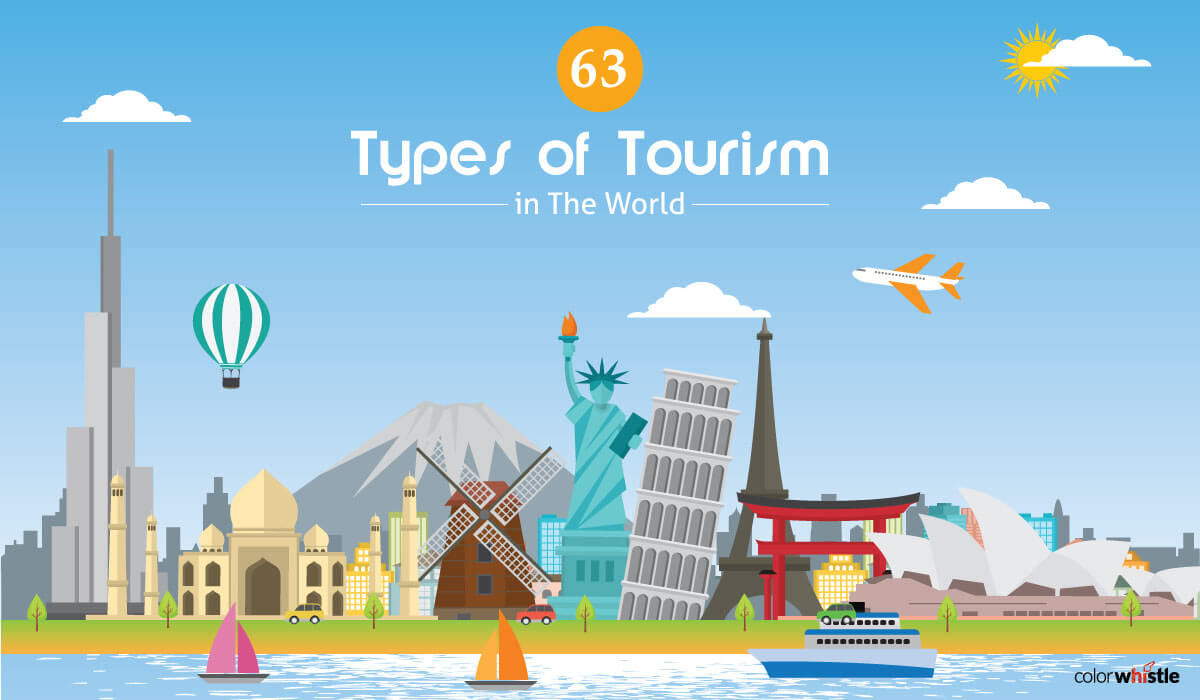
Category: Travel
Date: March 1, 2024
Types of Tourism in The World – Travel Agency Needs to Know
What are the types of tourism travel agency can offer.
The tourism realm is vast comprising numerous types. From birth tourism and space tourism to garden tourism and beyond, the available types of tourism to travelers are truly remarkable.
As a travel agency, incorporating this diverse array of tourism types into your offerings is a surefire way to achieve desirable results. Showcasing a wealth of options and catering to a wide range of travelers can capture prospective travelers.
Many experts predict that the tourism industry will recover gradually over the next few years. The UNWTO , for example, projects that international tourist arrivals will reach 1.5 billion by 2025, a significant increase compared to the all-time low of around 880 million in 2020.
Being a travel website development company specializing in travel digital marketing services , we recognize the crucial significance of understanding the various types of tourism worldwide. Our in-depth knowledge of travel website development services equips us to tailor your travel website to effectively cater to diverse travel preferences, ensuring optimal user engagement and a seamless booking experience.
63 Types of Tourism in the World
Tourism sector keeps evolving from the basics types like domestic tourism, inbound tourism, and outbound tourism. As travel agencies, you can use this information to pull out strategies and grow your tourism business.
1. Adventure Tourism

Adventure tourism involves the exploration of remote places where travelers can expect the unexpected. It involves connecting with a new culture or new landscape and at the same time being physically active. Some of the adventure tourism activities involve day hiking, backpacking, zip lining, free fall, rafting, mountain biking, skiing and snowboarding.
2. Accessible Tourism

Accessible tourism ensures people get access to tourist destinations, products and services regardless of physical limitations, disabilities or age. This tourism market was promoted through the research commissioned by the European Commission where the stakeholders provided insights on the complexities involved in accessible tourism. The European Network for Accessible Tourism has facilities such as barrier-free destinations, activities, exhibits, attractions and more.
3. Agritourism

Agritourism or agrotourism tourism normally occurs on farms. It gives travelers an opportunity to experience rural life, taste the local genuine food and get familiar with various farming tasks. This type of tourism is also referred to as farm stays in Italy. Some of the types of agritourism are direct market agritourism, experience and education agritourism, and event and recreation agritourism.
4. Alternative Tourism or Sustainability

Alternative tourism, also known as specific interest tourism (SIT) involves travel that encourages interaction with local government, people and communities. Many travelers choose alternative tourism because they love nature and want to preserve it. Some of the approaches by alternative tourism involve eco tourism, adventure tourism, rural tourism, sustainable tourism or sustainability, solidarity tourism, etc.
5. Atomic Tourism

Atomic tourism has recently emerged where tourists learn about the atomic age by traveling to sites such as museums with atomic weapons, missile silos, vehicles that carried atomic weapons. Some of the top atomic tourist sites in the world are The Trinity Site, Doom Town, The Titan Missile Museum, Hanford B Reactor, Los Alamos, The National Museum of Nuclear Science & History, Enola Gay, Chernobyl and Pripyat, Hiroshima, Bikini Atoll and Malan Military Expo Park.
6. Benefit Tourism

According to Medical Dictionary, ‘’A popular term for a non-British citizen (e.g., from the EU) who comes to the UK to live off social security and other entitlements, including child benefit, child tax credit, state pension credit, jobseeker’s allowance, and employment and support allowance.’’ These benefits are only afforded to those who meet the UK’s “right-to-reside” test.
7. Birth Tourism

Birth tourism also known as maternity tourism is the practice of traveling to another country for giving birth. The main reason for this practice is to obtain birthright citizenship. Other reasons include access to public schooling, healthcare and sponsorship for the parents. Some of the countries that give citizenship by birthright include United States, Canada, Mexico, Argentina, Brazil, Bolivia, Jamaica, and Uruguay.

8. Boat Sharing

Boatsharing is the act of sharing boats with other people who want to go to the same place. They split the cost of boat, captain or skipper cost. Some of the famous boatsharing associations in the world are Boatide, Sailbox, Bootschaft, Steamboat, Antlos and Boatshare.
9. Booze Cruise

Booze cruise is a brief trip from Britain to France or Belgium with the intention of buying personal supplies such as alcohol or tobacco in bulk. This is legally acceptable and must not be confused with smuggling. In other countries, this term is used for an outing on a ship or boat which involves a significant amount of drinking.
10. Business Tourism
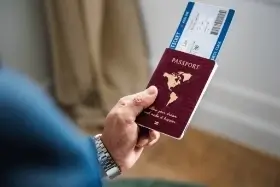
Business tourism involves traveling to a destination away from home or a normal workplace. It is a type of travel for professional purposes rather than personal. Some types of business tourism are incentive travel, exhibitions & trade fairs, conferences & meetings, and corporate events.
11. Birdwatching

Birdwatching is observing birds in their natural habitat. These birds are observed with the naked eye or visual enhancement devices such as binoculars, telescopes and listening devices. The world’s top birdwatching destinations are South Georgia Island; Cape May, New Jersey; Patanlal, Brazil; Broome, Western Australia; New Guinea Highlands; Nagaland, India; Kakum National Park, Ghana; Mindo, Ecuador; Hula Valley, Israel; and Kruger National Park; South Africa.
12. Camping
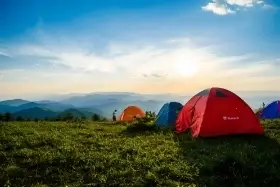
Camping is a famous outdoor activity that involves an overnight stay in a tent or recreational vehicle. It is considered as an inexpensive accommodation option. A minimum of one night is spent, distinguishing it from day-tripping, picnics, and other short-term recreational activities. There is also one more luxurious type of camping called Glamping. Some of the famous camping types are tent camping, backpacking/hiking, survivalist camping, canoe camping, RV and van camping.
13. Culinary Tourism

Culinary tourism or food tourism is for food enthusiasts who love to explore new food destinations. This is a welcome change from the standard travel itinerary as the trip involves the opportunity to learn new cooking techniques or attend a food tasting. Some of the top culinary tourism destinations in the world are Italy, Spain, Dubai, Thailand, India, Tokyo, Bangkok, Japan, Peru, Ethiopia and New Orleans.
14. Cultural Tourism

Cultural tourism is where travelers engage with a country or religion’s culture, especially the lifestyle and other elements that shaped the life of the people. Tourists get immersed with related activities such as rituals and festivals. Some of the popular cultural tourism destinations in the world are Madagascar; Lombok, Indonesia; Latvia; Haida Gwaii, British Columbia; Northern Sri Lanka; Chiang Mai, Thailand; Aristi, Greece; Western Cape, South Africa and Tamil Nadu, India.
15. Dental Tourism

Dental tourism or dental vacation involves people seeking dental care out of their local healthcare system. It may also be accompanied by a vacation. In developed countries like USA and Canada, dental care is expensive. So, dental tourists travel for low-cost dental care. Some of the famous dental tourism destinations include Mexico, Thailand, Panama, Philippines, Spain, Hungary, Romania and India.
16. Disaster Tourism

Disaster tourism or dark/black/grief tourism involves visiting environmental disaster places that are either natural or man-made. People are attracted to this type of tourism because of its social, academic or cultural essence. Some of the most famous disaster tourism spots in the world are Hurricane Katrina, Pompeii, Exxon Valdez Oil Spill, Naval Air Engineering Station Lakehurst, Nevada National Security Site, Johnstown Flood National Memorial and 9/11 Memorial.
17. Domestic Tourism

Domestic tourism involves residents of a country traveling within the same country. For example, if you are living in Manhattan and travel to Texas, it is called domestic tourism.
18. Recreational Drug Tourism

Recreational drug tourism is a type of travel for the purpose of using recreational drugs that are unavailable, illegal or expensive. These types of tourists may cross a national border to obtain a drug that is not sold in their country. Some of the popular destinations where recreational drug tourism is thriving are Peru, Morocco, Colombia, Colorado, Netherlands, Bolivia and Laos.
19. Enotourism

Enotourism, oenotourism, wine tourism, or vinitourism involves tasting, consumption or purchase of wine. These tourists visit wineries, taste wine, go on vineyard walks or even take part in the harvest. Some of the world’s top destinations for wine tastings are France, Portugal, Greece, Italy, Argentina, Australia, South Africa, Spain, New Zealand, Moldova and Chile.
20. Escorted Tour

An escorted tour is a type of tourism where travelers are guided in groups. Usually, it is a walking tour where a guide takes the group to historical or cultural sites. Under escorted tours, the guide or agency will take care of all the planning. Travelers can sit relax and enjoy the trip knowing that they are doing the best of everything.
21. Experiential Travel
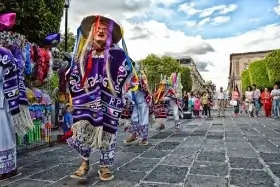
Experiential travel or immersion travel is a tourism type where travelers experience a country by enthusiastically engaging with its history, people, culture and food. Some of the famous experiential travel trips are exploring Cuban culture, tag sharks in the Exumas, crossing the Antarctic Circle, catapult at 3Gs in Nevis Vally, safari in Tanzania, visiting Nomadic Herders and Reindeer, trek to the Tiger’s Nest and swimming with whale sharks in Mexico.
22. Experimental Travel

Experimental Tourism is an approach where travelers don’t visit the places of ordinary attraction. This type of tourism involves humor, serendipity, and chance. Some of the experimental travel types include flying by night, slow-return travel, alphabet travel, twelve travel, blind travel, find your other half travel and Vacilando.
23. Extreme Tourism

Extreme tourism or shock tourism involves traveling to dangerous places such as mountains, jungles, deserts, caves, canyons etc. The main attraction is the adrenaline rush caused by the risk. Some extreme tourist attractions in the world are cage of death in Australia, cliff jumping in Norway, Iguazu boat ride in Brazil, CN tower edge walking in Toronto, volcano bungee in Chile, zorbing in New Zeland, and El Caminito Del Rey Trekking in Spain.

24. Eco tourism
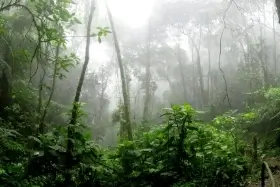
Eco tourism involves visiting undisturbed natural areas. It promotes conserving the environment and improving the well-being of local people. Some of the best eco tourism destinations in the world are Alaska, The Amazon, Antarctica, Australian Blue Mountains, Borneo, Botswana, Costa Rica, Dominica, Galapagos Islands and Himalayas.
25. Fashion Tourism

Fashion tourism involves visiting a particular place to enjoy, experiment, discover, study, trade and buy fashion. It evolved out of creative tourism, cultural tourism and shopping tourism sectors. The top fashion destinations in the world are New York, Paris, Barcelona, London, Rome, Milan, Hong Kong, Los Angeles, Berlin and Toronto.
26. Garden Tourism

Garden tourism is a niche tourism which involves traveling to botanical gardens and places that has a rich history of gardening. Famous gardens which attracts tourists around the world are Sissinghurst Castle Garden, Stourhead, Versailles, Giverny, Villandry, Rivau, Keukenhof, Villa d’Este, Villa Lante, Alhambra, Longwood Gardens, Filoli, Taj Mahal and Ryōan-ji.
27. Genealogy Tourism

Genealogy tourism or roots tourism involves tourists who travel to their ancestral place to reconnect with their past or to walk in the footsteps of their forefathers. It is a worldwide industry and prominent in countries that have experienced mass immigration.
28. Geotourism
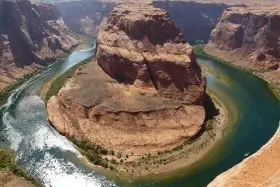
According to National Geographic, Geotourism sustains or enhances the distinctive geographical character of a place—its environment, heritage, aesthetics, culture, and the well-being of its residents. Top geotourism destinations in the world are Tennessee River Valley, Sierra Nevada. Scenic, Wild Delaware River, Heart of the Continent, Crown of the Continent, Lakes to Locks Passage, Sedona Verde Valley, Four Corners and Bahamas.
29. Halal Tourism

Halal tourism is geared towards Muslim families who follow the rules of Islam. The accommodation service providers in such destinations do not serve alcohol and have a separate swimming pool and spa facilities for men and women. Famous Halal tourism destinations in the world are Malaysia, UAE, Turkey, Indonesia, Saudi Arabia, Morocco, Jordan and Qatar.
30. Honeymoon Tourism
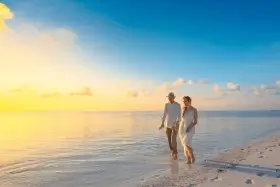
Honeymoon tourism is taken soon after a couple is married. Generally, newlyweds spend more on this than any other type of tourism. Popular honeymoon destinations in the world are Cappadocia, Turkey; Harbour Island, Bahamas; Harbour Island, Bahamas; Livingstone, Zambia; Pacuare River, Costa Rica; Sintra, Portugal; Sintra, Portugal; Railay, Thailand; and Torres del Paine, Chile.
31. Industrial Tourism

Industrial tourism are visits to industrial sites of a particular location. This concept has taken a renewed interest in recent times and attracts tourists to visit industrial heritage and modern sites. Some of the popular industrial tourism destinations in the world are Kawasaki, Japan; Saint-Nazaire, France; Belle Isle, United States; Bataan, Philippines; and Munich, Germany.
32. International Tourism
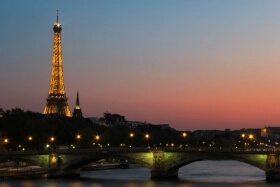
The World Tourism Organization (WTO) defines tourism as ‘traveling to and staying in places outside their usual environment for not more than one consecutive year for leisure, business and other purposes’. This tourism has increased due to the impact of greater globalization. Some of the popular international tourism destinations are France, Spain, United States, China, Italy, Mexico, Germany, Thailand and United Kingdom.
33. International Volunteering
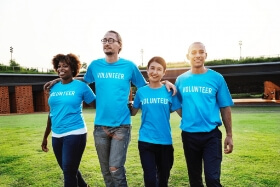
International volunteering also known as voluntourism is where people work for an organization or cause outside their home country. According to recent trends, this type of tourism has become popular in many countries. Famous international tourism destinations in the world are Thailand, Cambodia, India, Peru, Philippines, Sri Lanka, Nepal, Tanzania, Morocco and Ghana.
34. Jungle Tourism

Jungle tourism is a subcategory of adventure tourism which is nothing but traveling to the jungle regions of the earth. The top jungle tourism destinations in the world are The Jungles of Kipling, The Jungles of Borneo, The Brazilian Amazon, Sinharaja Forest Reserve, Tarzan’s Africa, The Wild Jungles of Papua New Guinea, Christmas Island’s Crazy Wildlife, Ancient Waipoua Forest, Peru Cloud Forest and Monteverde Cloud Forest.
35. Justice Tourism

Justice tourism or solidarity tourism aims to create economic opportunities for local communities, positive cultural exchange and political/historical education. This may overlap with revolutionary tourism. It is particularly promoted in Bosnia and Palestine.
36. LGBT Tourism

LGBT tourism is a form of niche tourism marketed to gay, lesbian, bisexual and transgender people. These tourists usually open about their sexual orientation or gender identity, travel to LGBT friendly destinations and travel with other LGBT people irrespective of destination. The top LGBT tourism destinations are Montreal, Brno, Myanmar, New York, New York, Thailand, Chicago, Sitges, Tel Aviv, Puerto Rico, Taipei, Barcelona, Rio de Janeiro and Saba.
37. Libel Tourism

According to Dictionary.com, the act of suing a writer for alleged defamation in a foreign jurisdiction where there are weak libel laws. England, Singapore, New Zealand, Kyrgyzstan and Australia are popular libel tourism destinations.
38. Literary Tourism
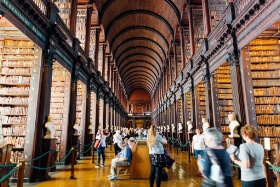
Literary tourism deals with tourists visiting birthplaces, burial sites, museums and other sites associated with authors or literary creations. Some scholars refer to this as a contemporary type of secular pilgrimage. Popular literary tourism destinations are London, Stratford-upon-Avon, Edinburgh, Dublin, New York, Concord, Paris, San Francisco, Rome and St Petersburg, Russia.
39. Militarism Heritage Tourism

Militarism heritage tourism is a type of tourism where people visit former military sites. Some of the famous militarism heritage tourism locations are World War (I, II), Pacific Wars, Holocaust remembrance, American Revolution and more.
40. Motorcycle Touring

Motorcycle touring involves a motorcycle. Tourists either buy or rent bikes that are equipped for long travel and luggage carrying capacity. Some of the popular motorcycle riding spots in the world are Leh & Ladakh, Ceuta to Marrakesh loop, Pyrenees Loop, Cape Town Circuit, Dales and Moors, Istanbul to Anatolia, Chasing Che, Tibet to Everest and Australia’s Great Ocean Road.
41. Music Tourism

Music tourism involves visiting a city or town to see musical festival or music performance. In recent years, music tourism has transformed into a massive global phenomenon. Popular destinations for music tourism are Liverpool, Havana, Pune, Trinidad and Tobago, Tokyo, Vienna, Asheville, Essaouira and Berlin.
42. Medical Tourism

Medical tourism refers to people traveling to another country to get medical treatment. People from developed countries travel to developing countries to get low-priced medical treatment. Popular medical tourism destinations in the world are India, Malaysia, Brazil, Thailand, Mexico, Costa Rica, Taiwan, South Korea and Singapore.
43. Nautical Tourism
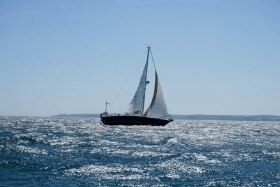
Nautical tourism combines sailing and boating with vacation activities. It also encompasses marine tourism activities such as sailing, yachting, cruising and diving, coastal water sports, boat shows and more. Some of the world’s top nautical tourism destinations are Croatia, Netherlands, Australia, South America and the United States.
44. Political Tourism

Political tourism refers to journeys taken with political intent. Such trips involve traveling to the areas of conflict to study the circumstances, understand the situations of both sides and develop knowledge about local history. Some of the popular political tourism destinations are Israel, Palestine and Africa.
45. Religious Tourism
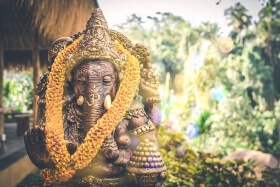
Religious tourism also known as faith tourism refers to traveling individually or in groups to holy sites. These sites are also visited by non-religious tourists who want to know the cultural, historical and religious significance. Famous religious tourism destinations in the world are Shwedagon Pagoda, Basilica of San Vitale, MECCA, Harmandir Sahib, Temple of Heaven, Bahá’í Gardens, The Vatican, Wat Rong Khun, Saint Basil’s Cathedral, Paro Taktsang, Spanish Synagogue, and Jerusalem
46. River Cruise

River cruise is a voyage along inland waterways which has several port stops along the way. Typically, travel time lasts longer than a week. Some of the world’s popular river cruise are River Nile cruise, Amazon river cruise, Yangtze river cruise, Danube river cruise, Mekong river cruise, Rhine river cruise, Volga river Cruise, Kerala backwaters cruise, Mississippi river cruise and Douro cruise.
47. Romance Tours

Romance tours are organized by tour operators where men go to countries to meet women for either romance or marriage. These types of tour first took place in Russia and the CIA, but recently moved to other parts of the world such as South America and Asia.
48. Rural Tourism
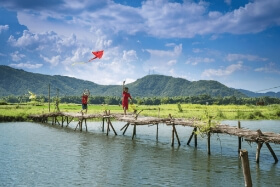
Rural tourism occurs in rural environments and involves rural experience. Tourists visit these places to understand the lifestyle of these people. Some of the popular rural tourism destinations are Pielachtal, Dirndl, Durbuy, Sveti Martin na Muri, Troodos, Florina, Örség, Clonakilty District, Specchia, Kuldiga, Theerthamalai and Nadur

49. Wildlife Tourism & Safari Holidays

Wildlife Tourism and Safari holidays involve watching wild animals in their natural habitat to observe and photograph wildlife. Wildlife Tourism generates the most number of revenues in several African countries. Popular safari destinations in the world are Victoria Falls, Serengeti National Park, Kruger National Park, Masai Mara National Reserve, Ngorongoro Crater, Addor Elephant National Park, Tarangire National Park, Amboseli National Park, Sabi Sands Game Reserve and Chobe National Park.
50. Science Tourism

Science tourism is visiting and exploring scientific landmarks such as museums, laboratories, observatories and universities. It also includes viewing scientific events such as solar eclipse. Top scientific tourism destinations in the world are The Long Now 10,000 Year Clock, Nevada’s Solar System in Black Rock, Hobby-Eberly Telescope, Large Hadron Collider, Tesla’s laboratories, Blood Falls, Antarctica’s Dry Valleys and SpaceX Research Facility.
51. Self-Guided Tour
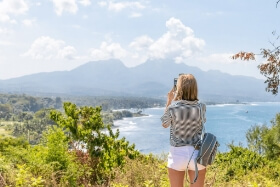
Self-guided tour or self-governing tour or solo trips is a type of tour where the traveler is responsible for getting from point A to point B on their own. They travel based on information such as maps, instructions and suggestions provided by tourist attractions. Some of the popular types of self-guided tours are walking tours, cycling tours and cross-country skiing.
52. Set-Jetting

Set-jetting is the latest trend that involves traveling to destinations that are seen in movies. Visiting stately homes like in the Jane Austin movies, touring London in high-speed boats like James Bond are good examples. Top set-jetting destinations in the world are Breaking Bad (New Mexico), Harry Potter (England) and The Wire (USA). there is also one more type of tourism called Tolkien tourism where fans of the Lord Of The Rings universe travel to the sites of the film, especially in New Zealand.
53. Slum Tourism
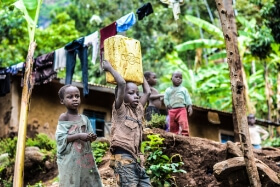
Slum tourism or ghetto tourism involves visiting impoverished areas. The purpose of this tourism is to provide tourists a chance to see the ‘non-touristy’ areas of a country. Some of the top slum tourism destinations in the world are South Africa, India, Brazil, Poland, Kenya, Philippines and others.
54. Space Tourism

Space tourism involves traveling into space for recreational purposes. Even though this sounds futuristic, it has already established history. A Russian Space Agency has already facilitated successful orbital space tourism. The different types of space tourism are orbital, suborbital and lunar.
55. Sports Tourism
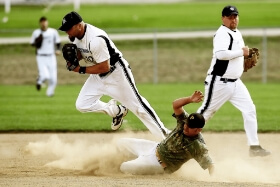
Sports tourism involves either observing or participating in a sporting event. It is one of the fastest-growing sectors and equates to $7.68 billion. Sports tourism is also classified into sports event tourism, celebrity and nostalgia sport tourism and active sport tourism. Normally, tourists are attracted to events such as the Olympic Games, the FIFA World Cup, F1 Grand Prix, World Tennis Championship, BWF World Championships and Cricket World Cup.
56. Stag Party Tourism

Stag party tourism is participating in a bachelor party which is usually held in another country. Some of the famous stag party tourism destinations are Central Europe and the Baltics, Amsterdam, UK and Spain.
57. Sustainable Tourism

Sustainable tourism or responsible tourism involves traveling to a place in order to make a positive impact on the environment, society and economy. It benefits everyone involved and not just one half of the equation. The top sustainable tourism destinations in the world are the Republic of Guyana, Ljubljana, Slovenia, Portugal, Chumbe Island in Tanzania, Bardia National Park and Ecuador’s Galapagos National Park.
58. Three-Dimensional Virtual Tourism

3DVT or 3D virtual tourism allows travellers to explore a place without physically travelling via a smartphone or computer. Such type of tours are created with 3D models and 2D panoramic images, a sequence of hyperlinked still or video images, and image-based models of the real world along with sound effects and text.
59. Dark Tourism or Tombstone Tourist

Darko Tourism or Tombstone tourist is an individual who enjoys history of famous deaths, cemeteries, epitaphs and gravestone rubbing. Such type of tourists are particularly interested in the historical aspect of such places. Dark tourism is related to this types of tourism activities.
60. War Tourism

War tourism involves travelling to war zones for sightseeing or historical study. Such types of tourists get the thrill in travelling to dangerous and forbidden places. Some of the top war tourism destinations in the world are Baghdad, Iraq; Damascus, Syria; Mogadishu, Somalia; Gaza, Palestine, Kashmir, India; Jonglei and Upper Nile, South Sudan; Tripoli, Libya; Central African Republic; Kabul, Afghanistan; and Yemen.
61. Water Tourism
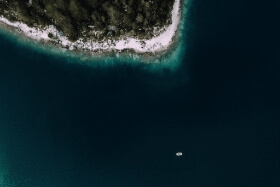
Water tourism or nautical tourism combines sailing and boating with vacation & holiday. When people plan to travel on a vacation, many have a strong desire to head to the water. Some of the popular water tourism destinations in the world are Rome, The Grand Canyon, Indonasia, New York, Costa Rica, Cambodia, Peru, Mumbai, Turkey, Australia. and Netherlands.
62. Wellness Tourism

Wellness tourism involves travelling to promote health via physical, psychological, or spiritual activities. This should not be confused with medical tourism because wellness tourists travel to maintain their health. The top wellness tourism destinations in the world are India, Spain, Singapore, Malaysia, California, Bali, Italy and Hawaii.
63. Whale Watching Tourism

Whale watching involves observing whales and dolphins in their natural habitat. Tourists visit such places for scientific and educational purposes.
The top whale watching places in the world are Seattle, USA; Kaikoura, New Zealand; Maui, Hawaii; Hermanus, South Africa; Big Sur, California; Galle, Sri Lanka; Husavik, Iceland; Los Cabos, Mexico; Quebec, Canada; and The Azores, Portugal.
What Are The Industries Related to Travel and Tourism?
Depending on the nature of travel, tourists are in need of certain facilities and services. Thus travel and tourism represent a broad range of related industries. They are,
- Hotel and lodging services
- Food and beverage industry
- Transportation
- Cultural industries
- Tour operators
- Travel agencies
- Industry dealing with real estate, finance, leasing and insurance
Drive Conversions and Boost your Business with Expert Travel Website Development.
How tourism providers can take advantage of colorwhistle’s travel website design and development services.
ColorWhistle is a reliable web development company offering unified travel website design, travel website development , and API integration solutions to b2b white label agency services partnership .
From fascinating design, secure payment and online bookings our highly professional and talented team can take care of all your needs. If you like to learn more about transforming your travel agency online, take a look at our detailed travel resource library which has many useful information for travel agencies and travel operators.
Let’s build great things together. To get started, contact us now. We will bring your travel business online and grow it with passion.
Which tourism type are you going to include in your offerings? Do share them in the comments section below.
Disclaimer – All the images in this blog belong to pexels.com. ColorWhistle does not own them.
In quest of the Perfect Travel Tech Solutions Buddy?
Be unrestricted to click the other trendy writes under this title that suits your needs the best!
- Travel Mobile App Features
- Travel Tourism Industry Evolution
- Rezdy Online Booking Software Review
- Computer Reservation System
- Online Travel Agencies
- Travel Meta Search Engine
- GDS Travel Agency Guide
Related Posts

How Predictive Maintenance Can Help the Travel Industry

Exploring the World Through AI and VR in the Travel Industry

How AI-based Travel Booking Applications Can be Developed?
About the Author - Anjana
Anjana is a full-time Copywriter at ColorWhistle managing content-related projects. She writes about website technologies, digital marketing, and industries such as travel. Plus, she has an unhealthy addiction towards online marketing, watching crime shows, and chocolates.
View Our Services
Have an idea? Request a quote
Share This Blog
16 Comments
Hii very good article thanks keep doing the good work.
Thank you for reading!
OMG 😳 U DID A GREATEST WORK today i got to know theeeeeeese types tourism all over the world Thank you so much
thank you, helped with my class work 🙂
No 47 Romance Tours, never would’ve known that was a reason to travel the world.
Business is so fun with these sites as we all had a laugh with all the different types of tourism
Nice article, Anjana !
A comprehensive article, Anjana !
NICE BLOG AND GOOD INFORMATION FOR CLIENT
very informative
This is an interesting topic. I would like to travel again and I think that the river tourism may be the one for me! Thank you for the options.
Thank you for Your information.
Thank you Anjana! this was a really cool article!
thank you this helped a lot with my class work
Thanks for your good information From India ❤️
Very informative 👏
Leave a Reply Cancel reply
Your email address will not be published. Required fields are marked *
Ready to get started?
Let’s craft your next digital story

Sure thing, leave us your details and one of our representatives will be happy to call you back!
Eg: John Doe
Eg: United States
Eg: [email protected]
More the details, speeder the process :)

150 fascinating types of tourism you didn’t know existed
Disclaimer: Some posts on Tourism Teacher may contain affiliate links. If you appreciate this content, you can show your support by making a purchase through these links or by buying me a coffee . Thank you for your support!
There are many different types of tourism that make up the tourism industry and I have created the most comprehensive list of the different types of tourism on the internet especially for you. Read on to learn all about the most common through to the most unusual and fascinating types of tourism…
Adventure tourism
Alternative tourism, backpacking, business tourism, cruise tourism, dark tourism, domestic tourism, enclave tourism, beach tourism, honeymoon tourism, inbound tourism, international tourism, marine tourism, mass tourism, mountain tourism, outbound tourism, package tourism, recreational tourism, regional tourism, sex tourism, sports tourism, urban tourism, visiting friends and relatives (vfr), winter tourism, agritourism, couchsurfing, culinary tourism, danger tourism, dental tourism, disaster tourism, doom tourism, flashpacking, genealogy tourism, health tourism, insta tourism, lgbt tourism, literary tourism, medical tourism, minimoon tourism, niche tourism, overlanding, overtourism, pilgrimage tourism, rural tourism, smart tourism, space tourism, special interest tourism, vegan tourism, village tourism, vinitourism, virtual tourism, volunteer tourism, accessible tourism, community based tourism, cultural tourism, educational tourism, ethical tourism, ethnic tourism, experiential tourism, food tourism, homestay tourism, nature tourism, orphanage tourism, philanthropic tourism, pro-poor tourism, responsible tourism, slow tourism, sustainable tourism, benefit tourism, aid tourism, ancestry tourism, astro tourism, atomic tourism, cemetery tourism, communism tourism, birth tourism, cold war tourism, extreme tourism, fashion tourism, fertility tourism, ghetto tourism, grave tourism, industrial tourism, iron curtain tourism, jihadi tourism, justice tourism, libel tourism, narco tourism, nuclear tourism, red tourism, reproductive tourism, suicide tourism, tefl tourism, tolkien tourism, animal tourism, celebrity tourism, babymoon tourism, black tourism, booze tourism, charity tourism, christian tourism, conference tourism, drug tourism, film tourism, garden tourism, gay tourism, genocide tourism, grief tourism, halal tourism, hen party tourism, historical tourism, holocaust tourism, jungle tourism, kosher tourism, last-chance tourism, lighthouse tourism, linguistic tourism, nautical tourism, nightlife tourism, oenotourism, photographic tourism, pink tourism, pleasure tourism, pokemon-go tourism, polar tourism, postmodern tourism, religious tourism, romance tourism, roots tourism, safari tourism, screen tourism, self-guided tourism, shark tourism, shock tourism, shopping tourism, slum tourism, stag party tourism, thanatourism, tombstone tourism, township tourism, war tourism, water tourism, wellness tourism, wildlife tourism, wine tourism, types of tourism: to conclude, most common types of tourism.
Lets start off by looking at the most common types of tourism that you are likely to come across.
Adventure tourism is one of the most exciting types of tourism. Adventure tourism is tourism which involves a degree of risk. It typically requires specialist skills or physical exertion. According to the Adventure Travel Trade Association, adventure travel includes activities involving physical activity, a cultural exchange, and a connection with nature. Some examples of adventure tourism activities include rock climbing, skydiving, white water rafting, mountain climbing, zip-lining and paragliding.

Alternative tourism is the umbrella term for a number of niche tourism forms, therefore it actually encompasses several different types of tourism. It is seen as the paradox of mass tourism. It typically involves travel that is seen as being personal and authentic and encourages interaction with the local environment, people and communities. Many types of tourism are classified ‘alternative’, such as; volunteer tourism , sustainable tourism , community tourism and medical tourism.
Backpacking is essentially the act of travelling with a backpack. It is typically associated with budget, long-term, independent travel and is common undertaken by travellers in their twenties. However, the nature of backpacking has, in recent years, changed. Whilst some tourists do fit the typically description of young, budget tourists on a gap year, there has been an emergence of older backpackers, backpacking families and wealthy backpackers (see-flashpacker).
Business tourism , or business travel, is one of the most important types of tourism there is, because it is so big! Business tourism is essentially a form of travel which involves undertaking business activities that are based away from home. The United Nations World Tourism Organization (UNWTO) defines tourists as people ‘traveling to and staying in places outside their usual environment for not more than one consecutive year for leisure, business and other purposes’, thus making business an important and integral sector of the tourism economy. Business tourism activities includes attending meetings, congresses, exhibitions, incentive travel and corporate hospitality.

Cruise tourism refers to holidays which are entirely or partly based on a cruise ship. It enables tourists to experience a multi-centre holiday, whereby they spend time at various destinations throughout their trip. Types of cruise vary from small yachts to mega ships and can take place on the ocean, river or fjords. Cruise tourism is popular in the Caribbean, Mediterranean and Arctic amongst other destinations.
Dark tourism , also known as black tourism, thanatourism or grief tourism, is tourism that is associated with death or tragedy. The act of dark tourism is somewhat controversial, with some viewing it as an act of respect and others as unethical practice. Popular dark tourism attractions include Auschwitz, Chernobyl and Ground Zero. Lesser known dark tourism attractions might include cemeteries, zombie-themed events or historical museums.
Domestic tourism is one of the biggest types of tourism worldwide. Domestic tourism is the act of travelling for business or leisure within one’s home country. According to the UNWTO, a person must be away from their usual place of residence for at least one night to qualify as a domestic tourist. Popular destinations for domestic tourism include the USA, India and China.
Enclave tourism is tourism which occurs in a confined geographical space. Typically facilitated by tour operators, enclave tourism enables the tourist to have an all-inclusive experience within their holiday resort or holiday area. This will typically include food, drink and pre-organised activities and tours. Enclave tourism is one of the major types of tourism that is criticised for its lack of economic contribution to host communities and is often associated with package holidays and cruises.
Beach tourism is one of the most popular types of tourism. Beach tourism is when which the physical beach landscape is a prominent element of the holiday. This will often encompass the traditional seaside and package holidays that are popular in Europe. Beach tourism can involve a range of activities and hospitality services including water sports, boating and fishing.
A honeymoon is the holiday taken soon after a marriage has taken place. Newly-wed couples tend to spend significantly more money on a honeymoon than on an ordinary holiday, often choosing destinations renowned for their romantic natures. Popular honeymoon destinations include the Maldives, Hawaii and Bali.

Inbound tourism is the act of a person travelling to a destination within which they would not usually reside. They are essentially coming ‘in’ the country. Many destinations rely heavily on inbound tourism, for example Spain, the Caribbean or the Maldives . Inbound tourism is one of the most important types of tourism.
International tourism is the act of travellers crossing international boarders for the purpose of business or leisure. International tourism has grown considerably in recent years due to rises in disposable income and cheap airfares. International tourism is more popular in Europe, where countries are relatively close together, than it is in larger countries such as the United States of America, China or India. International tourism is one of the most important types of tourism around the world.
Marine tourism is one of the types of tourism which involves the use of boats as part of a holiday experience. It includes holiday whereby the tourist resides on a boat, such as a cruise or sailing trip. It can also include holidays which feature boating events or activities, such as regattas, boat tours or deep sea fishing. Also known as nautical tourism.
Mass tourism is the movement of large numbers of people who choose to undertake their leisure pursuits in a given area. Commonly associated with package tourism, mass tourism destinations tend to be associated with reduced cost or budget holidays and have extreme peaks and troughs depending on the season. Mass tourism is typically associated with negative connotations of environmental degradation, cultural erosion and overpopulation. Mass tourism is closely associated with overtourism . Mass tourism is another example of one of the types of tourism that is somewhat controversial.
Mountain tourism is tourism which takes place in a mountain region. It will typically involve mountain-oriented activities such as climbing, hiking, mountain bike riding or skiing. Popular mountain ranges that host tourism activities include the Alps, the Himalayas and the Andes .
Outbound tourism refers to the act of leaving one’s home country to visit a holiday destination abroad. Countries that are small or that do not have a variety of tourist provision tend to experience high levels of outbound tourism. Outbound tourism is also popular amongst countries that are within close proximity of desirable overseas holiday destinations. Outbound tourism is one of the biggest and most important types of tourism around the world.
Package tourism refers to organised holidays whereby individual components are combined and sold as a packaged product. Traditionally such holidays are organised by a tour operator and include accommodation, transport and transfers. Nowadays, however, there has been a rise in post-modern packages, which include a variety of components packaged together to suit the needs of niche tourism forms, for example a volunteer tourism package . There is also an increasing number of people opting to organise their own holidays through the use of dynamic packaging . Traditional package tourism is one of the few types of tourism that has been in decline in recent years, as consumers seek more alternative and niche experiences.
Recreational tourism is tourism whereby the ultimate aim is recreation. This broad term can be applied to most tourism forms which have leisure pursuits and enjoyment at their core. Recreational tourism covers a wide spectrum of activities, ranging from being a spectator at a sports event to taking cooking classes to hiking. Recreation is at the heart of most types of tourism!
Regional tourism is the act of travelling to a particular region for business or leisure for more than one night. A region is defined by geographical area designated by a governmental organisation or tourism bureau as having common cultural or environmental characteristics.
Sex tourism involves travel to a particular destination to pursue sexual services. Sex tourism is usually associated with prostitution, although the sex tourism industry also encompasses the search for ‘mail brides’, sex shows and sex slavery. Sex tourism is illegal in many countries. Popular sex tourism destinations include Amsterdam, Thailand and The Gambia. Sex tourism is one of the most controversial types of tourism.
Sports tourism can be categorised into four segments. Sports event tourism is the act of attending or watching major sporting events such as the Olympics or the Football World Cup. Nostalgia sports tourism is the act of visiting attractions of particular sporting significance such as the Calgary Olympic Park. Active sports tourism is when a tourist travels for a particular physical activity such as yoga, golf or surfing. Passive sports tourism is when a tourist travels with the intentions of spectating, for example to watch a tennis match at at Wimbledon Championships or to watch a Manchester United football match. Sports tourism is one of the biggest types of tourism in the world.
Urban tourism refers to the notion of undertaking tourist activities in a built up, or urban, area. Popular urban tourism activities include visiting monuments, observing architecture and making use of cultural amenities such as museums, local hospitality and entertainment. Urban tourism is the paradox of rural tourism . Urban tourism is one of the most popular types of tourism.
Visiting friends and relatives , commonly referred to as VFR, is a popular form of tourism worldwide. VFR constitutes the act of travelling to home or friends and family or to a place of mutual convenience. VFR is particularly popular in areas that have been subjected to high immigration such as Pakistan, Mexico and Poland .
Winter tourism involves leisure activities that take place in cold climates. Winter tourism takes place at different times of the year, depending on where in the world it is located. Typical winter activities include skiing and snowboarding, sledging, wildlife spotting and ice fishing.
New and emerging types of tourism
There are many types of tourism that are either new or are gaining in popularity. Lets take a look at what these are.
Agritourism , also referred to as agricultural tourism, argotourism or farm tourism is a subset of the rural tourism industry. It focusses on agricultural operations and involves tourist activities based in or around farms. This includes activities such as wine tours, horseback riding, clay bird shooting, animal petting and historical agricultural exhibits. Agritourism is more common than many people realise and is one of the types of tourism that often goes unnoticed.
Couchsurfing is based on the concept of hospitality, whereby tourists will stay on a couch, bed or other sleeping area in a person’s house, free of charge. Couchsurfing is more than just a means of finding accommodation; it is a hospitality and social networking service which facilitates cultural exchange worldwide. There are a range of apps that facilitate that facilitate couchsurfing .
Culinary tourism , one of the types of tourism also known as food tourism, is the act of pursuing unique and memorable eating and drinking experiences. Seen as a sub-sector of cultural tourism , it enables the tourist to try local authentic delicacies and partake in traditional food and drink activities. Such experiences are varied and can range from drinking vodka shots with your meal whilst travelling Russia to taking a cooking class in Northern Thailand.
Danger tourism, also commonly referred to as extreme tourism or shock tourism, is the act of travelling to a destination to undertake extreme activities. An extension of adventure tourism, this type of travel is often considered dangerous. Extreme tourist activities include cliff BASE jumping in Norway, volcano bungee jumping in Chille and climbing Mount Hua in China .
Dental tourism , also known as dental vacations or dental holidays, is the act of travelling to a destination to have dental work undertaken. It is a subset of the medical tourism industry. Tourists will typically visit destinations where the treatment is available at a lower cost than in their home country. Popular dental tourism destinations include India , Thailand, Bulgaria, Turkey and Vietnam. Dental tourism is another one of the types of tourism that has grown considerably in recent years.
Disaster tourism is the act of visiting locations that have been subjected to man-made or natural environmental disasters. It is considered a sub-sector of dark tourism . Disaster tourism destinations can be permanently popular with tourists, such as Chenobyl, or they can be popular only in the aftermath of the disaster, such as Kathmandu after the 2015 earthquake or New Orleans after the 2005 hurricane.
Doom tourism, also sometimes referred to as ‘last chance tourism’, involves travelling to destinations which have been depicted as being ‘doomed’ to near extinction as a result of man-made or natural causes. Doom tourism destinations include the Maldives, which are at threat from rising sea levels, the Dead Sea , which is rapidly reducing in size and Mount Kilimanjaro , where the glaciers have reduced by more than 80% over the last century.
Flashpacking is a play on the term backpacking. Flashpacking refers to travelling with a backpack for a prolonged period of time, just as is typically associated with backpacking. However a flash packer does not adhere to a budget in the way that a backpacker commonly would. Instead, they are generally regarded as wealthy or with a significant disposable income that they are willing to spend during their travels. This is one of the lesser known types of tourism.
Geneology tourism, also known as ancestry tourism or roots tourism, is tourism which involves travel to destinations that the tourist is connected to through ancestral means. In parallel to the emergence of a number of organisations aimed at tracing a person’s family tree, this tourism form has grown in recent years. Destinations such as Scotland, The USA and Canada are popular ancestral tourism destinations given the extent of past immigration in these countries.
Glamping is an abbreviation of the term ‘glamourous camping’. It refers rot the act of camping with additional amenities and resort-style products and services that are not associated with ordinary camping. Glamping has become popular in recent years and often includes the use of specialised equipments such as yurts or pods. Popular clamping destinations include the United Kingdom, Norway, Spain and the United States of America.
Health tourism, also known as medical tourism , refers to the act of travelling to another destination for the purpose of medical treatment. Motivations of medical tourists may include reduced costs for treatments or higher quality of provision. Medical tourists may seek life-saving treatments unavailable to them at home, cosmetic surgery or dental procedures amongst a range of other medical needs. Popular destinations include India, Turkey and Panama.
Insta tourism is a new form of tourism that has emerged in response to the use of the social media platform Instagram . Over one billion people use Instagram every month, sharing images from all over the world with their followers. Whilst some Instagram users are sharing content predominantly with their friends and family, others are paid ‘Influencers’ with thousands of loyal followers. Users are often inspired by photographs that they are exposed to through the social network, which has seen a rise in tourism to places that have been featured in said images, particularly those that are shared by large-scale Influencers.
LGBT tourism, also sometimes referred to as gay tourism or pink tourism, is a form of tourism marketed towards those who identify themselves as lesbian, gay, bisexual or transgender. It encompasses LGBT only tours, events and festivals aimed at an LGBT audience and ‘LGBT friendly’ holiday packages. Whilst remaining a niche tourism form, the notion of LGBT tourism is becoming increasingly recognised by the mass market, with operators such as Thomas Cook retailing holidays to this market segment.
Literary tourism involves travelling to places connected to fictional texts or places that are associated with their authors. A form of cultural tourism , literary tourists enjoy visiting destinations that are featured in books, author’s former or current homes and author’s gravestones. Popular literary tourism destinations include Stratford Upon Avon, the home of Shakespear and Edinburgh, the home of J.K Rowling.
Medical tourism , also known as health tourism, refers to the act of travelling to another destination for the purpose of medical treatment. Motivations of medical tourists may include reduced costs for treatments or higher quality of provision. Medical tourists may seek life-saving treatments unavailable to them at home, cosmetic surgery or dental procedures amongst a range of other medical needs. Popular destinations include India, Turkey and Panama.
A minimoon is a short break taken soon after a wedding. A minimoon will typically be taken in advance of a longer holiday or honeymoon, providing couples with the opportunity to save money and to spend time planning their trip. Typically for 2-4 days, a minimoon tends to be taken close to home and is considerably less expensive than a honeymoon.
Niche tourism is the opposite of mass tourism. It is tailored to meet the specific needs of consumers according to a particular niche interest. Generally small scale, niche tourism sectors are diverse and many. Most tourism types outlined in this post are niche types of tourism.
Overlanding is a form of tourism which involves long distance journeys with the use of off-road vehicles. It is generally associated with travelling ‘the road less travelled’ and places emphasis on the journey, rather than the destination. Overlanding is popular amongst adventurous travellers and popular overloading destinations include many parts of Africa, Australia and North America.
As defined by the World Tourism Organisation, overtourism is ‘the impact of tourism on a destination, or parts thereof, that excessively influences perceived quality of life of citizens and/or quality of visitor experiences in a negative way’. Overtourism is the result of growing tourist numbers in a given area. Destinations that have suffered at the hands of overtourism include Maya Bay in Thailand, Barcelona, Maccu Picchu and Mount Everest. In some cases efforts have been made to reverse or mitigate damages caused from tourism by restricting tourist numbers, raising taxes or closing attractions all together. Overtourism is one of the most criticised types of tourism around the globe.
Pilgrimage tourism is a branch of religious tourism. It involves the undertaking of a pilgrimage which may be the sole purpose of a person’s trip or a part of a wider holiday experience. Popular religious pilgrimages include Mecca in Saudi Arabia, the Vatican City in Rome and the Western Wall in Israel. Pilgrimage tourism is one of the few types of tourism that focus on religion.
According to the World Tourism Organisation, rural tourism is ‘a type of tourism activity in which the visitor’s experience is related to a wide range of products generally linked to nature-based activities, agriculture, rural lifestyle / culture, angling and sightseeing’. Rural tourism takes place in non-urban areas such as national parks, forests or mountain areas. Popular rural tourism activities include cycling, walking or hiking. Rural tourism is one of the few types of tourism that rebounded fast during the COVID-19 pandemic and its popularity is to to continue.
Smart tourism is one of the fastest growing types of tourism. Smart tourism is defined according to the technological capabilities of a particular destination, attraction or the tourist themselves. Many destinations are now modernising to include increased use of smart technology in their operations ranging from payment methods to interactive activities. One destination that is leading the way with their smart tourism industry is China, whereby tourists can use their phones to do simple tasks such as pay for taxis, order meals, check queue times and read information on the attraction that they are visiting through a supplied QR code.
Space tourism is a type of tourism that involves an interest in space. Space tourism (as in trips to space) is one of the most innovative types of tourism and many wonder whether it will actually come to fruition. Space tourism can also include visiting space-focussed museums, watching rocket launches or travelling to destinations popular for stargazing. Most recently, there has been a lot of commercial attention centred around the concept of travelling to space as a tourist; this is something that several companies are working to achieve in the near future, including Virgin Galactic and SpaceX.
Special interest tourism is another one of the types of tourism that is becoming increasingly popular. Special interest tourism is the provision of tourist activities focussed on a particular interest. Most forms of special interest tourism are also niche tourism forms. A paradox to mass tourism , special interest markets cater for a wide range of pursuits from art to golf to dancing.
Vegan tourism is tourism that is designed to meet the needs of vegans. Growing in popularity, there are a number of tourism providers to have begun to emerge designed specifically to suit the needs of vegan tourists. This includes hotels, tour operators and event organisers.
Village tourism involves travelling to a village on an organised tour or as part of independent travel. It is often encompassed within a rural tourism holiday, given that most villages are located in rural areas. This type of tourism is popular in Asia, where many tour groups will visit local villages to learn about their cultures and traditional way of life.
Vinitourism, enotourism, oenotourismn or wine tourism is tourism which centres around wine. It includes wine appreciation, wine tasting, vineyard tours and the buying and selling of wine. Popular vinitourism destinations include France, California, South Africa and Italy, which are all known for producing good standards of wine.
Virtual tourism is the act of using technology to simulate a travel destination and its features. While it is unlikely that virtual tourism will ever replace physical visits to a destination, it has been used as a powerful marketing tool. It is also used to enhance the user experience in various attractions. Virtual tourism most commonly consists of sequences of film and images although can also include 3D and sensory experiences.
Volunteer tourism is a type of tourism whereby an individual will travel abroad to a destination that is predominantly considered ‘undeveloped’ or ‘developing’ to offer their support to those in need. According to Steven Wearing, the founder of the concept, a volunteer tourist undertakes holidays that might involve aiding or alleviating the material poverty of some groups in society, the restoration of certain environments or research into aspects of society or environment.
Sustainability-focussed types of tourism
Sustainability is key in tourism management and is a big focus now and will continue to b e in the future. As a result, there are many tourism forms that are based on sustainability principles. Lets take a look at what these are.

Accessible tourism is one of the most important types of tourism there is! This is because it is all about making the industry accessible for all. The United Nations World Tourism Organisation (UNWTO)states that accessibility for all to tourist facilities, products, and services should be a central part of any responsible and sustainable tourism policy. This includes making efforts for tourism to be inclusive for people regardless of any physical limitations, disabilities or age.

Community based tourism is one of the types of tourism that has grown the most in recent years. Charity tourism is a term used to describe holidays that benefit both the traveller and the destination. Community based tourism is based on the premise of collective responsibility, allowing the local community to have an active involvement in the development and management of tourism in the area. It often involves rural, poor and economically marginalised populations, where individuals are given the opportunity to raise money through work as land managers, entrepreneurs, produce and service providers and employees.
Cultural tourism is the act of travellers visiting particular destinations in order to experience and learn about a particular culture. This can include many activities such as; attending events and festivals, visiting museums and tasting the local food and drinks. Cultural tourism can also be an unintentional part of the tourism experience, whereby cultural immersion (with the local people, their language, customs, cuisine etc) is an inevitable part of a person’s holiday.
Ecotourism is a form of tourism directed at preserving fragile environments and eco-systems. Ecotourism commonly occurs in threatened natural environments, where the intention is to provide conservation. Ecotourism efforts include building tourist facilities that have minimal impact on the natural environment, adopting the use of products such as compost toilets or solar-powered electricity. Ecotourism has become somewhat of a ‘buzz word’ in recent years and is closely related to the concept of sustainable tourism .
Educational tourism is tourism which involves a significant amount of learning. Richie et al, the academics who coined the term, define an educational tourist as a person who is away from their home town or country overnight, where education and learning are either the main reason for their trip or where education and learning are secondary reasons but are perceived as an important way of using leisure time. Educational tourism cab involve organised learning, such as a TEFL course or gaining a diving certification. It can also involve consequential learning, where tourists are educated through their travel experiences and the activities that they choose to undertake.
Ethical tourism refers to tourism that benefits the people and the environment involved. It is closely aligned with concepts of sustainable tourism and responsible tourism and is strongly advocated by a number of pressure groups and NGOs such as Tourism Concern. Ethical tourism is one of the types of tourism that is found within a range of tourism types.
Ethnic tourism is tourism which focusses on learning about and experiencing a particular ethnicity. Ethnic tourism is a form of cultural tourism . Ethnic tourism may involve a deep cultural experience, for example through volunteer work or staying in a homestay. It may also include a lighter cultural experience, for example by watching plays or visiting museums.
Experiential tourism is derived from the concept of experiential learning, whereby a person learns and creates meaning through their experiences. This tourism type focuses on immersion with a particular destination, its culture, people, customs and histories. Experiential learning if often associated with cultural tourism and educational tourism and is popular amongst backpackers, students and tourists looking for an authentic and deep travel experience.
Food tourism , also known as culinary tourism, is the act of pursuing unique and memorable eating and drinking experiences. Seen as a sub-sector of cultural tourism , it enables the tourist to try local authentic delicacies and partake in traditional food and drink activities. Such experiences are varied and can range from drinking vodka shots with your meal whilst travelling Russia to taking a cooking class in Northern Thailand .

Geotourism is tourism that sustains or enhances the geographical features of a destination. Geotourism is one of the many types of tourism that adopt the principles of sustainable tourism at its core, with a focus on the synergy of the destination- it aims to bring together all of the elements of geographical character to create a fulfilling and rewarding tourism product. Examples of geo tourism may be holiday homes that are run locally and built with local products (e.g. stones) or local produce being sold to tourists.
Homestay tourism is a branch of community based tourism. A homestay is a form of lodging and hospitality, whereby a tourist will stay with in a local person’s residence. This tourism form is more than just an accommodation option; enabling the tourist to experience an authentic, rich cultural experience by being immersed in the lives of the hosts. Homestay tourism is popular with budget tourists, volunteer tourists , student exchange programmes and those looking for a cultural experience.
Nature tourism is a form of responsible tourism which focuses on natural areas, environmental conservation and leisure activities that involve nature. Popular nature tourism activities include bird watching, hiking, camping and wildlife spotting. Nature tourism is one of the most popular types of tourism, especially in rural areas.
Orphanage tourism is the act of tourists helping to assist in the running of orphanages. Tourists can volunteer their time or they can provide physical and financial resources to the orphanage. Orphanage tourism is most prominent in developing countries and there has been some recent negative publicity regarding the suitability of volunteers. Orphanage tourism is one of the more controversial types of tourism.
Philanthropic tourism refers to the act of doing good through tourism. Most commonly seen through large corporations, the concept of travel philanthropy has now become popular amongst individuals also. Travel philanthropy enables business or individuals to undertake or promote charitable causes that are either connected too or during their travel endeavours. Philanthropic tourism is one of the types of tourism that has been increasing in popularity in recent years.
Pro-poor tourism is not a sector of the tourism industry per se, rather it is an approach to the industry. Pro-poor tourism, often shortened to PPT, intends to provide net benefits to the poor. These can be economic, social or environmental benefits and can be achieved through a range of means such as taking part in charity tourism or purchasing a holiday package through a charitable operator. Pro-poor tourism is one of the types of tourism associated with sustainability.
Responsible tourism is one of the most important types of tourism! Responsible tourism which is undertaken in a responsible way. It has close ties with sustainable tourism and takes into consideration any environmental, social and economic impacts, minimising these where possible.
Slow tourism is based on the concept of speed. It involves travelling for a prolonged period of time at a slow pace, allowing the tourist a deep, authentic and cultural experience. An alternative tourism form, slow travel is typically associated with sustainable practices, taking into consideration the impacts of travel on the environment, society and economy. Slow travel can be undertaken in any destination, but is particularly popular amongst traditional backpacking routes in destinations such as South East Asia, Central America or Australia. Slow tourism is one of the types of tourism that has been steadily growing in popularity in recent years.
Sustainable tourism , similarly to responsible tourism , relies on the premise of taking care of the environment, society and economy. Sustainable tourism principles intend to minimise the negative impacts of tourism, whilst maximising the positive impacts. As defined in the Bruntland Report , sustainable tourism is ‘development that meets the needs of the present without compromising the ability of future generations to meet their own needs’. Sustainable tourism is one of the most important types of tourism, if not THE most important type of tourism that there is.
WWOOFING stands for world wide opportunities on organic farms. It is a form of homestay tourism, whereby the tourist works on the farm in exchange for free board. WWOOFING has grown as an industry in recent years and is particularly popular in Australia, where many international tourists undertake agricultural work in order to extend the duration of their working holiday visa
Unusual types of tourism
There are also many different types of tourism that you probably haven’t heard of! Lets take a deeper look.
Benefit tourism is the term given to people who travel to a destination with the intentions of claiming social benefits. It is one of the most controversial types of tourism. Particularly prominent in the United Kingdom with the large number of migrants from the European Union and further afield, benefit tourism has become a hot topic in the media and in the average household. It was also a major part of the Brexit campaign.
Aid tourism, also referred to as charity tourism, is a form of travel which centres around charitable activity. It can involve helping those in need directly by joining a volunteer tourism programme, for example. It can also involve booking tours and travels or providing financial donations through organisations and tour operators which promote charitable tourism, such as Tourism Concern, Barefoot or the Travel Foundation .
Ancestry tourism, also known as genealogy tourism or roots tourism, is tourism which involves travel to destinations that the tourist is connected to through ancestral means. In parallel to the emergence of a number of organisations aimed at tracing a person’s family tree, this tourism form has grown in recent years. Destinations such as Scotland, The USA and Canada are popular ancestral tourism destinations given the extent of past immigration in these countries.
A branch of space tourism , astro tourism refers to the tourism which focusses around astrology. Astro tourism includes visiting facilities related to astronomy like observatories, astrology museums or astrology tours and events.
Atomic tourism is a new form of tourism that involves visiting sites that have been subjected to atomic activity. This includes museums, bunkers and power stations. Also referred to as nuclear tourism, popular destinations include Chernobyl, Nevada test site and Hiroshima.
Cemetery tourism, also known as grave tourism or tombstone tourism, is the act of visiting graves for enjoyment. Another one of the types of tourism classified as dark tourism , many tourists will choose to visit the gravestones of famous people or cemeteries which are known for their unusual appearance or for the grandeur of the tombstones housed there. A taphophile, or tombstone tourist, may be undertaking a pilgrimage or looking to observe the stone and epitaphs. They may also enjoy gravestone rubbing. Popular cemeteries amongst tourists include the Mount of Olives in Jerusalem, Recoleta Cemetery in Buenos Aires and Arlington National Cemetery in Washington.
Communism tourism is a form of tourism which involves visiting sites or areas that are associated with past and present communist regimes. A subset of dark tourism , popular communism attractions includes the Killing Fields in Cambodia, the Mao Mausoleum in Beijing and the Museum of Communism in Prague.
Birth tourism is another one of the types of tourism that is somewhat controversial in nature. Birth tourism is the act of travelling to another country to give birth. The intended outcome is that the child will receive citizenship of the country in which they are born. Birth tourism is typically focussed on developing countries such as the United Kingdom or the USA, as people from less developed countries travel here in the belief that they can offer their child a better quality of life here than in their home country.
Begpacking is a combination of both begging and backpacking. This term in the travel and tourism literature is a relatively new phenomenon and is predominantly defined as a type of traveller who travels to a less developed country with no means of financially supporting themselves. Said tourists therefore turn to begging in the hope that locals and other travellers will contribute to their travel funds.
Cold War tourism involves travelling to sites that had significance during the Cold War or which educate tourists about the Cold War. This could include attractions such as bunkers, boarder crossings, prisons or museums.
Extreme tourism, also commonly referred to as danger tourism or shock tourism, is the act of travelling to a destination to undertake extreme activities. An extension of adventure tourism, this type of travel is often considered dangerous. Extreme tourist activities include cliff BASE jumping in Norway, volcano bungee jumping in Chille and climbing Mount Hua in China.

Fashion tourism is tourism which revolves around the concept of fashion. The most popular type of fashion tourism involves fashion events, such as Berlin fashion week or Pitti Immagine Uomo. Fashion tourism is also a branch of shopping tourism. In a wider sense, Insta tourism can also encompass notions of fashion tourism, particularly when influencers are working to promote particular clothing or accessories .
Fertility tourism is a branch of medical tourism, whereby a person travels to a destination for the purpose of fertility treatments. Fertility tourism most commonly occurs when treatment can be found in an alternative location to a person’s home at a cheaper price or higher quality. Fertility tourism is one of the types of tourism that has grown in popularity since the reduction of IVF treatments on the NHS and rise in private healthcare costs.
Ghetto tourism, also known as slum tourism, is one of the several types of tourism that involves travel to impoverished areas. During their visit, tourists will typical spectate or donate their time to help people less fortunate than themselves. Ghetto tourism has been criticised by many as being an unethical practice. It is common in many parts of the world including the townships of South Africa, the favelas of Brazil and the slums of India.

Grave tourism, also known as cemetery tourism or tombstone tourism, is the act of visiting graves for enjoyment. One of the types of tourism that fall under the category of dark tourism , many tourists will choose to visit the gravestones of famous people or cemeteries which are known for their unusual appearance or for the grandeur of the tombstones housed there. A taphophile, or tombstone tourist, may be undertaking a pilgrimage or looking to observe the stone and epitaphs. They may also enjoy gravestone rubbing. Popular cemeteries amongst tourists include the Mount of Olives in Jerusalem, Recoleta Cemetery in Buenos Aires and Arlington National Cemetery in Washington.
Industrial tourism is tourism is one of the more unusual types of tourism, despite being very common! Industrial tourism is tourism which involves visiting a site of past or present industrial action. Popular industrial sites visited by tourists include the tea plantations in Sri Lanka, copper mines in Canada and the Airbus factory in France . Sites that many people may consider to be ugly and polluting are now being transformed or used as duel purpose for tourism.
Iron curtain tourism involves travelling to sites that had significance during the Cold War or which educate tourists about the Cold War. The ‘iron curtain’ was a term used by Winston Churchill to describe the notional barrier separating the former Soviet bloc and the West prior to the decline of communism, which followed the political events in eastern Europe in 1989. Iron curtain tourism includes visiting attractions such as bunkers, boarder crossings, prisons or museums.
Jihadi tourism, also referred to as jihad tourism or jihadist tourism is the act of travelling to destinations to seek contact and collaboration with Jihadi groups. This form of tourism has emerged in response to the growth of Jihadi communities in Syria. There have cases reported of young girls travelling to Syria to become ‘Jihadi brides’ and of men travelling to seek terrorist training or to fight for terrorist groups.
Justice tourism is the act of travelling with the intentions of improving the economic conditions of those who live in the destination. Justice tourism centres around positive cultural exchange between guest and host through one-on-one interaction, the protection of the environment, and political/historical education. Justice tourism has been heavily promoted in Palestine and Bosnia.
Libel tourism is the act of travelling to a destination which has favourable libel laws. First coined by Geoffrey Robertson, to describe forum shopping for libel suits, libel tourism is usually associated with the United Kingdom, where the laws for suing a writer for alleged defamation in a foreign jurisdiction are weaker than in other destinations, such as the United States. Libel tourism is an example of one of the more controversial types of tourism.
Narco tourism is a small sector of the dark tourism industry. It refers to tourists who want to visit places of significance in central and South America that are/have been of particular significance to the narcotics industry. Narco tourism has increased as a result of the American Crime drama starring Pablo Escobar which first aired on Netflix in 2015. This is one of the more unusual types of tourism.
Nuclear tourism is a new form of tourism that involves visiting sites that have been subjected to nuclear activity. This includes museums, bunkers and power stations. Also referred to as atomic tourism, popular destinations include Chernobyl, Nevada test site and Hiroshima. As people learn more about the nuclear industry, this is one of the types of tourism that has become more popular.
Red tourism is an important part of the Chinese tourism industry which centres around locations with historical significance to Chinese Communism. According to the Chinese government’s records, more than 800 million red tourism trips are made on average every year. popular red tourism destinations include Yan’an, Shaoshan, Nanchang, Jinggang Mountain and Zunyi. Red tourism is one of the best examples of types of tourism that have been steadily growing in recent years.\
Reproductive tourism, also known as fertility tourism, is one of the types of tourism that is a branch of medical tourism , whereby a person travels to a destination for the purpose of fertility treatments. Fertility tourism most commonly occurs when treatment can be found in an alternative location to a person’s home at a cheaper price or higher quality. Fertility tourism has grown in popularity since the reduction of IVF treatments on the NHS and rise in private healthcare costs.
Suicide tourism is the act of travelling to a destination to commit suicide. Also known as euthanasia tourism, there are several suicide tourism destinations which have become popular due to a lack of legalisation in this area including Mexico, the Netherlands, Switzerland and Cambodia. In these destinations it is common for a person to have an assisted suicide. Suicide tourism also extends to those choose to kill themselves in less official capacities. Hotspots include the Aokigahara Forest in Japan, the Golden Gate Bridge in San Francisco and Beachy Head in England. Suicide tourism is one of the most controversial types of tourism there is.
TEFL tourism is the act of travelling for the purposes of teaching English as a foreign language as part of a wider tourism experience. As defined in my PhD thesis a TEFL tourist can be defined as ‘a person who travels outside of their usual environment to teach English as a foreign language, whose role shifts between tourist, educator and educatee at various points in their trip’. Popular TEFL Tourism destinations include China, Thailand, Costa Rica and Mexico. TEFL tourism is one of the types of tourism that many people are unfamiliar with, but it is definitely a sizeable industry!
Tolkien tourism is a branch of film tourism and literary tourism which focusses on the fictional stories of The Lord of the Rings. Especially prominent in New Zealand, tolkien tourism involves travelling to areas that were either featured in or are of particular significance to the films/books. Tolkien tourism is one of the lesser known types of tourism.
Other types of tourism
And lastly, lets take a look at some other types of tourism that did not fit into any of the above categories.

Animal tourism , or wildlife tourism, is tourism that is centred around observation and interaction with animals. This includes watching animals in their natural habitat, such as bird watching or going on a safari. More controversially, it includes animals which are kept in enclosures such as zoos or petting farms. Many forms of animal tourism such as swimming with dolphins or riding elephants have been heavily criticised in recent years due to growing awareness around these issues.
Celebrity tourism is tourism whereby celebrities are the main attraction. Tourists may seek to visit a celebrity tourism destination or attraction because a celebrity is currently there or has previously been there. Many destination management organisations (DMOs) will use celebrity tourism to promote a destination or attraction. Tourists may also seek to visit places that are centred around a celebrity, even though the celebrity may have never actually been there themselves. Popular celebrity tourism destinations/activities include Hollywood, the Cannes film festival, Harry Potter studio and Madam Tussauds.
A babymoon is a holiday that is taken shortly before the birth of a child, usually in the second trimester. A babymoon is seen as a last chance to relax and take a break before the arrival of the baby. Babymoons have become very popular over the last decade and are popular amongst those living in the United Kingdom, Australia and the United States of America. Popular babymoon destinations include destinations that are not too hot and that do not have mosquito borne viruses Zika and Malaria.
Black tourism, also known as dark tourism or grief tourism, is tourism that is associated with death or tragedy. The act of dark tourism is somewhat controversial, with some viewing it as an act of respect and others as unethical practice. Popular dark tourism attractions include Auschwitz, Chernobyl and Ground Zero. Lesser known dark tourism attractions might include cemeteries, zombie-themed events or historical museums.
Booze tourism is tourism which focusses around the act of consuming alcohol. Whilst this may encompass activities such as wine tasting or brewery tours, it is most commonly associated with booze cruise excursions. A booze cruise is a boat ride that involves significant levels of alcoholic consumption whilst onboard. It may also include stops at bars, parties and drinking games. Booze cruises are popular in 18-30 party destinations such as the Greek islands and parts of Spain such as Magaluf or Ibiza.
Charity tourism, also referred to as aid tourism, is a form of travel which centres around charitable activity. It can involve helping those in need directly by joining a volunteer tourism programme, for example. It can also involve booking tours and travels or providing financial donations through organisations and tour operators which promote charitable tourism, such as Tourism Concern, Barefoot or the Travel Foundation .
Christian tourism is a sub-sector of religious tourism . It is is the largest segment of the religious tourism sector, which focusses on tourism involving religious practices or pilgrimages. Christian tourism activities include visiting destinations with significance according to Christian beliefs, such as Bethlehem or Jerusalem. It can also include visits to monasteries, staying in Christian camps, undertaking fellowship vacations, missionary travel, crusades, rallies and retreats.
Conference tourism is when a person travels for the purpose of taking part in a conference. Conference tourism is usually associated with business travel and constitutes part of the MICE tourism sector.
Drug tourism is the act of travelling to a particular destination due to its ease of access to illegal drugs that might be difficult to obtain or unavailable at home. Popular drug tourism destinations include Amsterdam, where Cannabis is legally sold, South East Asia for recreational and party drugs and many parts of South and central America for cocaine.
Enotourism, oenotourism, wine tourism, or vinitourism is tourism which centres around wine. It includes wine appreciation, wine tasting, vineyard tours and the buying and selling of wine. Popular enotourism destinations include France, California , South Africa and Italy, which are all known for producing good standards of wine.
Film tourism , also referred to as screen tourism is a sub-sector of the cultural tourism industry. It is focussed on the concept of film-making and producing, whereby tourists seek to visit locations which are either featured in films, or where recording of film takes place. Popular film-induced tourism destinations include The Beach in Thailand , Dubrovnik and Northern Island as featured in the Game of Thrones and Petra which is famously known for its use in Indiana Jones and the Last Crusade. Film set examples include the Harry Potter Studios in Hertfordshire, Universal Studios in California and Pinewood Studios in London.
Garden tourism is the act of visiting places with gardening significance. It can include famous gardens, botanical gardens and lesser-known gardens. It can also include gardening events, such as the Chelsea Flower Show or Kew Orchid Festival a well as gardening museums.
Gay tourism, also sometimes referred to as LGBT tourism or pink tourism, is a form of tourism marketed towards those who identify themselves as lesbian, gay, bisexual or transgender. It encompasses LGBT only tours, events and festivals aimed at an LGBT audience and ‘LGBT friendly’ holiday packages. Whilst remaining a niche tourism form, the notion of LGBT tourism is becoming increasingly recognised by the mass market, with operators such as Thomas Cook retailing holidays to this market segment.
Genocide tourism is a sub sector of dark tourism . It is tourism which is focussed on death and killing. Popular genocide tourism locations include Cambodia, due to the Khmer Rouge regime, Vietnam, where tourists can learn about the Vietnam War and Auschwitz, a famous German concentration camp.
Grief tourism, also known as black tourism, thanatourism or dark tourism , is tourism that is associated with death or tragedy. The act of dark tourism is somewhat controversial, with some viewing it as an act of respect and others as unethical practice. Popular dark tourism attractions include Auschwitz, Chernobyl and Ground Zero. Lesser known dark tourism attractions might include cemeteries, zombie-themed events or historical museums.
Halal tourism is tourism which is designed according to the needs of Islam. Popular with strict Muslims, Halal tourist resorts, hotels and attractions will only serve meat that has been suitably handled, will not serve alcohol and have separate swimming and spa facilities for men and women. Halal tourism is popular in Indonesia, Turkey and Croatia and is growing in a number of destinations across the world. This is one of the few types of tourism that is designed around a particular religion.

Hen party tourism is one of the types of tourism connected to marriage. Hen party tourism that takes place for the purpose of being involved in a hen or bachelorette party. Traditionally organised by the Maid of Honour, the event will involve at least one night away from the participant’s usual place of residence. Hen party destinations are typically areas that have a strong nightlife scene such as Las Vegas , Ibiza or London.
Historical tourism involves visiting places of historical significance. Tourists generally travel to such places with the intentions of education and enjoyment. Visiting historical areas or attractions may constitute just one part of a larger tourism experience.
Holocaust tourism is a sub-sector of the dark tourism industry. It involves travel to destinations which were subject to macabre activities involving the Jewish population during World War Two. Popular Holocaust tourism destinations include Jewish concentration camps, such as Auschwitz, Anne Frank’s house in Amsterdam and a range of associated museums throughout central and Western Europe.
Jungle tourism is essentially tourism that occurs in the jungle. It can encompass a range of eco and sustainable travel forms and there are many such resorts that have opened up in recent years in the Amazon Rainforest , Rwanda, India and Costa Rica to name a few. Tourists will also often engage in adventure activities during their jungle stay. Popular activities include zip lining, jungle safaris, canoeing and canopy walks.
Kosher tourism is tourism which is designed to meet the needs of Orthodox Jews. Meals are designed according to religious requirements and accommodations are within walking distance of Jewish Synagogs.
Last-chance tourism, better known as doom tourism, involves travelling to destinations which have been depicted as being ‘doomed’ to near extinction as a result of man-made or natural causes. Doom tourism destinations include the Maldives, which are at threat from rising sea levels, the Dead Sea, which is rapidly reducing in size and Mount Kilimanjaro, where the glaciers have reduced by more than 80% over the last century.
Lighthouse tourism is tourism which includes visiting lighthouses. This may be to appreciate the panoramic vistas in the area or as a result of lighthouse tourism development whereby the lighthouse may have been redeveloped to serve a range of tourism purposes such as accommodation or museums.
Linguistic tourism is tourism which involves learning a language. This could be part of a formal course or it could be part of wider cultural experience. Popular destinations for language learning include much of Spain and South America to learn Spanish, France for French and Italy for Italian.
Nautical tourism is a form of tourism which involves the use of boats as part of a holiday experience. It includes holiday whereby the tourist resides on a boat, such as a cruise or sailing trip. It can also include holidays which feature boating events or activities, such as regattas, boat tours or deep sea fishing. Also known as marine tourism.
Nightlife tourism is one of the types of tourism that involves nighttime activities. Nightlife tourism usually centres around nightclubs or parties but can also include evening shows, concerts, gigs etc. Nightlife tourists are renowned for their large consumption of alcohol and drugs. Some tour operators specialise in this type of holidays, such as Thomas Cook’s 18-30 holidays. Popular nightlife destinations include Ibiza, Las Vegas and Kuta, Bali .
Oenotourism, ecotourism, wine tourism, or vinitourism is tourism which centres around wine. It includes wine appreciation, wine tasting, vineyard tours and the buying and selling of wine. Popular Oenotourism destinations include France, California, South Africa and Italy, which are all known for producing good standards of wine.
Photographic tourism is the act of visiting a particular destination with the intention of capturing it on camera. This branch of special interest tourism is often associated with picturesque destinations that tourists wish to photograph for their unique appearance, unusual imagery or personal interests. The scope of photography ranges from landscapes, artworks, cultural imagery, wildlife, food and architectures. Photographic tourism is one of the most fun types of tourism to take part in and helps to capture all of those wonderful memories!
Pink tourism is one of the types of tourism that is not known on a large scale. Pink tourism, also referred to as gay tourism or LGBT tourism, is a form of tourism marketed towards those who identify themselves as lesbian, gay, bisexual or transgender. It encompasses LGBT only tours, events and festivals aimed at an LGBT audience and ‘LGBT friendly’ holiday packages. Whilst remaining a niche tourism form, the notion of LGBT tourism is becoming increasingly recognised by the mass market, with operators such as Thomas Cook retailing holidays to this market segment.
Pleasure tourism refers to the sense of pleasure. It is one of the types of tourism which centres around the pursuit of happiness, satisfaction and enjoyment, which is achieved through travel and tourism-based endeavours. Pleasure tourism can encompass most types of tourism.
Pokemon-Go tourism arose in response to the release of the augmented reality game in 2016. Through a partnership with the UNWTO, Niantic (the developer) helped to promote global travel, whereby gamers would search for characters in a range of localities around the world. Whilst 2016 saw the explosion of this gaming phenomenon, its popularity has since declined, meaning that it is one of the few types of tourism to experience a significant decline in recent years.
Polar tourism refers to tourism that takes place in the Arctic and Antarctic regions. It is generally focussed around the concept of preservation and sustainability. This is one of the most controversial types of tourism because visiting the area generally has a significant environmental impact .
Postmodern tourism is one of the types of tourism which represents tourism activities and behaviours that are new or emerging as opposed to traditional. Postmodern tourism is commonly associated with emerging destinations and developing types of tourism.
Religious tourism , also known as faith tourism, refers to the act of travelling for the purposes of religious pilgrimage, missionary, or interest. A branch of cultural tourism , religious tourism constituted some of the earliest tourism forms. Not all religious tourists conform to beliefs of or religious practices of the attractions/destinations that they are visiting which can cause conflict between visitors and worshippers. Popular religious tourism destinations include Israel, Mecca and Varanassi.
Romance tourism is associated with holidays that facilitate the cultivation of emotional and physical relationships between tourists and members of the host community. This can be incorporated into a range of types of tourism too, such as honeymoon tourism or a babymoon. However, romance tourism is often associated with notions such as ‘Mail bride’ or ‘Thai bride’ and various degrees of sex tourism . Popular destinations for romance tourism include Thailand and The Gambia.
Roots tourism, also known as genealogy tourism or ancestry tourism, is tourism which involves travel to destinations that the tourist is connected to through ancestral means. In parallel to the emergence of a number of organisations aimed at tracing a person’s family tree, this tourism form has grown in recent years. Destinations such as Scotland, The USA and Canada are popular ancestral tourism destinations given the extent of past immigration in these countries. This is one of the types of tourism that has been growing in demand in recent years.
A safari is a type of wildlife expedition. Traditionally, tourists would seek to hunt wildlife, but nowadays it is centred around observation and photography. Safaris are most commonly found in Africa, although they can be found worldwide. Safari holidays are typically high priced attracting those with a moderate to high disposable income. This is one of the types of tourism that is particularly popular with wealthy travellers as trips often (although not always) come with high price tags.
Screen tourism, also referred to as film tourism is a sub-sector of the cultural tourism industry. It is focussed on the concept of film-making and producing, whereby tourists seek to visit locations which are either featured in films, or where recording of film takes place. Popular film-induced tourism destinations include The Beach in Thailand, Dubrovnik and Northern Island as featured in the Game of Thrones and Petra which is famously known for its use in Indiana Jones and the Last Crusade. Film set examples include the Harry Potter Studios in Hertfordshire, Universal Studios in California and Pinewood Studios in London. This is another example of one of the types of tourism that has been increasing in popularity in recent years.
Self-guided tourism is tourism which os organised and facilitated by the tourist. Through their own research and the use of self-guided maps, tours and instructions, the tourist is in sole control of their travel itinerary.
Shark tourism is a form of tourism which involves sharks. It tends to centre around the conservation of sharks and is often considered a form of ecotourism . Popular activities include taking boat trips to areas where sharks can be observed, either from the deck, or from inside a cage that is lowered under the water, known as shark cage diving. Shark tourism may also constitute part of a volunteer tourism project.

Shock tourism, also commonly referred to as danger tourism or extreme tourism, is the act of travelling to a destination to undertake extreme activities. An extension of adventure tourism , this type of travel is often considered dangerous. Extreme tourist activities include cliff BASE jumping in Norway, volcano bungee jumping in Chille and climbing Mount Hua in China.
Shopping tourism is the art of shopping during a person’s travels or leisure time whilst on holiday. It can range from shopping at duty-free in the airport, to visiting street markets to shopping in large shopping malls. Shopping tourism may be the sole purpose of a person’s trip or it may be just one component. In some parts of the world it may include haggling for the best price, whilst in others the prize may be awarded only to the highest bidder, for example in an auction. This is an example of one of the types of tourism that is popular in destinations with low prices or specific goods for sale, such as custom-made dresses in Hoi An or fake goods at the markets in Shanghai.
Slum tourism, also known as ghetto tourism, involves travel to impoverished areas. During their visit, tourists will typical spectate or donate their time to help people less fortunate than themselves. Slum tourism has been criticised by many as being an unethical practice. It is common in many parts of the world including the townships of South Africa, the favelas of Brazil and the slums of India. Slum tourism is another one of the types of tourism that is often viewed as being controversial.
Stag party tourism is another example of one of the types of tourism associated with marriage. Stag party tourism is tourism that takes place for the purpose of being involved in a stag or bachelor party. Traditionally organised by the Best Man, the event will involve at least one night away from the participant’s usual place of residence. Stag party destinations are typically areas that have a strong nightlife scene such as Las Vegas , Ibiza or London.
Thanatourism, also known as black tourism, dark tourism or grief tourism, is tourism that is associated with death or tragedy. The act of dark tourism is somewhat controversial, with some viewing it as an act of respect and others as unethical practice. Popular dark tourism attractions include Auschwitz, Chernobyl and Ground Zero. Lesser known dark tourism attractions might include cemeteries, zombie-themed events or historical museums.
Tombstone tourism, also known as cemetery tourism or grave tourism, is the act of visiting graves for enjoyment. One of the several types of tourism that is a branch of dark tourism , many tourists will choose to visit the gravestones of famous people or cemeteries which are known for their unusual appearance or for the grandeur of the tombstones housed there. A taphophile, or tombstone tourist, may be undertaking a pilgrimage or looking to observe the stone and epitaphs. They may also enjoy gravestone rubbing. Popular cemeteries amongst tourists include the Mount of Olives in Jerusalem, Recoleta Cemetery in Buenos Aires and Arlington National Cemetery in Washington.
Township tourism is a type of slum tourism in South Africa. Townships (suburban areas designated for black occupation by apartheid legislation) are visited on tours organised by local tour operators. They can also be the base for volunteer tourism projects which provide a form of pro-poor tourism to the area. Township tourism is another one of the types of tourism that is pretty controversial.
War tourism involves travel for recreational purposes to former or current areas of war. The recent trend of visiting conflict zones has influenced the rise of several travel companies specialising in sending tourists on packaged trips to destinations such as Syria, Somalia, Iraq and Israel. Some describe this type of tourism as a form of dar, danger or extreme tourism.
Water tourism is tourism which involves the use of natural or man-made water areas. It is associated with leisure activities that involve water such as fishing, swimming or water sports.
Wellness tourism , a branch of health tourism, is the act of travelling for the purpose of physical or psychological wellbeing. The wellness travel sector has seen exponential growth in recent years, with a significant rise in holidays which incorporate an element of recuperation. Popular wellness tourism destinations include Iceland for spa breaks, India for Ayurveda treatments and Bali for yoga retreats.
Wine tourism , enotourism, oenotourism or vinitourism is tourism which centres around wine. It includes wine appreciation, wine tasting, vineyard tours and the buying and selling of wine. Popular wine tourism destinations include France, California, South Africa and Italy, which are all known for producing good standards of wine.
As you can see, the tourism industry is broad and diverse. There are many different forms of tourism, some have been around for decades, whereas others are only just emerging.
Whilst I have tried to make this post as comprehensive as possible, I appreciate that there may be a type of tourism that I have missed! If you enjoyed this article, I am sure you will love these too:
- 21 Fascinating Types of Tourists Around The World
- 50 Best Beaches in Europe Everyone Must Visit
- The 13 Best Rivers of Europe
- Which countries are using the Euro? + 8 Interesting facts about the Euro!
- Which countries are in the European Union? + interesting facts!
Liked this article? Click to share!

Shopping Cart
7 key elements to develop new tourism experiences.
- June 12, 2020
- 10 Comments

Visible impact of tourism
The international tourism industry has been on hold for the past few months due to COVID 19. Closed borders, negative travel advice and no income for a large group of people. It shows us how many of the world population are actually dependent of tourism.
The recession of tourism has shown us how quickly nature flourished due to the absence of tourists. Wildlife moved back into urban areas and the Himalayas were visible again after 30 years. On the other hand, we have also seen how wildlife conservation was threatened due to the absence of tourism. It shows us tourism has a unique position to create benefits and positive impact for nature and people. If done right.
“We should use this time as a rare chance to think about how we travel” – Leigh Barnes of Intrepid Travel
Article continues below image

Developing new tourism experiences post COVID 19
The industry has been on hold, however, the urge to travel and discover the world is stronger than ever. But what do travellers expect nowadays and how can you make sure to develop good experiences that meet their needs, and are good for the planet and local people? This article gives you 7 key elements to consider when developing new tourism experiences.
- Off the beaten track
- Slow Travel
- Less frequent but longer travel
- Local travel
- Good travel
- Self-guided travel
- Personal and flexible

1. Off the beaten track
Due to COVID, social-distancing protocols and the visible negative effects of overtourism , travellers will want to avoid busy tourism crowds. Travelling to less popular and populated places is a great solution. To combat overtourism, we need travellers to not be at the same place at the same time.
Destinations need slower flows of travellers in order to stay authentic. Local people should be made priority. Develop tourism experiences that take travellers of the beaten track, into the unknown. Escape touristic highlights and show them hidden gems, discover less visited places and spread tourism impact.
2. Slow Travel
Let travellers enjoy the destination at a slower pace than they are used to. Take the entire trip into consideration. Reduce your carbon footprint by avoiding domestic flights and take the train instead. Almost every destination has beautiful scenic routes that will add value to the experience.
There will also be an increased interest in outdoor activities. Most travellers have been in lockdown for a long time and will now appreciate nature more. Take advantage of this change and include cycling , trekking and canoeing as transport mode. It’s no longer only about the destination, but more about the journey and truly experiencing the destination.
3. Less frequent but longer travel
When travelling off the beaten track and at a slower pace, travellers simply need more time to explore the destination. Thereby, in order to slow down global warming, we simply need to fly less. This doesn’t mean we can no longer travel; it just means we need to stay longer to spread the impact.
It also means travellers have the opportunity to travel beyond country highlights, experience more unique features of a country, and be able to truly connect with locals. Travelling longer will make it more special and significant. Develop three- and four-week standard trips and extensions for short trips to offer varied options.
4. Local travel
It will most likely be a while before international borders open up. This means that your usual tourists might not come back any time soon. In the meantime, there is a lot to see and do in your own destination. People are ready and excited to start travelling again after being in lockdown and will first start exploring their own surroundings.
Start developing tourism experiences that are also relevant and interesting for local people. Tailor your existing experiences to a new audience and keep in mind the tone of voice, content and itineraries. Show locals a different side of their own surroundings and let them discover and be surprised.

5. Good travel
We’ve all seen how tourism impacts destinations, both positively as negatively. Be the change and focus on good travel. Let travellers experience the destination properly. Support local communities , learn about their culture, their food, language and history. Include local hotels, restaurants, souvenir shops and guides. Let them boost the local economy .
Be sure to focus on animal welfare , nature conservation and creating a positive impact on the destination. Provide travellers with the realisation they will enjoy their trip more if they know their travel benefitting local people instead of negatively impacting them. Create purposeful and responsible experiences.
6. Self-guided travel
Due to the new guidelines of social distancing, travellers want to stay clear of other people. Take this into account and develop tourism experiences that are suitable for more intimate travel. Instead of joining larger organised group tours, travellers will now choose to travel in small groups with family and friends.
They are also more likely to choose self-drive and self-guided experiences as they can socially distance themselves from other travellers at all times. Include smaller lodges and hotels and stay away from confined spaces and tourism crowds. Make use of an app to ‘replace’ your local guide and still provide added value.
7. Personal and flexible
Personal service and tailored experiences were already important aspects. However, now it’s become more essential than ever. Travellers want to be cared for and need to feel safe for tourism to recover completely. Keep in mind your buyer persona and be ready to tailor your experiences to your clients to create a trip they feel comfortable with.
There will be a shift to touchless travel, strict health and safety protocols and digital tools to support this movement. Embrace them and show your customers you care about them. Be prepared for last-minute bookings and offer flexible cancellation conditions to build trust with your customers. They will want to be ensured they can cancel or change their trip if they don’t feel comfortable travelling.
Focus on the future
Despite this being a very difficult time for the tourism industry, take the opportunity to see the positive side of things. Invest in your business and find inspiration to develop new, good tourism experiences for the future. Use this time as a rare chance to think about how we travel. Decide for yourself and your business how you’d like to become a better tour operator.
You must be logged in to post a comment.
This is a good and comprehensive article on tourism focussing on the current issues globally.
Thank you for the compliments Hassan, very much appreciated.
This was really worth the read. Thanks for sharing Anne.
Very happy to hear that Tina, thank you for letting us know. Hopefully it will help Continent Tours to build back better!
I really enjoyed reading the article. Its brief, practical and useful.
Thank you!!
This is really amazing for sure,
Thanks so much for this promising article.
You’re welcome Keneth, very good to hear your feedback!
Great information up there, thanks a lot
Great article right here. I enjoyed reading it
The 7 key elements to develop tourism experiences post Covid 19 are all important guidelines to pay attention to, however the idea of less frequent but longer travel has stood out. The need to develop three and four week standard trips and extension for short trips to offer varied options fits well in an immersive experience and yet slowing down on global warming.
I like the idea that we can still do some business in this post covid and tailor our existing experiences into local travel. Considering that the biggest population of our people in Uganda have not explored their country this creates a new dimension of new and future travelers with-in Uganda.
Brilliant Ideas! Thanks Team!
Anne de Jong

Roadmap to sustainable travel success (free Ebook)
Discover 6 proven paths to best-selling sustainable travel experiences.
Download free roadmap
Read our latest library additions

Understanding Gen Z travel needs and demands

How to integrate sustainability across your website

8 good tourism trends for 2024

Interested in News & Deals from Saint Lucia?
Interested in news and deals from Saint Lucia?
- Name First Last
- State / Province
- Sailing/Yachting
- Culture/Cuisine
- Travel Trade
- Phone This field is for validation purposes and should be left unchanged.
Let Her Inspire You
Electronic immigration form, air arrivals only, all travellers arriving by air are encouraged to complete the form online prior to arrival. the online form can be completed wherever the internet is available, including in the departure lounge of your departure airport and on board flights that offer internet services., you may also complete the electronic form on arrival at the airport in saint lucia using the free wi-fi service., complete 1 form per family to receive a qr code by email to be presented to the authorities on arrival., complete and submit your form up to 3 days before travel to saint lucia, once you have landed, please present your receipt to customs and immigration..
For more information contact: Saint Lucia Tourism Authority Tourism Information Centre [email protected]
This site uses functional cookies and external scripts to improve your experience.
Privacy settings
Privacy Settings
This site uses functional cookies and external scripts to improve your experience. Which cookies and scripts are used and how they impact your visit is specified on the left. You may change your settings at any time. Your choices will not impact your visit.
NOTE: These settings will only apply to the browser and device you are currently using.
Facebook Pixel
Cookies are small pieces of text used to store information on web browsers. Cookies are used to store and receive identifiers and other information on computers, phones, and other devices. Other technologies, including data we store on your web browser or device, identifiers associated with your device, and other software, are used for similar purposes. In this policy, we refer to all of these technologies as “cookies.”
We use cookies if you have a Facebook account, use the Facebook Products, including our website and apps, or visit other websites and apps that use the Facebook Products (including the Like button or other Facebook Technologies). Cookies enable Facebook to offer the Facebook Products to you and to understand the information we receive about you, including information about your use of other websites and apps, whether or not you are registered or logged in.
This policy explains how we use cookies and the choices you have. Except as otherwise stated in this policy, the Data Policy ( https://www.facebook.com/about/privacy/update ) will apply to our processing of the data we collect via cookies.
Google Analytics
This website uses Google Analytics, a web analytics service provided by Google, Inc. (Google). Google Analytics uses “cookies”, which are text files placed on your computer, to help the website analyse how users use the site.
The information generated by the cookie about your use of the website (including your IP address) will be transmitted to and stored by Google on servers in the United States.
Google will use this information to evaluate your use of the website, compiling reports on website activity for website operators and providing other services related to website activity and internet usage.
Google may also transfer this information to third parties where required to do so by law, or where such third parties process the information on Google’s behalf.
Google will not associate your IP address with other data held by Google. You may refuse the use of cookies by selecting the appropriate settings on your browser, however please note that if you do this you may not be able to use the full functionality of this website.
By using this website, you consent to process data about you by Google in the manner and for the purposes set out above.
unwto tourism highlights 2022
Un tourism | bringing the world closer.
Unwto 2021: a year in review, 2021: tourism united, resilient and determined.
2021 has been a year of learning and adapting for tourism. It has proven that only by working together can the sector overcome challenges and embrace opportunities.
Gathering the global tourism community and developing concrete actions, UNWTO has led tourism’s response with the vision of not only restarting, but doing so in a more inclusive, innovative and sustainable way.

January - March
As global tourism faced up to a second year of unprecedented crisis , UNWTO began 2021 by counting the cost so far . At the same time, however, the emergence of vaccines brought hope . The Global Tourism Crisis Committee met to explore what this meant for safe travel and the restart of tourism, while the announcement of the winners of the UNWTO Global Start-up Competition recognized the role culture and creativity will play in tourism’s restart and recovery .

April - June
Collaboration and innovation were the focusat the start of the second quarter. UNWTO partnered with IATA on a new Destination Tracker to give both tourists and destinations clear, impartial and trusted advice. And a new Start-up Competition was launched to find the best ideas for accelerating rural development through tourism. In May, the launch of the Best Tourism Villages by UNWTO generated significant interest from Members in every global region.

July - September
As destinations in Europe welcomed tourists back for the peak summer season, UNWTO highlighted the role of digital solutions for the safe restart of the sector. But UNWTO also looked ahead, to a more sustainable future , working with key partners to reduce plastic waste and consumption across every part of the sector. Together, we celebrated World Tourism Day around the theme of Tourism for Inclusive Growth, a message of solidarity and determination that was echoed on a global scale.

October - December
The final quarter of 2021 began with cautious optimism as UNWTO’s Barometer showed signs of improvement in tourist arrival numbers during the summer season in the northern hemisphere. A new partnership with Netflix will bring the message of tourism as a driver of opportunity to a massive global audience, while in November, UNWTO was tourism’s voice at COP26 and signatories to the landmark Glasgow Declaration keep growing. Finally, against the backdrop of the UNWTO General Assembly , the programme of work for the coming biennium was approved and 77% of Members voted to secure a second mandate for the Secretary-General from 2022-2025.
Growing and Moving Forward
UNWTO brings together political leaders from across the globe to deliver a strong, coordinated response. Governments, destinations, fellow UN agencies and international organizations met at key international events joining efforts to rethink tourism. Institutional coordination has proven crucial to find the solutions that build a smarter, greener and safer tourism.
Leaving Nobody Behind
The pledge to ‘ leave nobody behind ’ means nobody should miss out : Not now as we support the sector in the face of crisis, and not in the future as tourism starts again. Tourism is a proven driver of equality and opportunity. And that’s why we turn words into actions, delivering guidelines and action plans , to ensure everyone can enjoy the opportunities tourism brings.
A Shared Vision
Advancing the transformation of the tourism sector , partnerships are the only way forward. In 2021, UNWTO signed agreements with international organizations and the private sector to step our vision for the future of tourism: innovation , education , sustainability , green investment , rural development.
From business as usual to Covid-19
Looking to the future
- Regional Support Office for Asia and the Pacific (RSOAP)
- Member States in Asia and the Pacific
- SUSTAINABLE TOURISM OBSERVATORIES (INSTO)

World Tourism Barometer: September 2022
UNWTO updates World Tourism Barometer and reports international tourism back to 60% of pre-pandemic levels from January to July 2022

Below are excerpts from the September 2022 release of the UNWTO Tourism Barometer :
- The steady recovery reflects strong pent-up demand for international travel, especially in the months of June and July which are part of the Northern Hemisphere summer season. The easing or lifting of travel restrictions in an increasing number of countries also contributed to boost results.
- International tourist arrivals almost tripled (+172%) in January-July 2022 compared to the same period of 2021. Numbers climbed from -64% in January 2022 (versus 2019) to -28% in July, the strongest month since the start of the pandemic.
- Asia and the Pacific (+165%) saw arrivals more than double in the first seven months of 2022, though they remained 86% below 2019 levels.
- The ongoing recovery can also be seen in outbound tourism spending from major source markets. Expenditure from France was at -12% in January-July 2022 compared to 2019 while spending from Germany stood at -14%. International tourism spending remained at -10% in Belgium, -23% in Italy and -26% in the United States.
- The uncertain economic environment seems to have reversed prospects for a return to pre-pandemic levels in the near term. 61% of UNWTO Panel of Experts now see a potential return of international arrivals to 2019 levels in 2024 or later while those indicating a return to pre-pandemic levels in 2023 has diminished (27%) compared to the May survey (48%).

Know more about the global tourism sector performance from January to July 2022 by checking the UNWTO World Tourism Barometer Volume 20, Issue 5 .
LEAVE A REPLY Cancel reply
Save my name, email, and website in this browser for the next time I comment.
Regional Support Office in Asia and the Pacific (RSOAP)
Rsoap a to z.
- Sustainable Tourism Observatories(INSTO)
UNWTO A to Z
- About UNWTO
- Affiliate Members
- Member States
- Tourism in the 2030 Agenda
- World Tourism Day
- Technical Cooperation
- ASIA AND THE PACIFIC
- MIDDLE EAST
- RESOURCES/SERVICES
- Sustainable Development of Tourism
- Ethics, Culture and Social Responsibility
- Market Intelligence
- Tourism Data Dashboard
- Publications
- UNWTO Academy
Partners links

© UNWTO Regional Support Office for Asia and the Pacific (RSOAP)
- Course Catalog

TOURISM TRENDS 2022
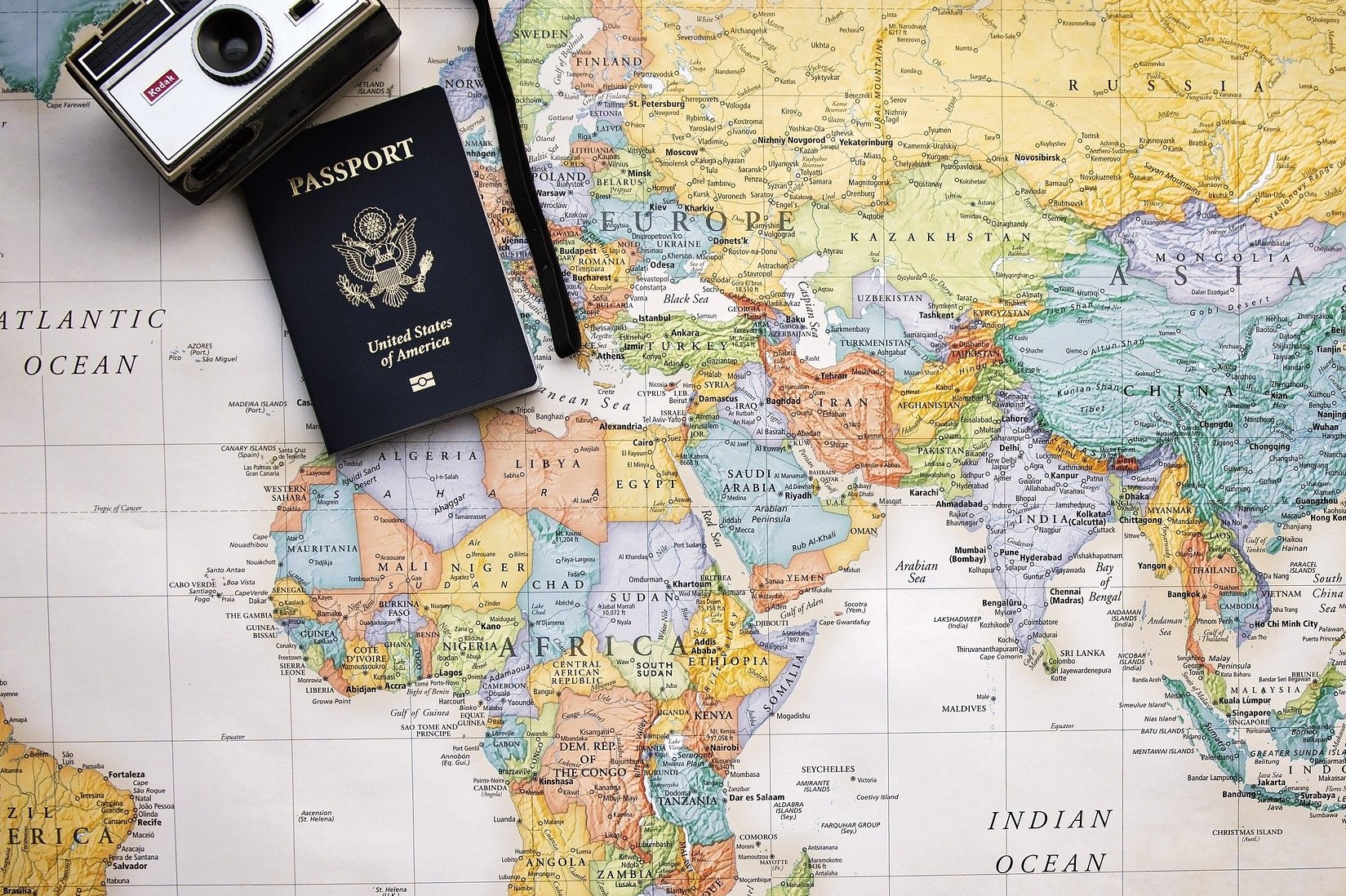
11 Aug TOURISM TRENDS 2022
The situation for tourism remains rather unusual as a result of the ongoing COVID-19 pandemic.
The crisis has marked a significant change for everyone, and above all for tourism, one of sectors hit hardest by the virus. 2020 was the year in which international tourism came to a near-complete standstill, and the only alternatives were domestic and local tourism.
2021 has seen some improvements, but only in a very subtle way as restrictions are still in place and many countries keep their borders fully or partially closed.
It is difficult to make an estimate for 2022 as it is not known how the pandemic will evolve. However, it is possible to talk about the new tourism trends that are likely to emerge over the coming year: – International travel with restrictions still maintained by both destinations and airlines in order to offer 100% security to the consumer.
– Reinforcement of COVID-19 testing; two years after the pandemic, COVID testing will still be in place as a preventive measure. – Conscious travel will be advocated. Travel to more distant destinations, but with prolonged durations of stay, as consumers look to enjoy as much of each place they visit as possible. – Green travel. Climate change is a problem that is present and growing. Consumers now are much more responsible and aware of the reality they live in on daily basis.
– A new trend is the “ed-ventures”. It is about combining education and holidays for the youngest members of the family. While adults may need to telework or attend meetings, their children can be doing workshops and learning in a playful way.
- Client log in
Metallurgicheskii Zavod Electrostal AO (Russia)
In 1993 "Elektrostal" was transformed into an open joint stock company. The factory occupies a leading position among the manufacturers of high quality steel. The plant is a producer of high-temperature nickel alloys in a wide variety. It has a unique set of metallurgical equipment: open induction and arc furnaces, furnace steel processing unit, vacuum induction, vacuum- arc furnaces and others. The factory has implemented and certified quality management system ISO 9000, received international certificates for all products. Elektrostal today is a major supplier in Russia starting blanks for the production of blades, discs and rolls for gas turbine engines. Among them are companies in the aerospace industry, defense plants, and energy complex, automotive, mechanical engineering and instrument-making plants.
Headquarters Ulitsa Zheleznodorozhnaya, 1 Elektrostal; Moscow Oblast; Postal Code: 144002
Contact Details: Purchase the Metallurgicheskii Zavod Electrostal AO report to view the information.
Website: http://elsteel.ru
EMIS company profiles are part of a larger information service which combines company, industry and country data and analysis for over 145 emerging markets.
To view more information, Request a demonstration of the EMIS service

Turn Your Curiosity Into Discovery
Latest facts.
11 Facts About National Numeracy Day May 22nd
9 Facts About Workers Memorial Day April 28th
40 facts about elektrostal.
Written by Lanette Mayes
Modified & Updated: 02 Mar 2024
Reviewed by Jessica Corbett

Elektrostal is a vibrant city located in the Moscow Oblast region of Russia. With a rich history, stunning architecture, and a thriving community, Elektrostal is a city that has much to offer. Whether you are a history buff, nature enthusiast, or simply curious about different cultures, Elektrostal is sure to captivate you.
This article will provide you with 40 fascinating facts about Elektrostal, giving you a better understanding of why this city is worth exploring. From its origins as an industrial hub to its modern-day charm, we will delve into the various aspects that make Elektrostal a unique and must-visit destination.
So, join us as we uncover the hidden treasures of Elektrostal and discover what makes this city a true gem in the heart of Russia.
Key Takeaways:
- Elektrostal, known as the “Motor City of Russia,” is a vibrant and growing city with a rich industrial history, offering diverse cultural experiences and a strong commitment to environmental sustainability.
- With its convenient location near Moscow, Elektrostal provides a picturesque landscape, vibrant nightlife, and a range of recreational activities, making it an ideal destination for residents and visitors alike.
Known as the “Motor City of Russia.”
Elektrostal, a city located in the Moscow Oblast region of Russia, earned the nickname “Motor City” due to its significant involvement in the automotive industry.
Home to the Elektrostal Metallurgical Plant.
Elektrostal is renowned for its metallurgical plant, which has been producing high-quality steel and alloys since its establishment in 1916.
Boasts a rich industrial heritage.
Elektrostal has a long history of industrial development, contributing to the growth and progress of the region.
Founded in 1916.
The city of Elektrostal was founded in 1916 as a result of the construction of the Elektrostal Metallurgical Plant.
Located approximately 50 kilometers east of Moscow.
Elektrostal is situated in close proximity to the Russian capital, making it easily accessible for both residents and visitors.
Known for its vibrant cultural scene.
Elektrostal is home to several cultural institutions, including museums, theaters, and art galleries that showcase the city’s rich artistic heritage.
A popular destination for nature lovers.
Surrounded by picturesque landscapes and forests, Elektrostal offers ample opportunities for outdoor activities such as hiking, camping, and birdwatching.
Hosts the annual Elektrostal City Day celebrations.
Every year, Elektrostal organizes festive events and activities to celebrate its founding, bringing together residents and visitors in a spirit of unity and joy.
Has a population of approximately 160,000 people.
Elektrostal is home to a diverse and vibrant community of around 160,000 residents, contributing to its dynamic atmosphere.
Boasts excellent education facilities.
The city is known for its well-established educational institutions, providing quality education to students of all ages.
A center for scientific research and innovation.
Elektrostal serves as an important hub for scientific research, particularly in the fields of metallurgy, materials science, and engineering.
Surrounded by picturesque lakes.
The city is blessed with numerous beautiful lakes, offering scenic views and recreational opportunities for locals and visitors alike.
Well-connected transportation system.
Elektrostal benefits from an efficient transportation network, including highways, railways, and public transportation options, ensuring convenient travel within and beyond the city.
Famous for its traditional Russian cuisine.
Food enthusiasts can indulge in authentic Russian dishes at numerous restaurants and cafes scattered throughout Elektrostal.
Home to notable architectural landmarks.
Elektrostal boasts impressive architecture, including the Church of the Transfiguration of the Lord and the Elektrostal Palace of Culture.
Offers a wide range of recreational facilities.
Residents and visitors can enjoy various recreational activities, such as sports complexes, swimming pools, and fitness centers, enhancing the overall quality of life.
Provides a high standard of healthcare.
Elektrostal is equipped with modern medical facilities, ensuring residents have access to quality healthcare services.
Home to the Elektrostal History Museum.
The Elektrostal History Museum showcases the city’s fascinating past through exhibitions and displays.
A hub for sports enthusiasts.
Elektrostal is passionate about sports, with numerous stadiums, arenas, and sports clubs offering opportunities for athletes and spectators.
Celebrates diverse cultural festivals.
Throughout the year, Elektrostal hosts a variety of cultural festivals, celebrating different ethnicities, traditions, and art forms.
Electric power played a significant role in its early development.
Elektrostal owes its name and initial growth to the establishment of electric power stations and the utilization of electricity in the industrial sector.
Boasts a thriving economy.
The city’s strong industrial base, coupled with its strategic location near Moscow, has contributed to Elektrostal’s prosperous economic status.
Houses the Elektrostal Drama Theater.
The Elektrostal Drama Theater is a cultural centerpiece, attracting theater enthusiasts from far and wide.
Popular destination for winter sports.
Elektrostal’s proximity to ski resorts and winter sport facilities makes it a favorite destination for skiing, snowboarding, and other winter activities.
Promotes environmental sustainability.
Elektrostal prioritizes environmental protection and sustainability, implementing initiatives to reduce pollution and preserve natural resources.
Home to renowned educational institutions.
Elektrostal is known for its prestigious schools and universities, offering a wide range of academic programs to students.
Committed to cultural preservation.
The city values its cultural heritage and takes active steps to preserve and promote traditional customs, crafts, and arts.
Hosts an annual International Film Festival.
The Elektrostal International Film Festival attracts filmmakers and cinema enthusiasts from around the world, showcasing a diverse range of films.
Encourages entrepreneurship and innovation.
Elektrostal supports aspiring entrepreneurs and fosters a culture of innovation, providing opportunities for startups and business development.
Offers a range of housing options.
Elektrostal provides diverse housing options, including apartments, houses, and residential complexes, catering to different lifestyles and budgets.
Home to notable sports teams.
Elektrostal is proud of its sports legacy, with several successful sports teams competing at regional and national levels.
Boasts a vibrant nightlife scene.
Residents and visitors can enjoy a lively nightlife in Elektrostal, with numerous bars, clubs, and entertainment venues.
Promotes cultural exchange and international relations.
Elektrostal actively engages in international partnerships, cultural exchanges, and diplomatic collaborations to foster global connections.
Surrounded by beautiful nature reserves.
Nearby nature reserves, such as the Barybino Forest and Luchinskoye Lake, offer opportunities for nature enthusiasts to explore and appreciate the region’s biodiversity.
Commemorates historical events.
The city pays tribute to significant historical events through memorials, monuments, and exhibitions, ensuring the preservation of collective memory.
Promotes sports and youth development.
Elektrostal invests in sports infrastructure and programs to encourage youth participation, health, and physical fitness.
Hosts annual cultural and artistic festivals.
Throughout the year, Elektrostal celebrates its cultural diversity through festivals dedicated to music, dance, art, and theater.
Provides a picturesque landscape for photography enthusiasts.
The city’s scenic beauty, architectural landmarks, and natural surroundings make it a paradise for photographers.
Connects to Moscow via a direct train line.
The convenient train connection between Elektrostal and Moscow makes commuting between the two cities effortless.
A city with a bright future.
Elektrostal continues to grow and develop, aiming to become a model city in terms of infrastructure, sustainability, and quality of life for its residents.
In conclusion, Elektrostal is a fascinating city with a rich history and a vibrant present. From its origins as a center of steel production to its modern-day status as a hub for education and industry, Elektrostal has plenty to offer both residents and visitors. With its beautiful parks, cultural attractions, and proximity to Moscow, there is no shortage of things to see and do in this dynamic city. Whether you’re interested in exploring its historical landmarks, enjoying outdoor activities, or immersing yourself in the local culture, Elektrostal has something for everyone. So, next time you find yourself in the Moscow region, don’t miss the opportunity to discover the hidden gems of Elektrostal.
Q: What is the population of Elektrostal?
A: As of the latest data, the population of Elektrostal is approximately XXXX.
Q: How far is Elektrostal from Moscow?
A: Elektrostal is located approximately XX kilometers away from Moscow.
Q: Are there any famous landmarks in Elektrostal?
A: Yes, Elektrostal is home to several notable landmarks, including XXXX and XXXX.
Q: What industries are prominent in Elektrostal?
A: Elektrostal is known for its steel production industry and is also a center for engineering and manufacturing.
Q: Are there any universities or educational institutions in Elektrostal?
A: Yes, Elektrostal is home to XXXX University and several other educational institutions.
Q: What are some popular outdoor activities in Elektrostal?
A: Elektrostal offers several outdoor activities, such as hiking, cycling, and picnicking in its beautiful parks.
Q: Is Elektrostal well-connected in terms of transportation?
A: Yes, Elektrostal has good transportation links, including trains and buses, making it easily accessible from nearby cities.
Q: Are there any annual events or festivals in Elektrostal?
A: Yes, Elektrostal hosts various events and festivals throughout the year, including XXXX and XXXX.
Was this page helpful?
Our commitment to delivering trustworthy and engaging content is at the heart of what we do. Each fact on our site is contributed by real users like you, bringing a wealth of diverse insights and information. To ensure the highest standards of accuracy and reliability, our dedicated editors meticulously review each submission. This process guarantees that the facts we share are not only fascinating but also credible. Trust in our commitment to quality and authenticity as you explore and learn with us.
Share this Fact:

- Victor Mukhin

Victor M. Mukhin was born in 1946 in the town of Orsk, Russia. In 1970 he graduated the Technological Institute in Leningrad. Victor M. Mukhin was directed to work to the scientific-industrial organization "Neorganika" (Elektrostal, Moscow region) where he is working during 47 years, at present as the head of the laboratory of carbon sorbents. Victor M. Mukhin defended a Ph. D. thesis and a doctoral thesis at the Mendeleev University of Chemical Technology of Russia (in 1979 and 1997 accordingly). Professor of Mendeleev University of Chemical Technology of Russia. Scientific interests: production, investigation and application of active carbons, technological and ecological carbon-adsorptive processes, environmental protection, production of ecologically clean food.
Title : Active carbons as nanoporous materials for solving of environmental problems
Quick links.
- Conference Brochure
- Tentative Program

2022 has been the year to rethink tourism. Countries around the world turned UNWTO's vision for a greener, smarter and more inclusive sector into real action. 2020 showed the relevance of tourism for sustainable development. 2021 laid the foundations for the transformation of the sector. In 2022, we made it happen. 2022 began on a positive note.
According to the latest UNWTO World Tourism Barometer, international tourism saw a strong rebound in the first five months of 2022, with almost 250 million international arrivals recorded. This compares to 77 million arrivals from January to May 2021 and means that the sector has recovered almost half (46%) of pre-pandemic 2019 levels. UN ...
International Tourism Highlights, 2023 Edition - The Impact of COVID-19 on Tourism (2020-2022) ISBN (printed version): 978-92-844-2497-9 ISBN (electronic version): 978-92-844-2498-6 DOI: 10.18111/9789284424986 Published by the World Tourism Organization (UNWTO), Madrid, Spain First published: September 2023 Revised and updated: October 2023
Find out the latest updates from the UNWTO on tourism trends, challenges and opportunities in 2022 and beyond. Learn about the UNWTO's activities, projects and partnerships in various regions and topics, such as sustainable tourism, gastronomy, investment and education.
International Tourism and COVID-19. Export revenues from international tourism dropped 62% in 2020 and 59% in 2021, versus 2019 (real terms) and then rebounded in 2022, remaining 34% below pre-pandemic levels. The total loss in export revenues from tourism amounts to USD 2.6 trillion for that three-year period. Go to Dashboard.
According to the latest UNWTO World Tourism Barometer, international tourist arrivals almost tripled in January to July 2022 (+172%) compared to the same period of 2021. This means t he sector recovered almost 60% of pre-pandemic levels. The steady recovery reflects strong pent-up demand for international travel as well as the easing or lifting ...
The time is now to seize this opportunity to rethink how we do tourism. The official World Tourism Day celebration will be held in Bali, Indonesia, on 27 September, highlighting the shift towards tourism being recognized as a crucial pillar of development. Wonderful Indonesia - Witness the 42nd World Tourism Day 2022 in Bali, Indonesia!
In terms of tourist numbers, the year 2022 is expected to close with over 900 million international arrivals, despite growing challenges pointing to a softening of the recovery pace. International tourist arrivals: 2020, 2021 and Scenarios for 2022 (monthly change over 2019,%) Source UNWTO World Tourism Barometer: November 2022 Press Release.
January - March. As global tourism faced up to a second year of unprecedented crisis, UNWTO began 2021 by counting the cost so far.At the same time, however, the emergence of vaccines brought hope.The Global Tourism Crisis Committee met to explore what this meant for safe travel and the restart of tourism, while the announcement of the winners of the UNWTO Global Start-up Competition ...
Below are excerpts from the latest World Tourism Barometer May 2022 issue: According to the latest UNWTO World Tourism Barometer, international tourism saw a 182% year-on-year increase in January-March 2022, with destinations worldwide welcoming an estimated 117 million international arrivals compared to 41 million in Q1 2021.
The UNWTO Elibrary is an online service from the World Tourism Organization (UNWTO) with a broad coverage of tourism and related subject areas. ... International Tourism Highlights, 2023 Edition - The Impact of COVID-19 on Tourism (2020-2022) Revised and updated, October 2023. Released: December 2023.
The 7th UNWTO World Forum on Gastronomy Tourism will be held from Monday, December 12 to Thursday, December 15, 2022 (4 days).
The economic contribution of tourism (tourism direct gross domestic product) is estimated at US$1.9 trillion in 2021, above the US$1.6 trillion in 2020, but still well below the pre-pandemic value of US$ 3.5 trillion. The latest UNWTO Panel of Experts survey indicates that 61% of tourism professionals expect better performance in 2022 than in 2021.
Below are relevant points to the July 2022 World Tourism Barometer: Nearly 250 million international trips were recorded worldwide in the first five months of the year, more than three times the number of arrivals recorded in the same period of 2021 (77 million). Robust performance is also reflected in hotel occupancy rates.
2022-10-28. Below are excerpts from the September 2022 release of the UNWTO Tourism Barometer: The steady recovery reflects strong pent-up demand for international travel, especially in the months of June and July which are part of the Northern Hemisphere summer season. The easing or lifting of travel restrictions in an increasing number of ...
International tourism continues to outpace the global economy. 2. Driven by a relatively strong global economy, a growing middle class in emerging economies, technological advances, new business models, affordable travel costs and visa facilitation, international tourist arrivals grew 5% in 2018 to reach the 1.4 billion mark.
UNWTO Tourism Academy | TOURISM TRENDS 2022. The situation for tourism remains rather unusual as a result of the ongoing COVID-19 pandemic. The crisis has marked a significant change for everyone, and above all for tourism, one of sectors hit hardest by the virus. 2020 was the year in which international tourism came to a near-complete ...
International Tourism Highlights, 2023 Edition - The Impact of COVID-19 on Tourism (2020-2022) Revised and updated, October 2023 Published: December 2023 Pages: 32
International Tourism Highlights, 2020 Edition. Published: January 2021 Pages: 23. eISBN: 978-92-844-2245-6 | ISBN: 978-92-844-2244-9. Abstract: 2019 was another year of strong growth, though international arrivals grew below the exceptional rates seen in 2017 (+7%) and 2018 (+6%). Demand was somewhat weaker for travel to advanced economy ...
Main Activities: Iron and Steel Mills and Ferroalloy Manufacturing | Nonferrous Metal (except Copper and Aluminum) Rolling, Drawing, and Extruding. Full name: Metallurgicheskii Zavod Electrostal AO Profile Updated: February 22, 2024. Buy our report for this company USD 29.95 Most recent financial data: 2022 Available in: English & Russian ...
40 Facts About Elektrostal. Elektrostal is a vibrant city located in the Moscow Oblast region of Russia. With a rich history, stunning architecture, and a thriving community, Elektrostal is a city that has much to offer. Whether you are a history buff, nature enthusiast, or simply curious about different cultures, Elektrostal is sure to ...
Catalysis Conference is a networking event covering all topics in catalysis, chemistry, chemical engineering and technology during October 19-21, 2017 in Las Vegas, USA. Well noted as well attended meeting among all other annual catalysis conferences 2018, chemical engineering conferences 2018 and chemistry webinars.
In the city of Elektrostal in Russia, a drone attack occurred. It's reported that no one was injured as a result of the incident. Additional details, including the particulars of the attack, potential motives or responsible parties, have not been provided. However, the fact that a drone was used as a means of attack underscores
- Bahasa Indonesia
- Slovenščina
- Science & Tech
- Russian Kitchen
Moscow metro to be more tourist-friendly
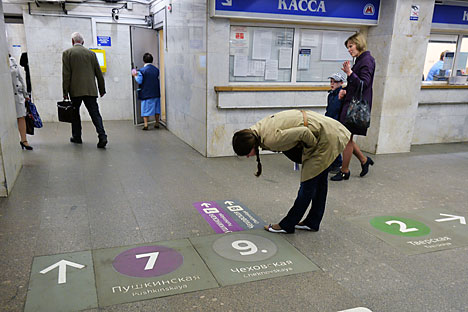
A new floor sign system at the Moscow metro's Pushkinskaya station. Source: Vladimir Pesnya / RIA Novosti
For many years now, Moscow has lagged behind St. Petersburg when it comes to making life easy for tourists, especially where getting around the city is concerned. Whereas the northern capital installed English-language maps, signs and information points throughout its subway system in the late 2000s, the Russian capital’s metro remained a serious challenge for foreign visitors to navigate.
Recent visitors to Moscow may have noticed some signs that change is afoot, however. In many stations of the Moscow subway, signs have appeared on the floor – with large lettering in Russian and English – indicating the direction to follow in order to change lines. Previously, foreign visitors using the Moscow metro had to rely solely upon deciphering the Russian-language signs hanging from the ceilings.
Student volunteers help tourists find their way in Moscow
However, this new solution has a significant drawback. “The floor navigation is visible only to a small stream of people – fewer than three people per meter. During peak hours, this navigation will simply not be noticed,” said Konstantin Trofimenko, Director of the Center for Urban Transportation Studies.
One of the biggest problems for tourists in the Russian capital remains the absence of English translations of the names of subway stations in the station vestibules and on platforms. The Department of Transportation in Moscow has not commented yet as to when this problem will be solved. However, Latin transliterations of station names can already be found in the subway cars themselves.
Finding the right exit
At four of the central stations – Okhotny Ryad, Teatralnaya, Ploshchad Revolyutsii, Lubyanka and Kuznetsky Most – the city authorities have now installed colorful stands at the exits with schematic diagrams of the station’s concourse and surrounding area, which provide information about the main attractions and infrastructural facilities.
The schematic diagrams are the work of British specialists from the City ID and Billings Jackson Design firms, who have already implemented successful projects in New York and London.
According to Alexei Novichkov, expert at the Design Laboratory at the Higher School of Economics, the design of these information booths raises no objections: The color solutions, font, layout and icons are consistent with international standards.
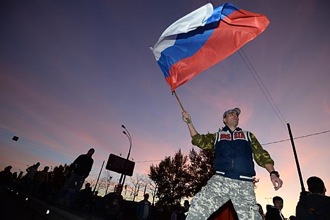
However, the stands do have some shortcomings. “Many questions are raised about the fact that the developers of these maps did not apply orientation to the north, and have provided layouts of the surrounding areas with respect to the exits,” says Novichkov. “A system like that is used for road navigators, but most of the ‘paper’ guides and maps are oriented strictly to north. The subway map is also oriented to north, so people may become confused.”
Muscovites and foreign visitors are generally positive about these navigation elements, with most of them citing the numbered exits from the subway as the most useful feature.
The fact is that many Moscow subway stations have several exits. One of the busiest central stations of the Moscow subway in particular, Kitay-Gorod, has more than a dozen exits. Previously, these exits were differentiated from each other only with signs in Russian referring to the names of streets and places of interest to which they led – making it easy for tourists and those with poor navigation skills to get confused.
Now, when making an appointment to meet a friend, instead of struggling to find the right spot when they tell you: “I'll meet you at the exit to Solyanka Street,” you can just propose to meet under a specific exit number.
“I’ve lived in Moscow for seven years,” says Angelika, a designer from Voronezh, “but I still don’t always know where to go to find the place I need, so the new schematic diagrams will be very useful. Previously, some subway stations had maps, but not with so much detail.”
Teething problems
Foreigners, meanwhile, focus their attention on other elements. “It is good that the new information boards have QR-codes, which can be ‘read’ by smartphones,” says Florentina, a writer from Vienna. But there are also shortcomings. “The English font of the information on posters and in the captions to theaters and museums is too small – you have to come very close to see it well,” she says.
Pleasant encounters on the streets of Moscow
Florentina was also dissatisfied with the fact that such posters are not provided at all subway stations: “When I was trying to find Tsaritsyno Park (a museum and reserve in the south of Moscow) at a subway station with the same name, it turned out to be quite difficult,” she says.
“There are no maps with landmarks for other areas, such as those already in the city center. There were no clear pointers in the English language, and the passers-by I met did not speak in English, so they could not help me,” she adds.
Officials say that the navigation system is gradually being redeveloped and improved. According to Darya Chuvasheva, a press representative for the Department of Transport of Moscow, the introduction of a unified navigation system will take place in stages.
“By the end of 2014, the system will first appear on the first subway stations on the Circle Line. By the end of 2015, we plan to install the system at all major stopping points, subway stations and transport interchange hubs,” says Chuvasheva.
All rights reserved by Rossiyskaya Gazeta.
to our newsletter!
Get the week's best stories straight to your inbox
This website uses cookies. Click here to find out more.

Lurgan entrepreneur launches bid for new Lough Neagh leisure and tourist complex
A Lurgan entrepreneur has launched a bid to develop a new leisure complex on Lough Neagh.
Patrick McAliskey and his wife Anita have notified Armagh City, Banbridge and Craigavon Borough Council of their plans for Kinnego Marina.
Set on the south-east shore of Lough Neagh and on the edge of the Oxford Island National Nature Reserve, the marina currently features a caravan park and glamping pods.
The McAliskey’s company One-AP Ltd has submitted a proposal of application notice (PAN) to planning authorities, which involves a significant investment in the site.
Their proposal would see the existing boat showroom and business units replaced with a new leisure complex and health and wellbeing facility.
The plans also involve a new café, tourist accommodation and business units.
The application submitted to planners indicates a scheme of around 75,000 sq ft on a 3.5 acre site.
Magherafelt based Vision Design is understood to be architecture firm involved.
Mr McAliskey (56) is among the north’s top tech industry figures.
He set up Real Time Systems in 1994, which merged with 4sol in 2007 to form Novosco.
The Belfast-based tech firm was eventually was sold to German group Cancom in a £70 million deal during 2019.
Cancom was itself acquired by Telefónica two years later.
While he remains plugged into the world of IT, the Lurgan entrepreneur has launched a number of enterprises in his hometown.
His increasingly diverse interests include a brewery and coffee business based in north Armagh.
Mr McAliskey has also invested in Belfast software company Obbi Golf .
The latest direction is a tourist and hospitality investment in his hometown.
The PAN submitted by his company is required for all major planning applications in the north.
It typically involves a period of consultation with the public, which generally leads to the submission of a full planning application.
An event to outline One-AP Ltd’s plans is due to take place at North Lurgan Community Centre on June 5 from 3.30pm to 7pm.


The new Moscow metro station made in futuristic style (Savelovskaya)

Newest in most viral

- © 2024 Imgur, Inc

40 Facts About Elektrostal
Written by Lanette Mayes
Modified & Updated: 02 Mar 2024
Reviewed by Jessica Corbett

Elektrostal is a vibrant city located in the Moscow Oblast region of Russia. With a rich history, stunning architecture, and a thriving community, Elektrostal is a city that has much to offer. Whether you are a history buff, nature enthusiast, or simply curious about different cultures, Elektrostal is sure to captivate you.
This article will provide you with 40 fascinating facts about Elektrostal, giving you a better understanding of why this city is worth exploring. From its origins as an industrial hub to its modern-day charm, we will delve into the various aspects that make Elektrostal a unique and must-visit destination.
So, join us as we uncover the hidden treasures of Elektrostal and discover what makes this city a true gem in the heart of Russia.
Key Takeaways:
- Elektrostal, known as the “Motor City of Russia,” is a vibrant and growing city with a rich industrial history, offering diverse cultural experiences and a strong commitment to environmental sustainability.
- With its convenient location near Moscow, Elektrostal provides a picturesque landscape, vibrant nightlife, and a range of recreational activities, making it an ideal destination for residents and visitors alike.
Known as the “Motor City of Russia.”
Elektrostal, a city located in the Moscow Oblast region of Russia, earned the nickname “Motor City” due to its significant involvement in the automotive industry.
Home to the Elektrostal Metallurgical Plant.
Elektrostal is renowned for its metallurgical plant, which has been producing high-quality steel and alloys since its establishment in 1916.
Boasts a rich industrial heritage.
Elektrostal has a long history of industrial development, contributing to the growth and progress of the region.
Founded in 1916.
The city of Elektrostal was founded in 1916 as a result of the construction of the Elektrostal Metallurgical Plant.
Located approximately 50 kilometers east of Moscow.
Elektrostal is situated in close proximity to the Russian capital, making it easily accessible for both residents and visitors.
Known for its vibrant cultural scene.
Elektrostal is home to several cultural institutions, including museums, theaters, and art galleries that showcase the city’s rich artistic heritage.
A popular destination for nature lovers.
Surrounded by picturesque landscapes and forests, Elektrostal offers ample opportunities for outdoor activities such as hiking, camping, and birdwatching.
Hosts the annual Elektrostal City Day celebrations.
Every year, Elektrostal organizes festive events and activities to celebrate its founding, bringing together residents and visitors in a spirit of unity and joy.
Has a population of approximately 160,000 people.
Elektrostal is home to a diverse and vibrant community of around 160,000 residents, contributing to its dynamic atmosphere.
Boasts excellent education facilities.
The city is known for its well-established educational institutions, providing quality education to students of all ages.
A center for scientific research and innovation.
Elektrostal serves as an important hub for scientific research, particularly in the fields of metallurgy, materials science, and engineering.
Surrounded by picturesque lakes.
The city is blessed with numerous beautiful lakes, offering scenic views and recreational opportunities for locals and visitors alike.
Well-connected transportation system.
Elektrostal benefits from an efficient transportation network, including highways, railways, and public transportation options, ensuring convenient travel within and beyond the city.
Famous for its traditional Russian cuisine.
Food enthusiasts can indulge in authentic Russian dishes at numerous restaurants and cafes scattered throughout Elektrostal.
Home to notable architectural landmarks.
Elektrostal boasts impressive architecture, including the Church of the Transfiguration of the Lord and the Elektrostal Palace of Culture.
Offers a wide range of recreational facilities.
Residents and visitors can enjoy various recreational activities, such as sports complexes, swimming pools, and fitness centers, enhancing the overall quality of life.
Provides a high standard of healthcare.
Elektrostal is equipped with modern medical facilities, ensuring residents have access to quality healthcare services.
Home to the Elektrostal History Museum.
The Elektrostal History Museum showcases the city’s fascinating past through exhibitions and displays.
A hub for sports enthusiasts.
Elektrostal is passionate about sports, with numerous stadiums, arenas, and sports clubs offering opportunities for athletes and spectators.
Celebrates diverse cultural festivals.
Throughout the year, Elektrostal hosts a variety of cultural festivals, celebrating different ethnicities, traditions, and art forms.
Electric power played a significant role in its early development.
Elektrostal owes its name and initial growth to the establishment of electric power stations and the utilization of electricity in the industrial sector.
Boasts a thriving economy.
The city’s strong industrial base, coupled with its strategic location near Moscow, has contributed to Elektrostal’s prosperous economic status.
Houses the Elektrostal Drama Theater.
The Elektrostal Drama Theater is a cultural centerpiece, attracting theater enthusiasts from far and wide.
Popular destination for winter sports.
Elektrostal’s proximity to ski resorts and winter sport facilities makes it a favorite destination for skiing, snowboarding, and other winter activities.
Promotes environmental sustainability.
Elektrostal prioritizes environmental protection and sustainability, implementing initiatives to reduce pollution and preserve natural resources.
Home to renowned educational institutions.
Elektrostal is known for its prestigious schools and universities, offering a wide range of academic programs to students.
Committed to cultural preservation.
The city values its cultural heritage and takes active steps to preserve and promote traditional customs, crafts, and arts.
Hosts an annual International Film Festival.
The Elektrostal International Film Festival attracts filmmakers and cinema enthusiasts from around the world, showcasing a diverse range of films.
Encourages entrepreneurship and innovation.
Elektrostal supports aspiring entrepreneurs and fosters a culture of innovation, providing opportunities for startups and business development.
Offers a range of housing options.
Elektrostal provides diverse housing options, including apartments, houses, and residential complexes, catering to different lifestyles and budgets.
Home to notable sports teams.
Elektrostal is proud of its sports legacy, with several successful sports teams competing at regional and national levels.
Boasts a vibrant nightlife scene.
Residents and visitors can enjoy a lively nightlife in Elektrostal, with numerous bars, clubs, and entertainment venues.
Promotes cultural exchange and international relations.
Elektrostal actively engages in international partnerships, cultural exchanges, and diplomatic collaborations to foster global connections.
Surrounded by beautiful nature reserves.
Nearby nature reserves, such as the Barybino Forest and Luchinskoye Lake, offer opportunities for nature enthusiasts to explore and appreciate the region’s biodiversity.
Commemorates historical events.
The city pays tribute to significant historical events through memorials, monuments, and exhibitions, ensuring the preservation of collective memory.
Promotes sports and youth development.
Elektrostal invests in sports infrastructure and programs to encourage youth participation, health, and physical fitness.
Hosts annual cultural and artistic festivals.
Throughout the year, Elektrostal celebrates its cultural diversity through festivals dedicated to music, dance, art, and theater.
Provides a picturesque landscape for photography enthusiasts.
The city’s scenic beauty, architectural landmarks, and natural surroundings make it a paradise for photographers.
Connects to Moscow via a direct train line.
The convenient train connection between Elektrostal and Moscow makes commuting between the two cities effortless.
A city with a bright future.
Elektrostal continues to grow and develop, aiming to become a model city in terms of infrastructure, sustainability, and quality of life for its residents.
In conclusion, Elektrostal is a fascinating city with a rich history and a vibrant present. From its origins as a center of steel production to its modern-day status as a hub for education and industry, Elektrostal has plenty to offer both residents and visitors. With its beautiful parks, cultural attractions, and proximity to Moscow, there is no shortage of things to see and do in this dynamic city. Whether you’re interested in exploring its historical landmarks, enjoying outdoor activities, or immersing yourself in the local culture, Elektrostal has something for everyone. So, next time you find yourself in the Moscow region, don’t miss the opportunity to discover the hidden gems of Elektrostal.
Q: What is the population of Elektrostal?
A: As of the latest data, the population of Elektrostal is approximately XXXX.
Q: How far is Elektrostal from Moscow?
A: Elektrostal is located approximately XX kilometers away from Moscow.
Q: Are there any famous landmarks in Elektrostal?
A: Yes, Elektrostal is home to several notable landmarks, including XXXX and XXXX.
Q: What industries are prominent in Elektrostal?
A: Elektrostal is known for its steel production industry and is also a center for engineering and manufacturing.
Q: Are there any universities or educational institutions in Elektrostal?
A: Yes, Elektrostal is home to XXXX University and several other educational institutions.
Q: What are some popular outdoor activities in Elektrostal?
A: Elektrostal offers several outdoor activities, such as hiking, cycling, and picnicking in its beautiful parks.
Q: Is Elektrostal well-connected in terms of transportation?
A: Yes, Elektrostal has good transportation links, including trains and buses, making it easily accessible from nearby cities.
Q: Are there any annual events or festivals in Elektrostal?
A: Yes, Elektrostal hosts various events and festivals throughout the year, including XXXX and XXXX.
Was this page helpful?
Our commitment to delivering trustworthy and engaging content is at the heart of what we do. Each fact on our site is contributed by real users like you, bringing a wealth of diverse insights and information. To ensure the highest standards of accuracy and reliability, our dedicated editors meticulously review each submission. This process guarantees that the facts we share are not only fascinating but also credible. Trust in our commitment to quality and authenticity as you explore and learn with us.
Share this Fact:

IMAGES
COMMENTS
Cultural tourism - is aimed at discovering art cities. Beach tourism - towards seaside and seaside resorts. Religious tourism - towards places of worship. Like all industries, the travel industry is influenced by fads and trends that come along and change the way we think and act.
Food tourism. 3. Experiential tourism. 4. Wellness tourism. Traveling is one of the most effective ways of exploring a place, culture or a destination. There are various types of tourism that you must have heard of: Leisure, business, sports, adventure and more. This is an article that represents 4 new types of tourism. 1.
Urban tourism is a form of tourism that is hugely popular among different demographics, from backpackers to luxury travelers and from recent graduates to retirees. ... Amsterdam, Madrid, Rome, London, and New York, among others, and attract a large number of international tourists each year. In the top 100 list compiled by Euromonitor ...
As travel resumes and builds momentum, it's becoming clear that tourism is resilient—there is an enduring desire to travel. Against all odds, international tourism rebounded in 2022: visitor numbers to Europe and the Middle East climbed to around 80 percent of 2019 levels, and the Americas recovered about 65 percent of prepandemic visitors 1 "Tourism set to return to pre-pandemic levels ...
As the travel industry evolves, embracing these emerging forms of tourism can open up new opportunities for businesses and provide unique experiences for travelers. Conclusion. In conclusion, the tourism industry is a dynamic and ever-evolving sector that encompasses a wide range of experiences and opportunities. By understanding the diverse ...
Our global innovation ecosystem is now made up of more than 12,000 start-ups from 160 countries, with US$83 million mobilized and 300 corporate partners currently working on new tourism technologies. And UNWTO's education programmes are reaching unprecedented numbers of people, welcoming more than 20,000 students from 100 countries in just 18 ...
Abstract. The main forms of modern tourism are closely relevant to economic growth of a destination, connection to local and national policies, impact on the environment and interaction with local ...
The global guidelines of the UNWTO to restart tourism published on May 28, 2020, hinted at some of the measures that could contribute to making tourism activities more sustainable. Develop segmented and sustainable products focused on nature, rural areas and culture. Some examples could be eco-tourism, small group or individual sports, history ...
Tourism has reached new dimensions with the emerging industry of space tourism, as well as the cruise ship industry. Another potential new tourism industry is virtual tourism. ... In 1994, the United Nations identified three forms of tourism in its Recommendations on Tourism Statistics: Domestic tourism, ...
Journal of Sustainable Tourism 29 (2-3): 502-519. Google Scholar Isaac, Rami K. 2010. Alternative tourism: New forms of tourism in Bethlehem for the Palestinian tourism industry. Current Issues in Tourism 13 (1): 21-36. Article Google Scholar Lee, Hiu Yan. 2020.
Definition. Transformative tourism is a new form of tourism business focused on how to use cultural and natural resources of visited places for individual or collective transformation. It may be defined as an innovative form of transformative learning which not only enables a person to get new information but also allows testing the new ...
New tourism destinations and product supply are increasingly popular strategies among industry players to create competitiveness. The tourism industry has become more vibrant since globalization merged with technological changes, thus influencing human travel movements, lifestyles, and current trends. The purpose of the study was to systematically review and analyse the elements of new tourism ...
Tourism has two types and many forms based on the purpose of visit and alternative forms of tourism. Tourism can be categorized as international and domestic tourism ... New and innovative forms of partnerships are also evolving to ensure the sustainable development and management of tourism-related resources. The supply and demand side can be ...
forms of work, rest and new forms of tourism. The latter is also subject to variable fashions . that affect in the short t erm the appearance of niche forms of rest and recreation consistent .
Welcome to our 2023 Annual Report. The story of New York City tourism is one of resilience and tenacity. This report is a record of the creative energy, relentless determination and innovative collaborations that are, once again, returning the tourism and convention industry to reliable growth in visitation, spending, jobs and economic impact.
Some of the world's top destinations for wine tastings are France, Portugal, Greece, Italy, Argentina, Australia, South Africa, Spain, New Zealand, Moldova and Chile. 20. Escorted Tour. An escorted tour is a type of tourism where travelers are guided in groups.
Nuclear tourism. Nuclear tourism is a new form of tourism that involves visiting sites that have been subjected to nuclear activity. This includes museums, bunkers and power stations. Also referred to as atomic tourism, popular destinations include Chernobyl, Nevada test site and Hiroshima.
This article gives you 7 key elements to consider when developing new tourism experiences. Off the beaten track. Slow Travel. Less frequent but longer travel. Local travel. Good travel. Self-guided travel. Personal and flexible. 1.
You may also complete the electronic form on arrival at the airport in Saint Lucia using the free wi-fi service. Complete 1 form per family to receive a QR code by email to be presented to the authorities on arrival. Complete and submit your form up to 3 days before travel to Saint Lucia. Once you have landed, please present your receipt to ...
The 7th UNWTO World Forum on Gastronomy Tourism will be held from Monday, December 12 to Thursday, December 15, 2022 (4 days).... The economic contribution of tourism (tourism direct gross domestic product) is estimated at US$1.9 trillion in 2021, above the US$1.6 trillion in 2020, but still well below the pre-pandemic value of US$ 3.5 trillion.
A new floor sign system at the Moscow metro's Pushkinskaya station. Source: Vladimir Pesnya / RIA Novosti Authorities in the capital have finally decided to install signs and maps in English.
The plans also involve a new café, tourist accommodation and business units. The application submitted to planners indicates a scheme of around 75,000 sq ft on a 3.5 acre site.
Discover the magic of the internet at Imgur, a community powered entertainment destination. Lift your spirits with funny jokes, trending memes, entertaining gifs, inspiring stories, viral videos, and so much more from users like aloofloofah.
40 Facts About Elektrostal. Elektrostal is a vibrant city located in the Moscow Oblast region of Russia. With a rich history, stunning architecture, and a thriving community, Elektrostal is a city that has much to offer. Whether you are a history buff, nature enthusiast, or simply curious about different cultures, Elektrostal is sure to ...
While some argued that a casino would help boost tourism and tax collection, many more felt that it would bring more harm than good. "Add one more industry to revive Forest City, prostitution.